POTA Activation #32: Just Passing Through POTA at Lake Monroe State Conservation Area (FL) (12/23/2022)
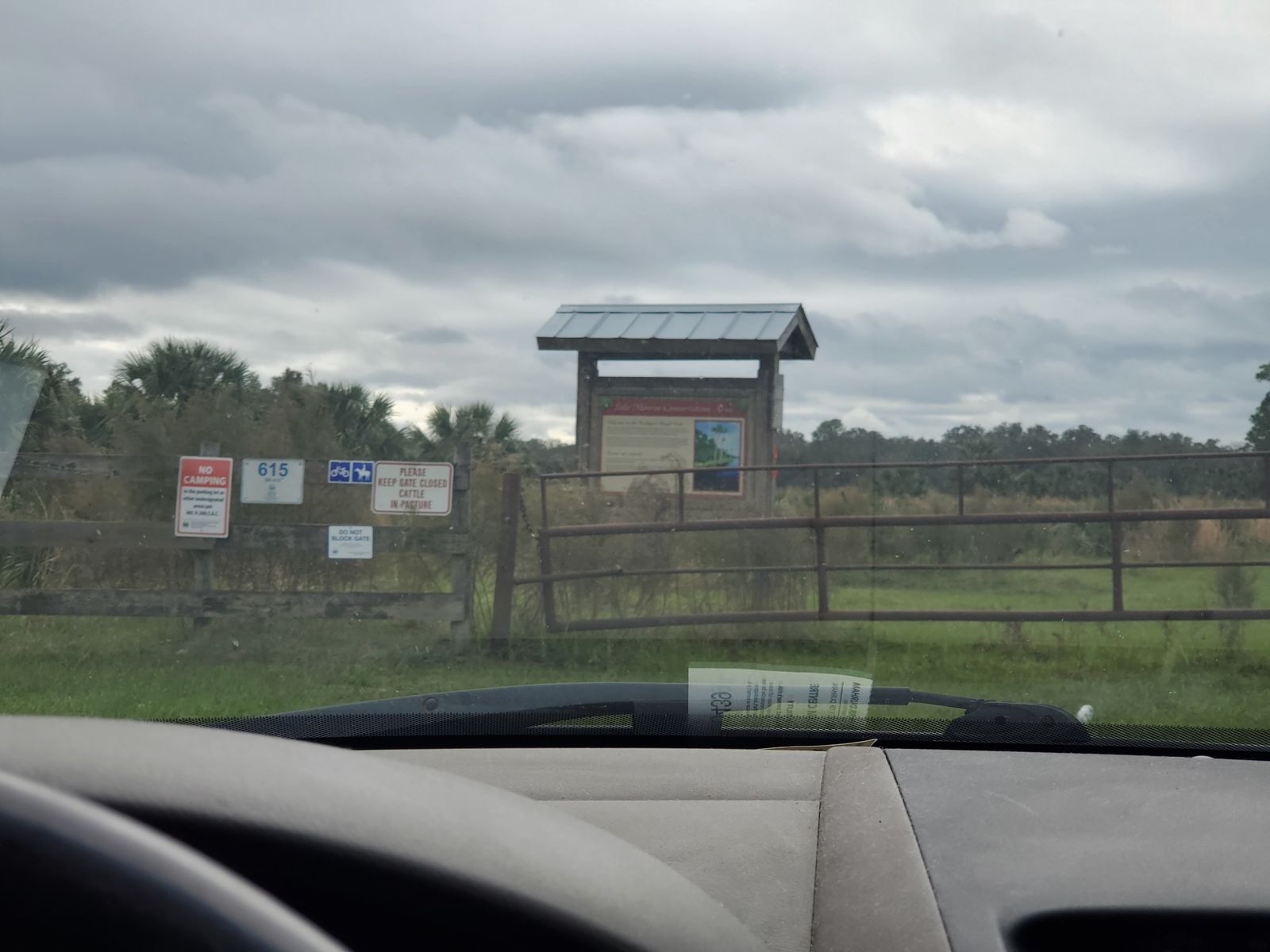
Our family went to Florida for the holiday season to visit family and decided to take the Auto Train from our QTH near DC down to Sanford, Florida just outside Orlando. We have taken it several times and it is a more pleasant way to get down to Florida then the marathon drive. We brought two cars with us this time, so I was driving my car along with my mother to make our way down to the Treasure Coast of Florida. Looking at the POTA map, as I frequently do, I realized that we would be very close to three different POTA references on our trip to Stuart. So I did a bit of research, planned a route, and decided to use the new mobile HF setup to see what kind of contacts we could get with a Yaesu FT-891, 100 W, and an ATAS 120A in a short period of time. I didn't want to take all day, just have a few pit stops along the way, so I was a bit worried that either band conditions or a scarcity of hunters would make getting 10 difficult.
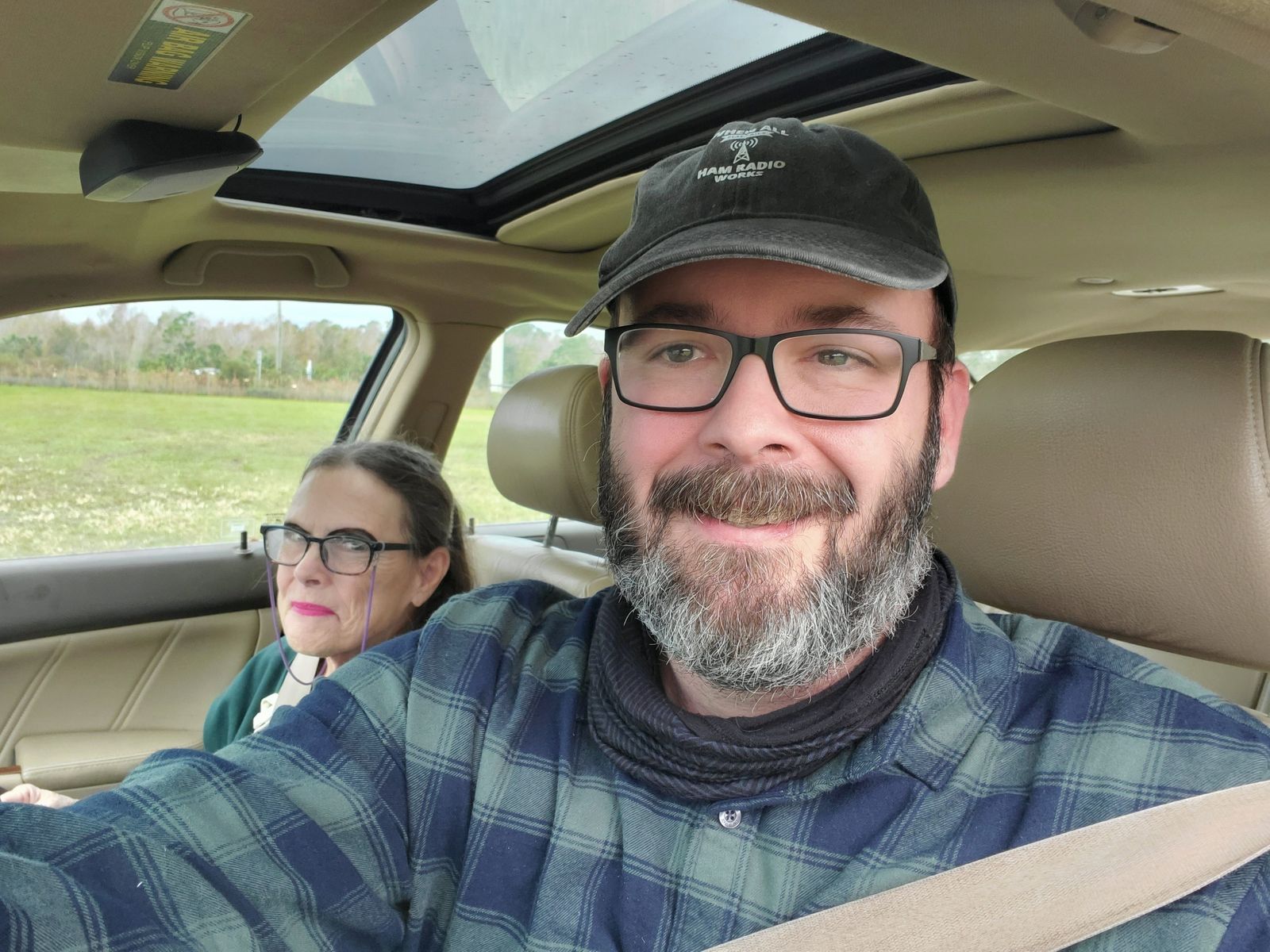
The park itself was quite easy to get to, just off a main road with lots of parking. I set up in an empty parking lot for the trailhead in the park. In terms of making contacts -- I should not have worried. At all. I spotted myself and started calling CQ on 20m and my first caller was Maryland at 529 both ways. Thankfully this park was low in noise, so that was workable, but then the pileup came with many strong signals. There were so many callers it was hard even getting a single character out of the warbling tone to limit the callers. In rapid succession I got North Carolina, Texas, Missouri, Virginia, Texas, North Carolina, Indiana, Pennsylvania, Illinois, Tennessee, Arizona, Arkansas, Kentucky, Kansas, New Jersey, Pennsylvania, Wisconsin, Illinois, Michigan, Kentucky, Idaho, and Delaware.
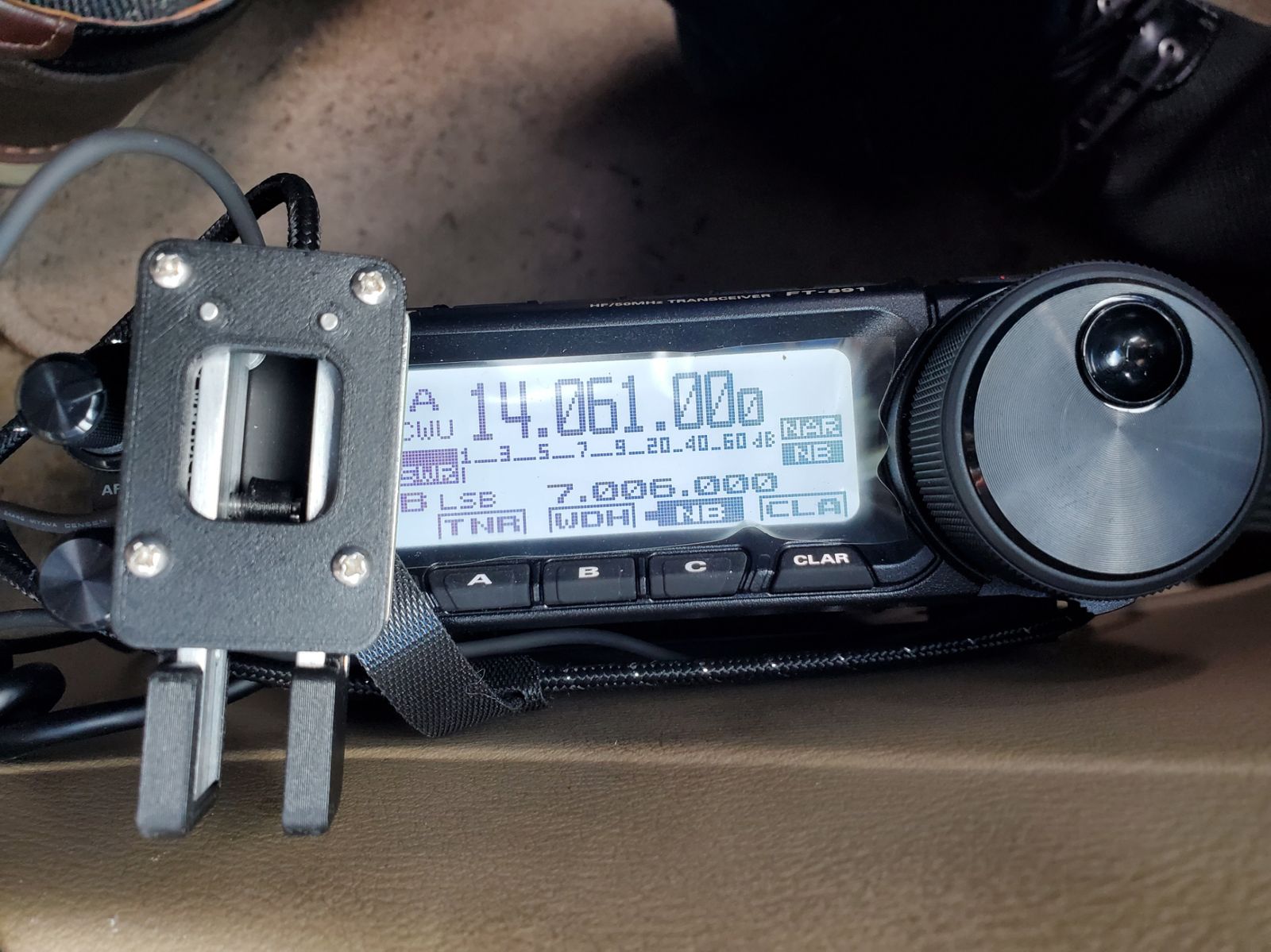
This mini-rove was off to an auspicious start. 24 QSOS on CW in 27 minutes, not bad. I was originally thinking of sticking to a lower number, but there were so many callers I felt bad calling QRT right away. Eventually, I had to do it, and we made our way off to the next park.
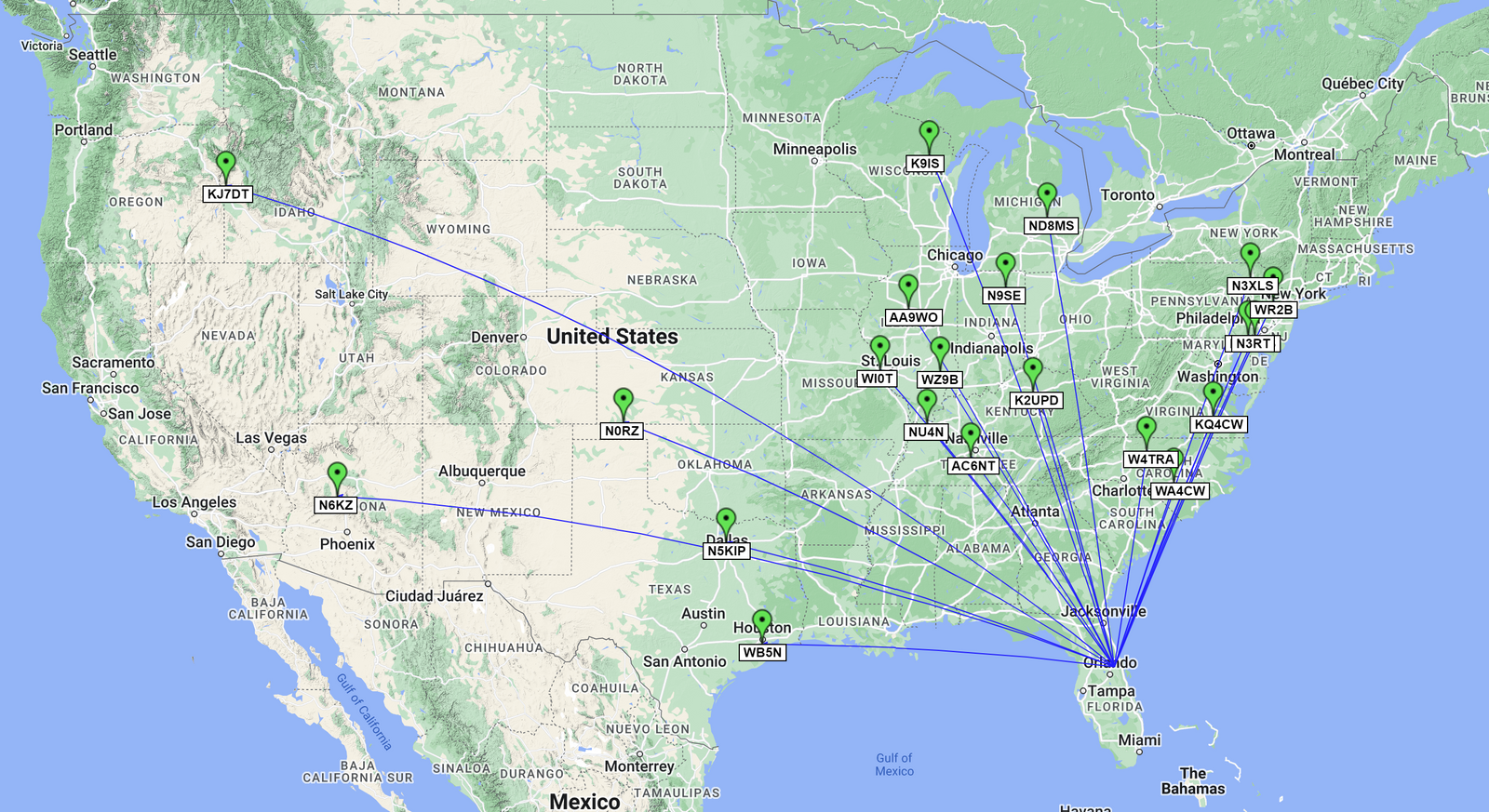
Activation QSO Map: Green Pins = CW / Blue Lines = 20m
Gear used in this activation
- Yaesu FT-891
- Yaesu ATAS 120A Antenna
- CW Morse SP4 POTA/SOTA Mini Morse Code Magnetic Paddle (N0SA Designed)
- 2006 Honda Accord EX V6
- Samsung Galaxy S10+
- HAMRS Logging App
Posted on December 24th, 2022
POTA Activation #31: Early Shift Commute Mobile 2-fer in DC in Captain John Smith Chesapeake NHT and Potomac Heritage Trail NST (DC) 12/20/2022
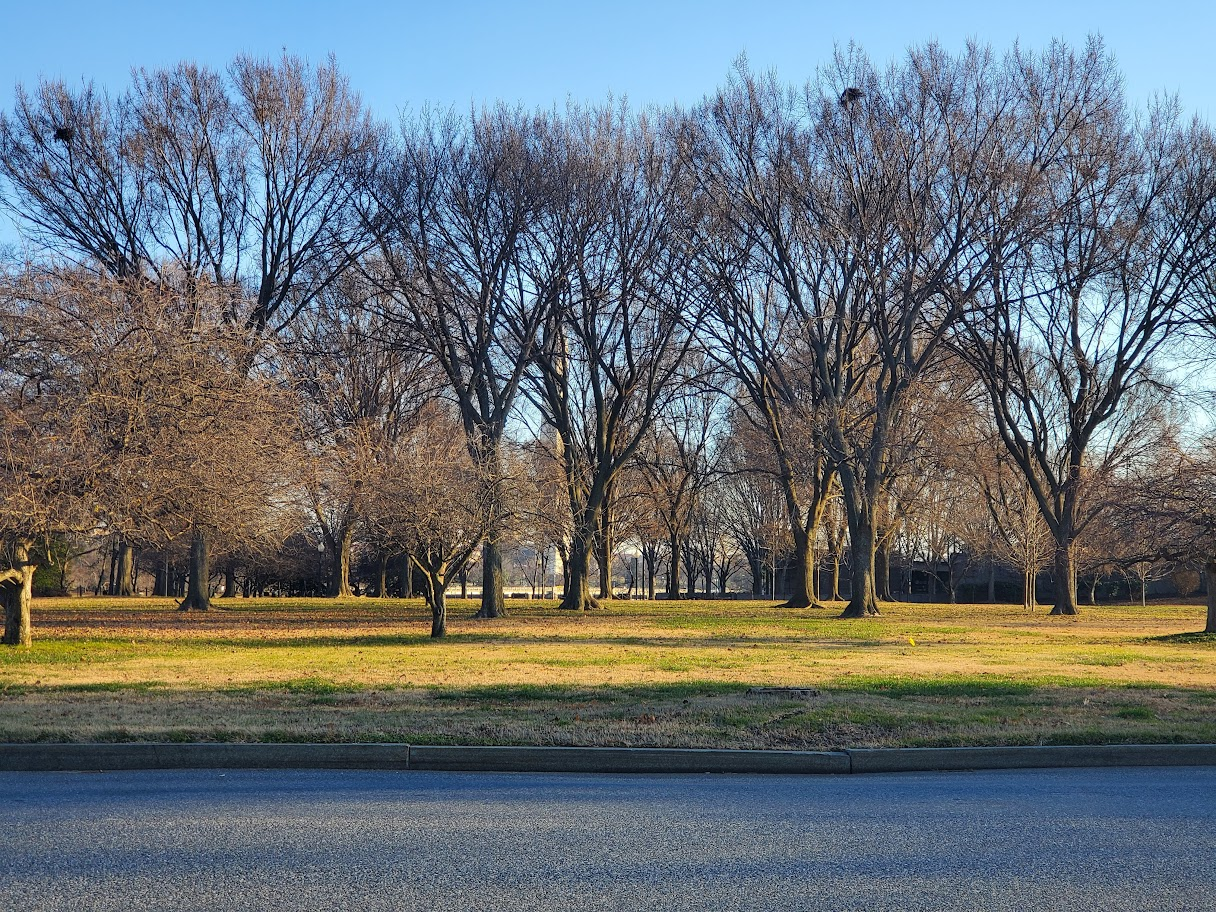
When it comes to playing radio on POTA, I am very fortunate to live in the Washington, DC area. There are a lot of parks close by to activate, and several of them overlap, so it is easy to get 2, 3, or even 4 -fers. Part of the fun for me is doing the research to find where I can activate to maximize those overlaps. Now that I have a mobile station in my car, there are a lot of activation options that I pass on any day that I go to work. A good chunk of my commute is on the George Washington Memorial Parkway (K-0670), which goes along the Potomac River which at various sections has the Captain John Smith Chesapeake NHT (K-4567) and the Star-Spangled Banner NHT (K-4581) in its waters (and 100 feet ashore), and at various sections is adjacent to the Potomac Heritage Trail NST (K-4564). So as you can imagine, I've activated those a few times (9 times for GWMP, 9 times for CJSCNHT, 7 times for PHTNST, and 7 times for SSBNHT).
I was thinking about places near my commute I could activate after work, and there are some good options out there, but as I was thinking about the logistics, I asked myself a question: Could I activate early in the morning before work? I decided to set the alarm early in the morning to see what I could do. When I left the house I saw the MUF was around 14 MHz, so maybe I could do a 40/30/20 activation. The sun had not yet made itself known, but as I got closer to DC I saw its amber and red hues ready to peek above the horizon. What I didn't know was whether there would be any hunters ready to contact me. Only one way to find out ...
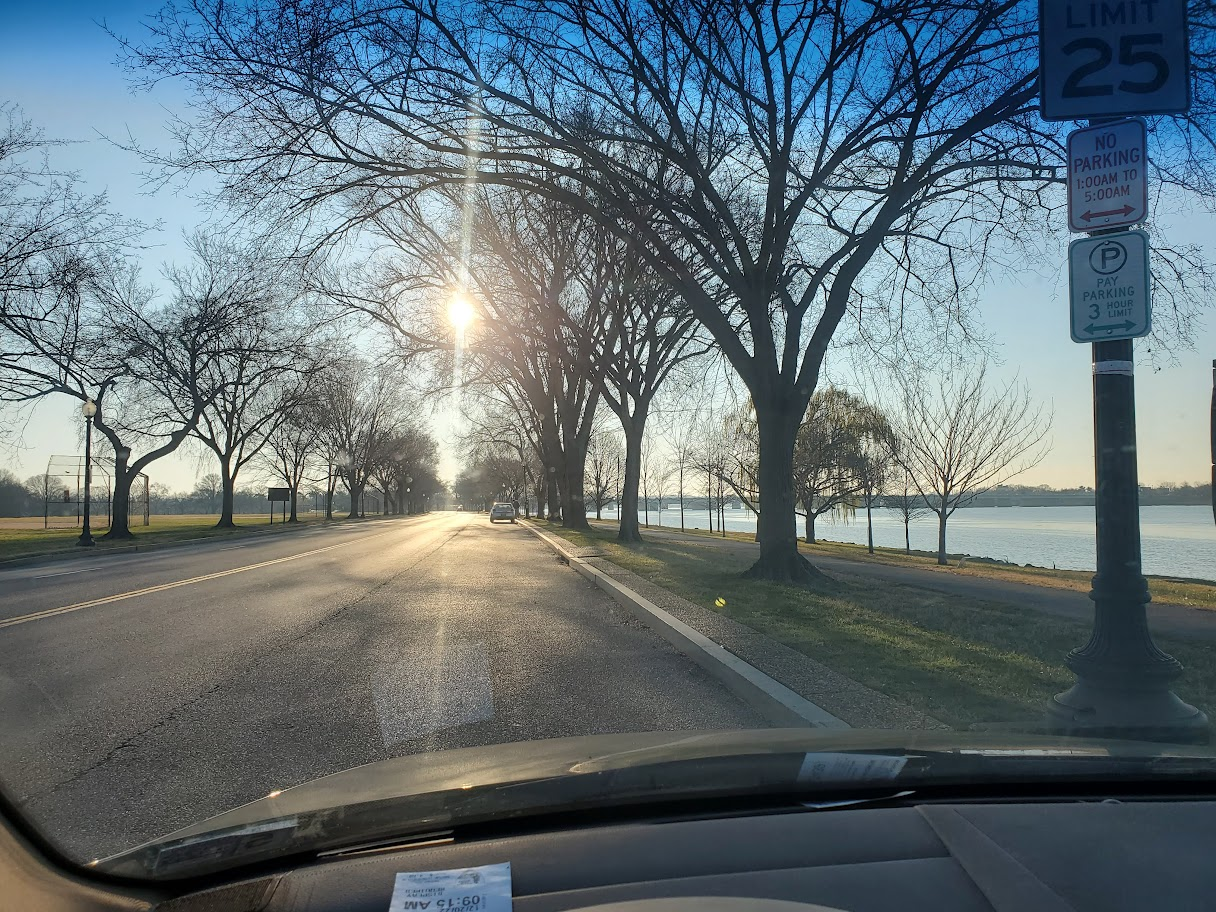
So I set off for what I thought would be an interesting 2-fer at Hains Point at the confluence of the Potomac and Anacostia rivers -- but when I got there, the road was closed. So, I had to think quickly. I re-routed to go North along the banks of the Potomac toward the FDR Memorial where there is a lot of parking alongside the river. At that location the river is coincident with the Captain John Smith Chesapeake NHT, and the road where I was parked is adjacent to the Potomac Heritage NST, so a 2-fer nonetheless.
I paid for parking (even though I was in the car, I figured it was the right thing to do) and got my setup ready. I tuned up the ATAS 120A on 40m, gave myself a spot, and in short order made my first contact with a station in Texas. He would call me several times on this activation on the same frequency -- perhaps he didn't hear my confirmation that I got him (he was 599 and I was 449 from him). Nonetheless, he's in the log. Then I got contacts from New Hampshire, Kentucky, Pennsylvania, North Carolina, New York, Georgia, Alabama, Georgia, Maine, North Carolina, Georgia, Pennsylvania, Georgia, Massachusetts, New York, Alabama, Michigan, North Carolina, Virginia, Indiana, New York, Ohio, Virginia, and Pennsylvania. The contacts were pretty much non-stop. So much for hunters sleeping in! In fact, I tried 3 times to QSY to 30m and immediately people came back with calls (so of course I answered). On the 4th try, nothing was heard, so off to 30m I went.
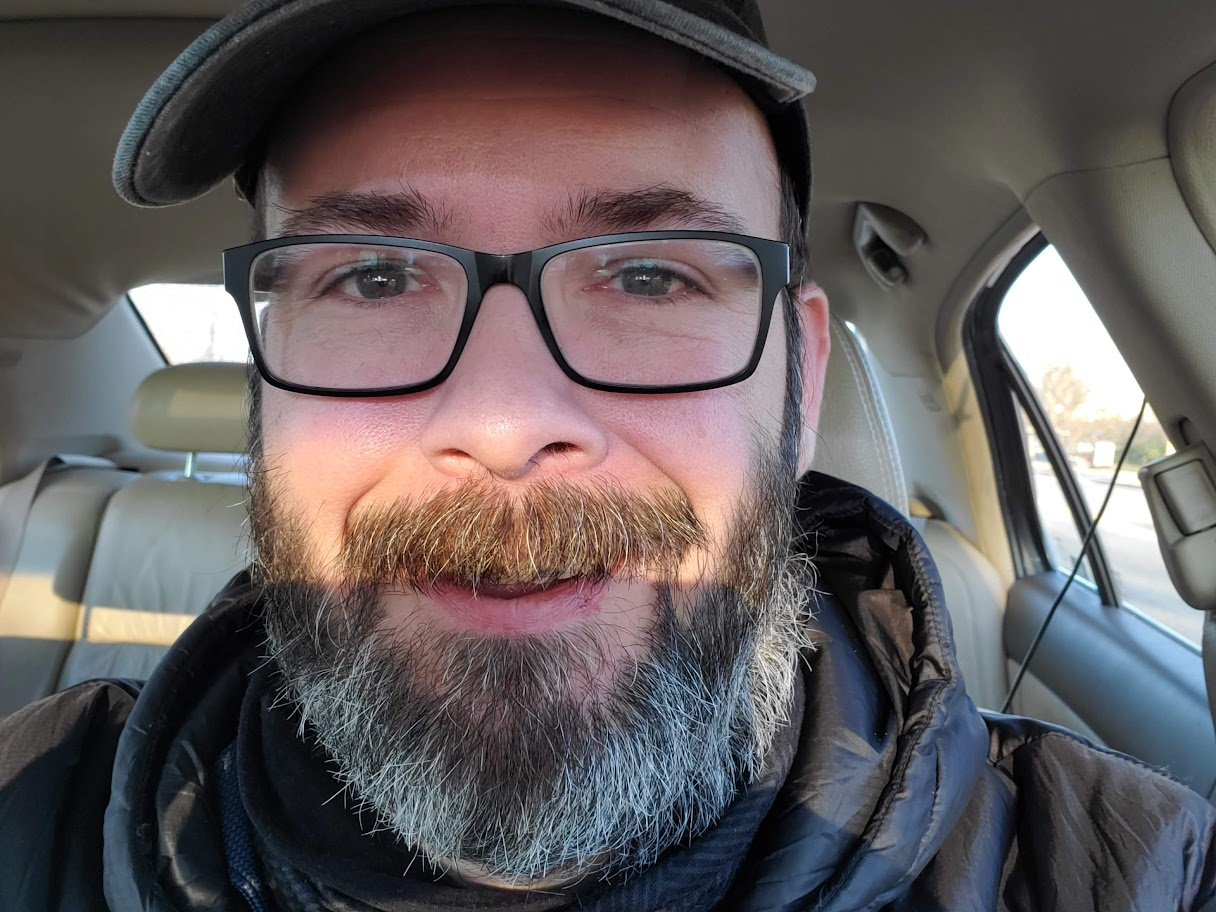
Within a minute or so the Reverse Beacon Network spotted me on 30m and I got a call from a station in Michigan who got me earlier on 40m (always fun when propagation lets it happen). That contact was followed by Alabama and Indiana. I noticed something quite strange ... every time a Metrobus drove by I got astonishingly high amounts of noise, sometimes up to S9 (and I had the noise blanker on). So it was getting tough as the busses rumbled by to hear the weak signals, so I decided to make one last move up to 20m.
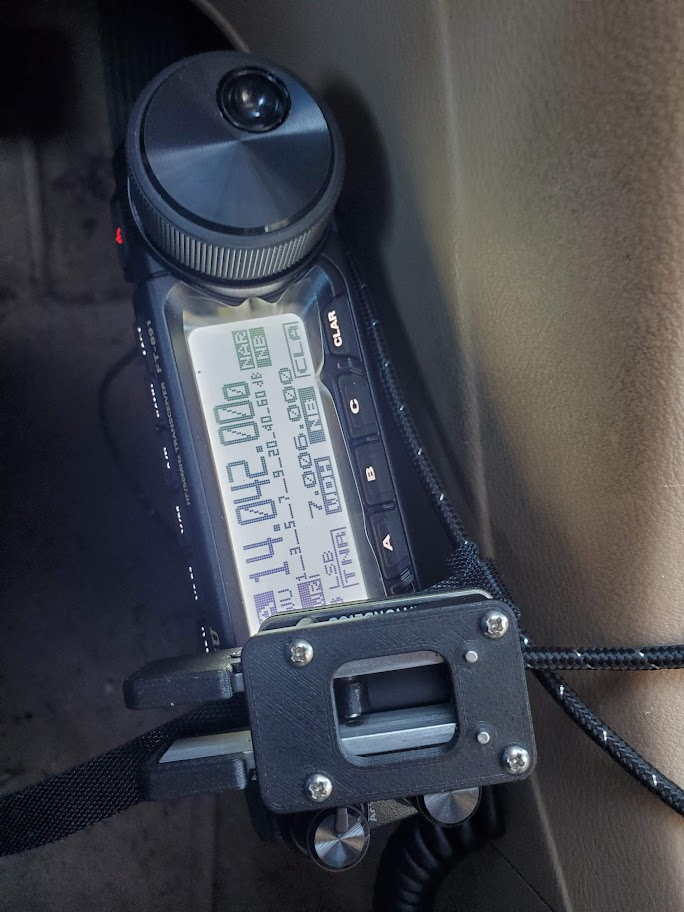
I started calling CQ and so quickly did I hear a response, they must have beat the RBN to the punch, I heard a US station operating in the Dominican Republic (that pin didn't show up on the QSO map below, but imagine a blue line down there all the same). I had a bit of a challenge getting his HI7/ prefix on his call, but he was quite patient. That would be my only DX of the day, very fun. Next I got calls from Alabama, Florida, Georgia, Arkansas, Michigan, Virginia, and Florida again. I had a bit of a pause in the calls, looked at my car's clock, and realized it was time to call QRT and head into the office. Another 2 activations in the books.
All-in-all I made 39 contacts on CW (9 on 20m, 3 on 30m, 27 on 40m) and still got in to the office on-time. What a fun way to start the day! I think it also helps a bit that I was activating from DC -- being relatively small with only 30 parks and surprisingly lightly activated, hunters get really excited when DC gets on the spots. Also, being able to run a full 100W didn't hurt, either. Everything went pretty well. I still have to work on bonding (have gotten some of the materials I need to use, so hope to work on that soon) to get the SWR down closer to where I'd like it to be, but that as mentioned, it is workable where it is, and clearly I'm getting out.
The pages for the the two parks aren't clear, but at least some of these contacts are likely to count as my first Early Shift contacts -- as the system processes the stats this evening it will be interesting to see how they're tabulated. If 1300 UTC is the cutoff (as it is for smaller local parks - the page for these two says coming soon...) then I got 18 contacts before the cut-off in 2 parks, so likely 36. I know they changed how they did Late Shift (and added Early Shift), so I believe it is now number of contacts not total activations (how they used to do it), but we'll find out.
Being able to do impromptu activations like this really changes the game for me. I'm excited to be able to do more of this as my schedule allows. I hope to see you soon down the log and in the parks.
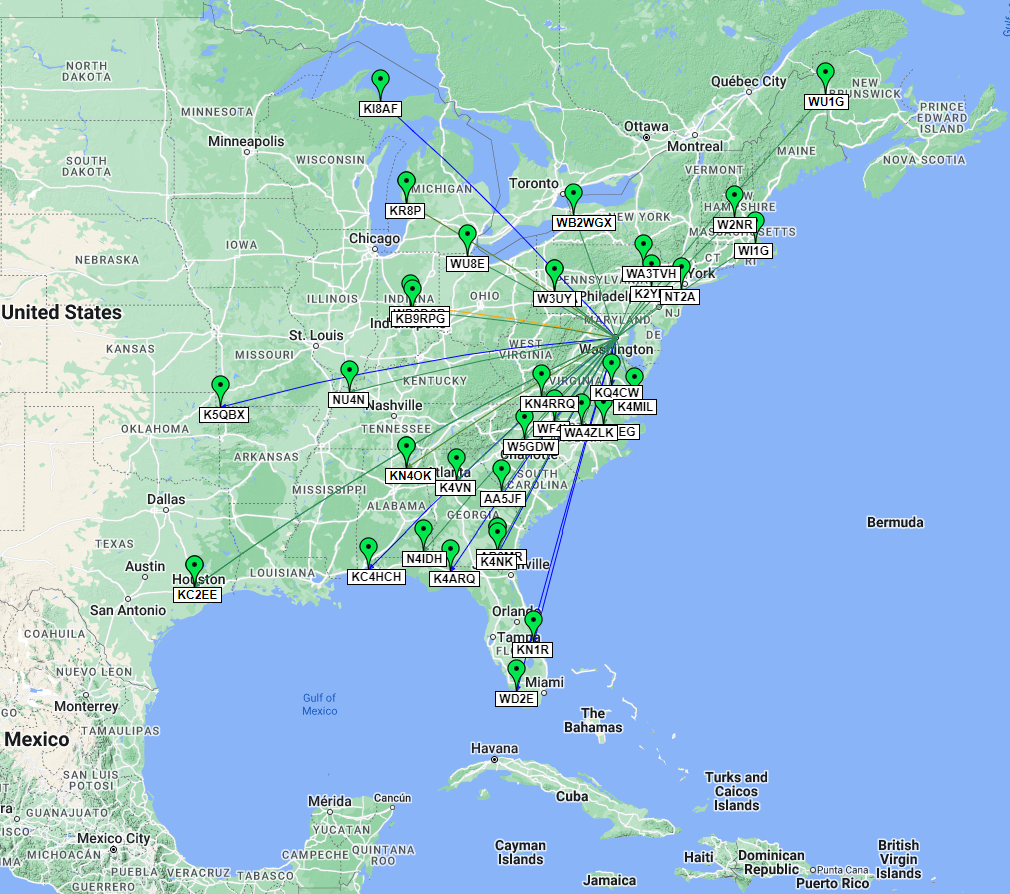
Activation QSO Map: Green Pins = CW / Green Lines = 40m, Orange Lines = 30m, Blue Lines = 20m
Gear used in this activation
- Yaesu FT-891
- Yaesu ATAS 120A Antenna
- CW Morse SP4 POTA/SOTA Mini Morse Code Magnetic Paddle (N0SA Designed)
- 2006 Honda Accord EX V6
- Samsung Galaxy S10+
- HAMRS Logging App
Posted on December 20th, 2022
POTA Activation #30: Strange New Worlds at 100 W - Activating a 4-fer with My New Mobile HF Station in George Washington Memorial Parkway, Captain John Smith Chesapeake NHT, Star Spangled Banner NHT, and Potomac Heritage NST (VA) (12/16/2022)
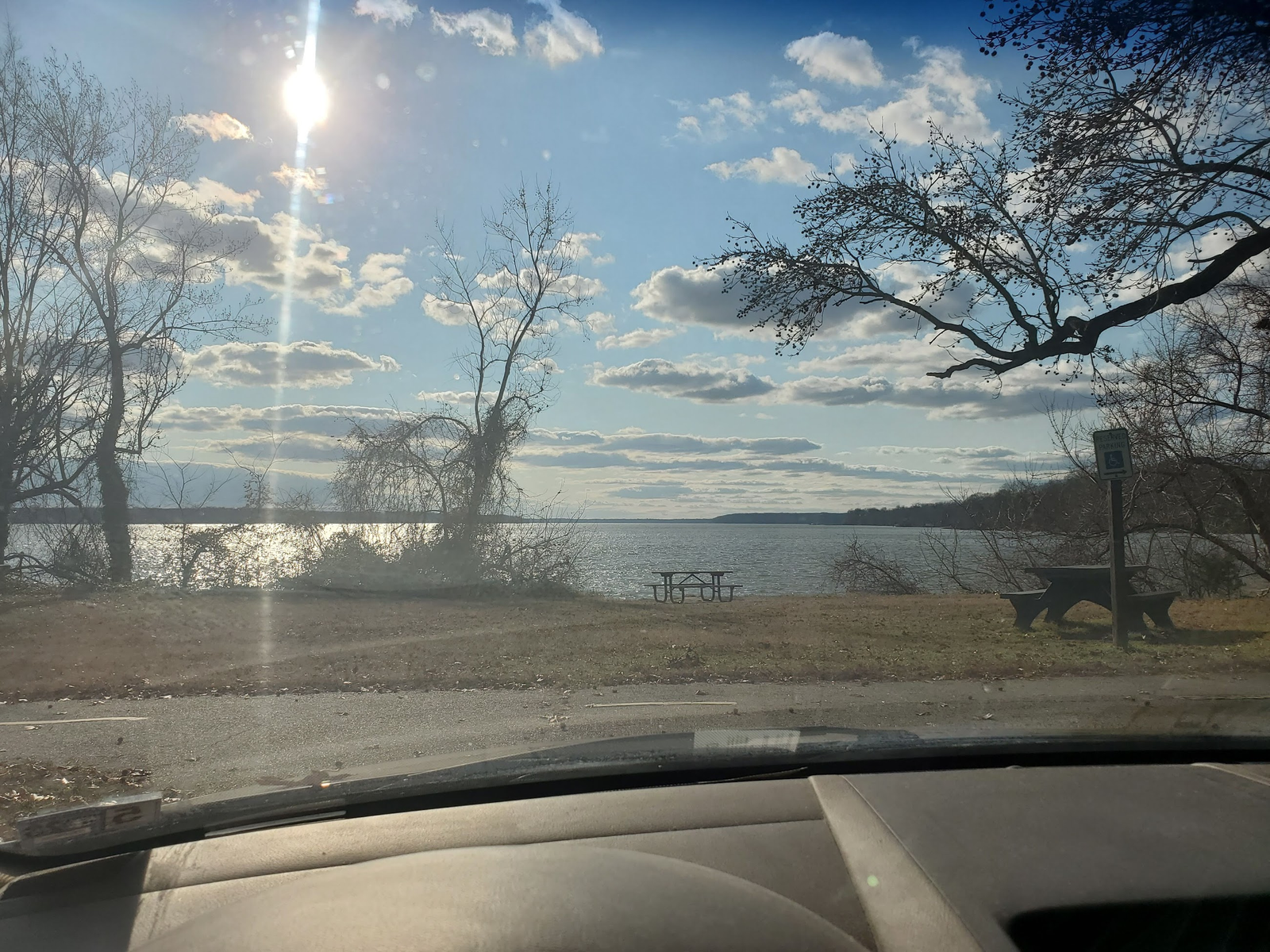
If you've been reading this blog, you have probably noticed I really enjoy activating Parks on the Air. I'm a fairly hardy soul who has gone bike commuting in snow and temperatures below 3 degrees F and camped in a hammock in the snow, but in the late Fall and Winter, the conditions outside aren't always cooperative with my goal to get on the air without damage to myself or my equipment. So, I've been long considering getting myself a mobile HF setup so that I can activate from my car (or just operate from there in general). I still like getting out into nature, finding creative ways to get an antenna into a tree or setup on a tripod, setting up an operating position in a good spot, and feeling the sun beating down and the breeze against my face. But having the ability to activate whenever I want, in whatever weather I want, from the comfort of my vehicle is a bit of a game changer.
As I started researching what my options were in the world of mobile HF radios, there were a few that stood out. Ultimately, due to supply chain issues, only one was easily obtainable. In the unobtainable category (at least on the new market) was the Icom IC-7100. I really enjoy my IC-705, and the IC-7100 has HF, VHF, and UHF just like its QRP cousin. Unfortunately, it is out of stock nationwide, and although HRO says they expect it in May on their web site, privately they say it could be longer, if ever. The 7100 has been out for a while, and if the supply issues continue, they may just replace it. Additionally, if you want an easy multi-band antenna, you'd probably want a screwdriver, but ones like the Tarheel are out of stock in most outlets. Unobtanium.
So that left one great combination that is a perennial favorite in the POTA community: the Yaesu FT-891 radio and the Yaesu ATAS 120A antenna. When Black Friday arrived, Ham Radio Outlet had a great deal on the radio cutting $40 off of the asking price, and everything was in stock! So I pulled out my credit card, filled my electronic cart, and hit submit. Then I got a phone call from HRO -- turns out they just sold out of the radio. They could ship me all the other things, but the radio would be back ordered. Bummer. They didn't know when they would get stock, but I decided to wait it out. A few weeks later, I got a shipping notification and the 891 showed up at my door.
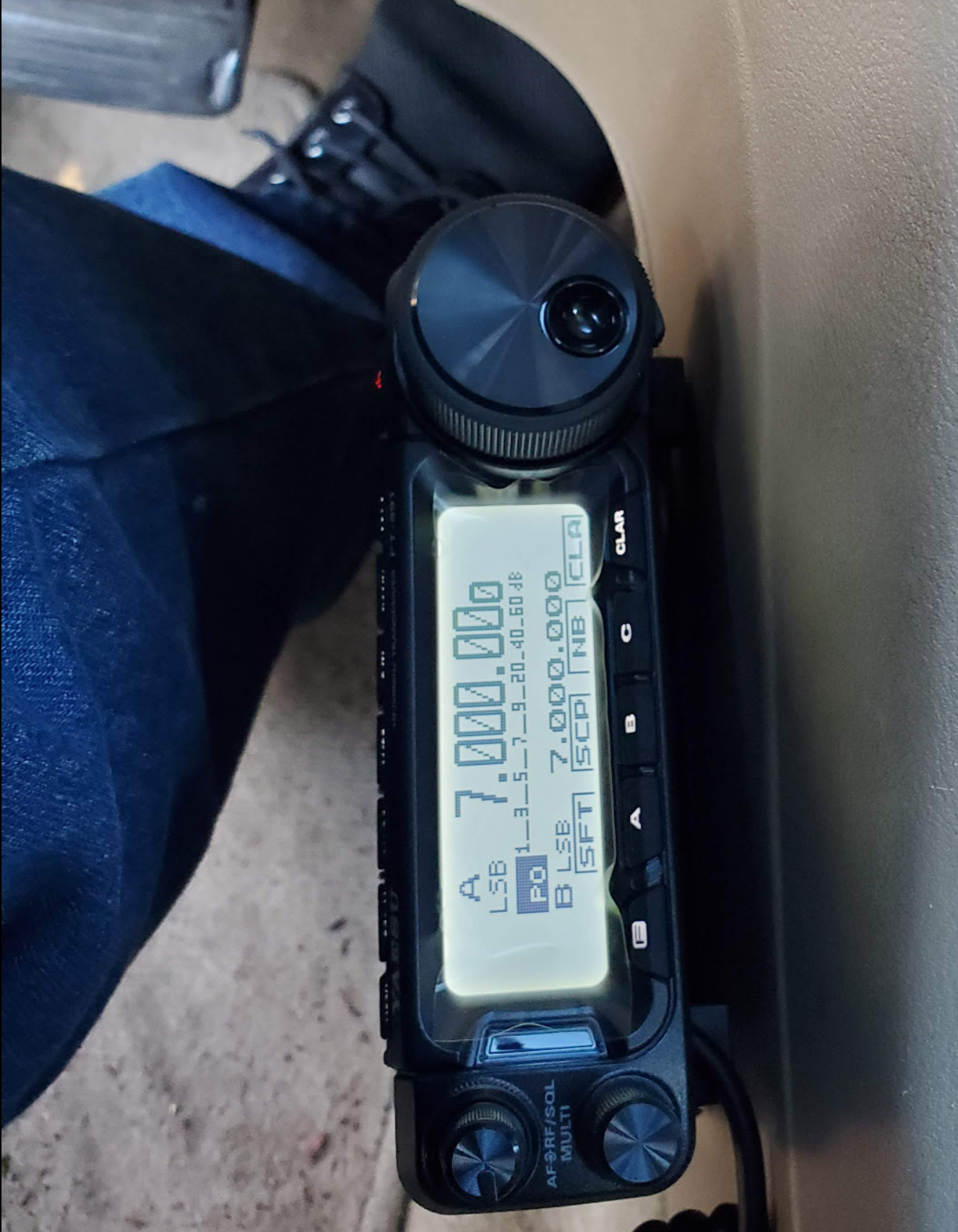
Now I had to figure out how to install the thing. My buddy Gersohn, KO4IUK, graciously offered his assistance in getting everything installed. We tried valiantly to find the pass-through grommet that YouTube assured us was to be found by the foot well of my 2006 Honda Accord, but alas it was not to be. I wasn't flexible enough to warp space and time to find it, so I reached out to a car audio and security systems installer near where I lived, Car Trendz. They were incredibly helpful and for a reasonable fee routed the power cables through the firewall, so my radio could have power. They also gave me a hand with putting on the bracket for the radio. Once I had that in place, I went back home and put the radio into the bracket and connected it to power.
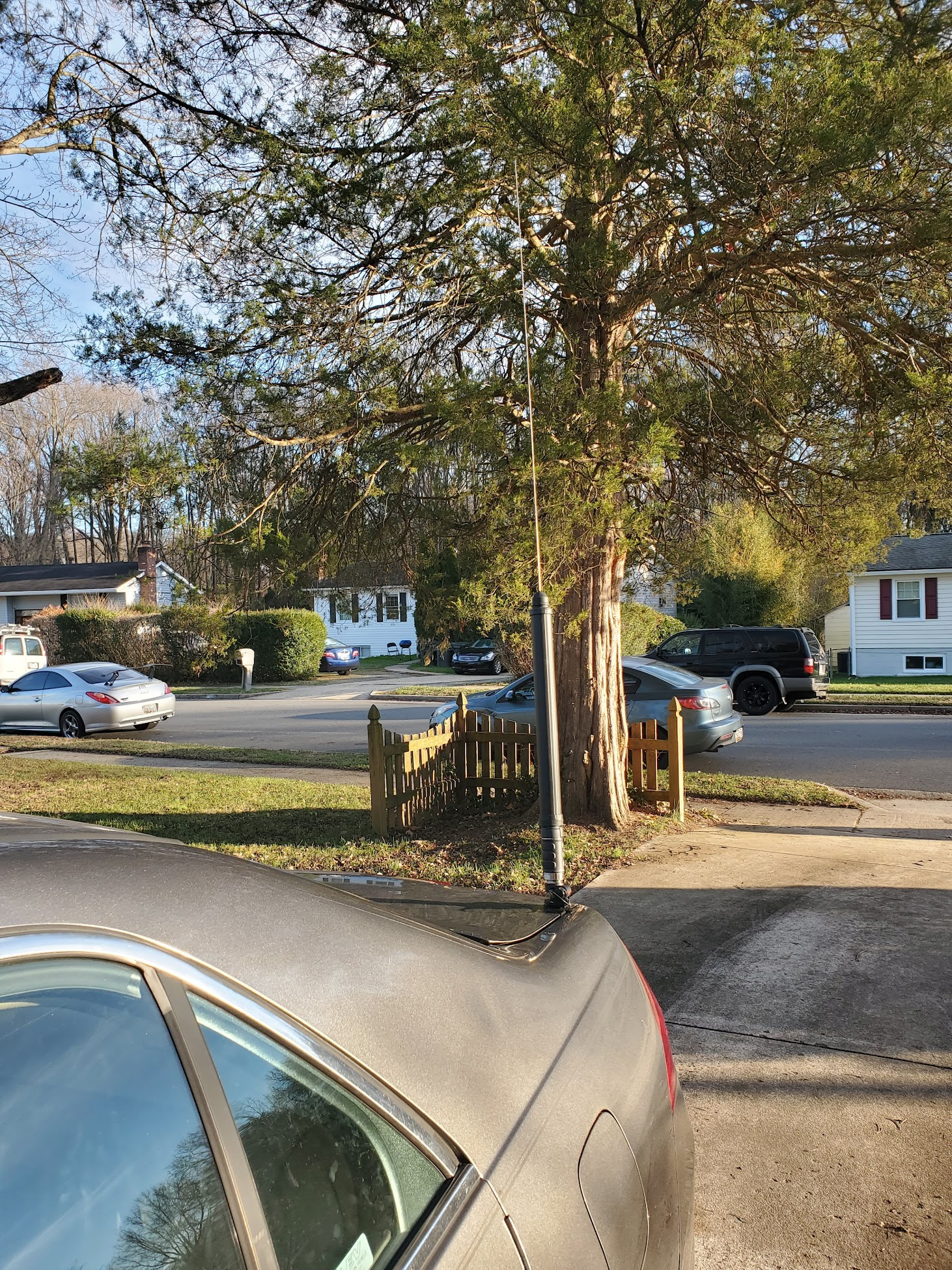
Next I had to install the antenna, the Yaesu ATAS 120A, a vertical capable of operating from 40m-70cm. For this purpose, I had purchased the Diamond K400C lip mount to attach to the trunk of my vehicle. The ATAS 120A is a large antenna weighing around 2 lbs and with a considerable wind load, so from what I had read, a good mount was paramount. The K400C came well recommended from Yaesu for the task. The installation of the mount was quick and straightforward with 4 grub screws clamping it to the trunk lid where it meets the rear of the car. An SO239 UHF connector provides the connection to the antenna, which simply screws on to the base. The antenna itself came basically pre-assembled, with the only task for the operator being to install the whip with a hex screw and its accompanying weatherproof cap. So far, so good.
The one last thing I had to do was connect the antenna to the radio. For this, I needed to make a cable. Unfortunately, although I had connectors, and I had cable, I didn't have the right tools for the job (I had crimp connectors, not solder-on ones). Once again, Gersohn came to the rescue and provided time, tools, and some extra materials to help me build the cable. I'm very grateful for his help. So after a series of false starts and setbacks, we finally had a radio that was powered and connected to an antenna properly mounted to my car. Time to get on the air. Time was getting short, so we looked at POTA spots while parked in Gersohn's driveway, and I made contact on 17m a station in Kansas and on 40m with a station in Virginia. Success!
SWR was higher than I'd like, but under 2:1 -- I'm going to work on improving the bonding of my vehicle -- but we were in a good place. So, I decided to use my lunch hour today to give the new rig its first activation at a 4-fer location just a few minutes from my house. The location could not be more ideal -- 4 parks all within proper range of the parking spot. I decided to take my new CW Morse SOTA/POTA paddle designed by N0SA with me and just use the HAMRS app to log. Ultra fast and light (well, if you don't count the vehicle ...).
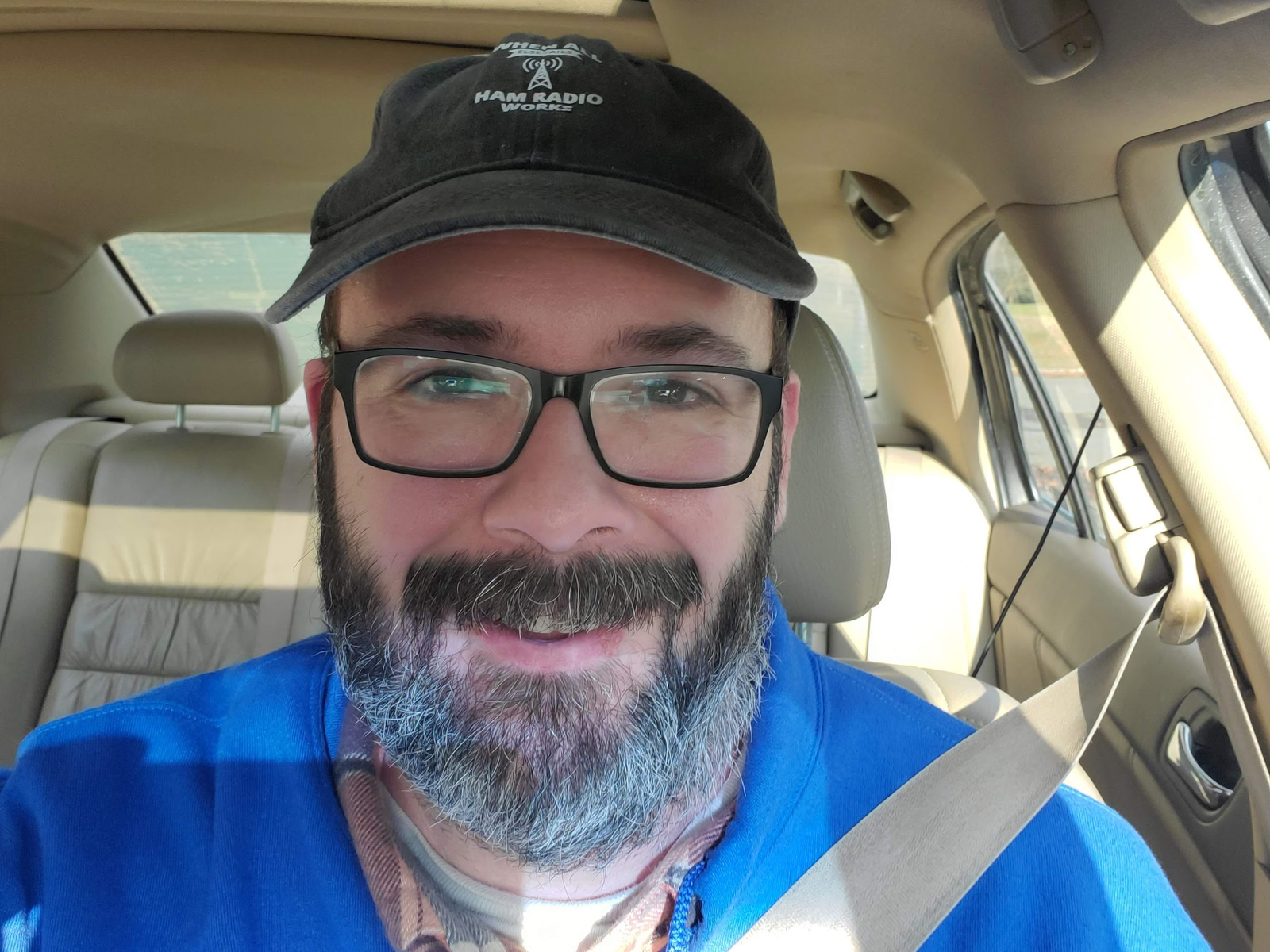
I figured out how to work CW on the new rig, spotted myself on the 20m band, and I was off. It didn't take long for the pileup to commence. I found out (the hard way) I didn't quite have the paddle magnetic returns properly configured, so my code was a lot sloppier than I would like, but as always, the hunters were gracious and patient. When I got back home, I upped the magnet force so that the bouncing I experienced should be resolved in the future. Being used to operating POTA with 10W maximum output power, 100W was a whole new ballgame. I probably only called CQ around 5 times in the hour I was out there, the contacts just kept coming. Eventually, as my time was growing long, I had to call QRT to get back to working at home.
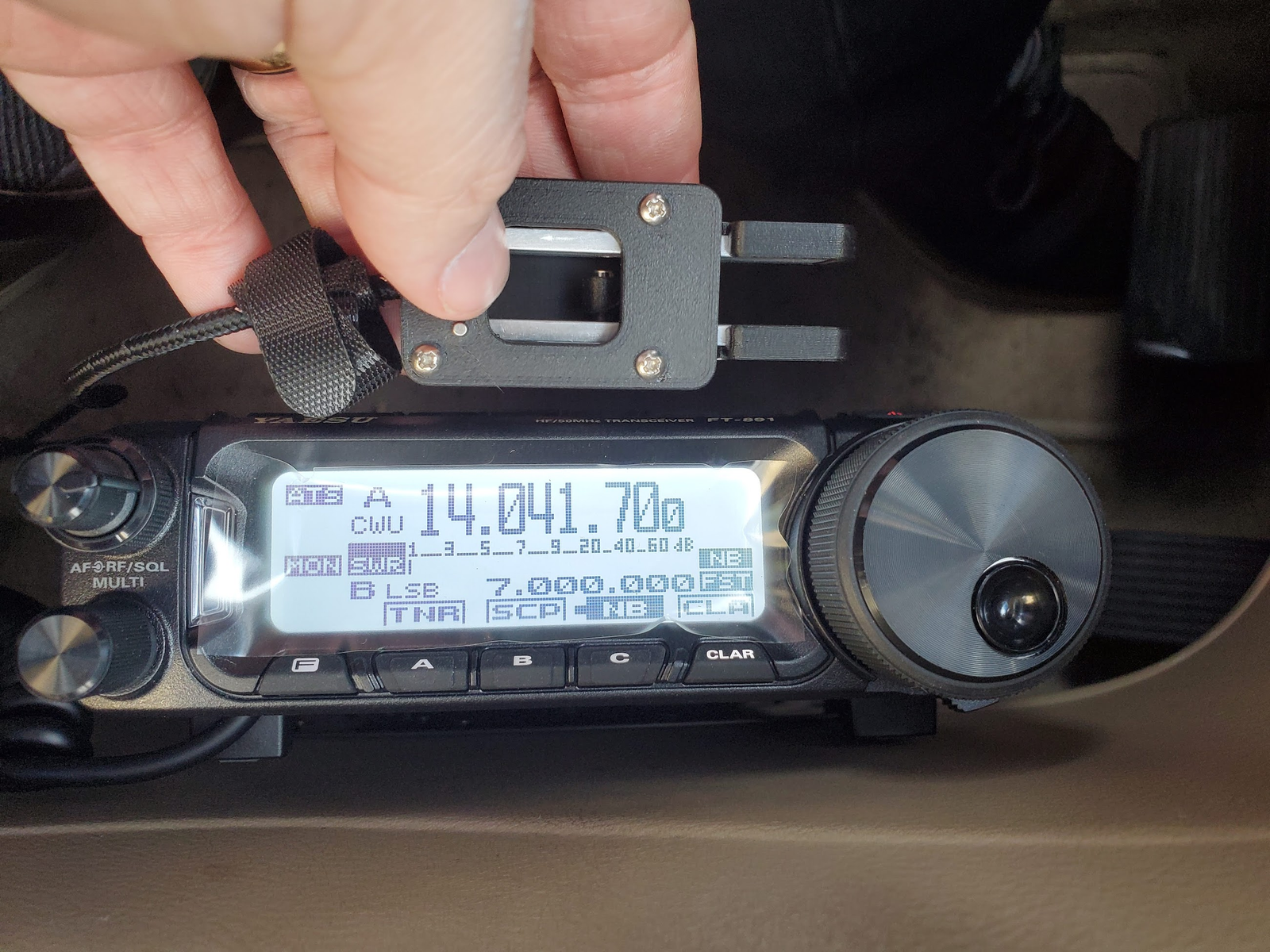
My first caller was in Michigan who gave me a solid 579 report, followed by a station in Idaho who gave me a 599. Then came a pair from Texas, Florida, Tennessee, Indiana, Wisconsin, North Carolina, Georgia, Colorado, Florida, Georgia, Texas, Colorado, Tennessee, Texas, and Georgia. Next I was treated to a call from my buddy Ed, W4EMB, in Tennessee, followed by Quebec (Canada), Tennessee, Illinois, Florida, Tennessee, Georgia, Mississippi, Michigan, Ontario (Canada), Florida, a pair from Illinois, Wisconsin, Virginia, Georgia, another pair from Tennessee, Texas, Florida, MIchigan, Indiana, Wisconsin, Oklahoma, and one more call from Michigan before I had to call QRT. In all I had 45 QSOs in 4 parks (180 total, in the POTA accounting) in just under an hour from the comfort of my car.
So much fun.
I can't wait to do it again ... and with a mobile setup, I would imagine that I won't have to wait long! Impromptu activations are now simply a short drive away.
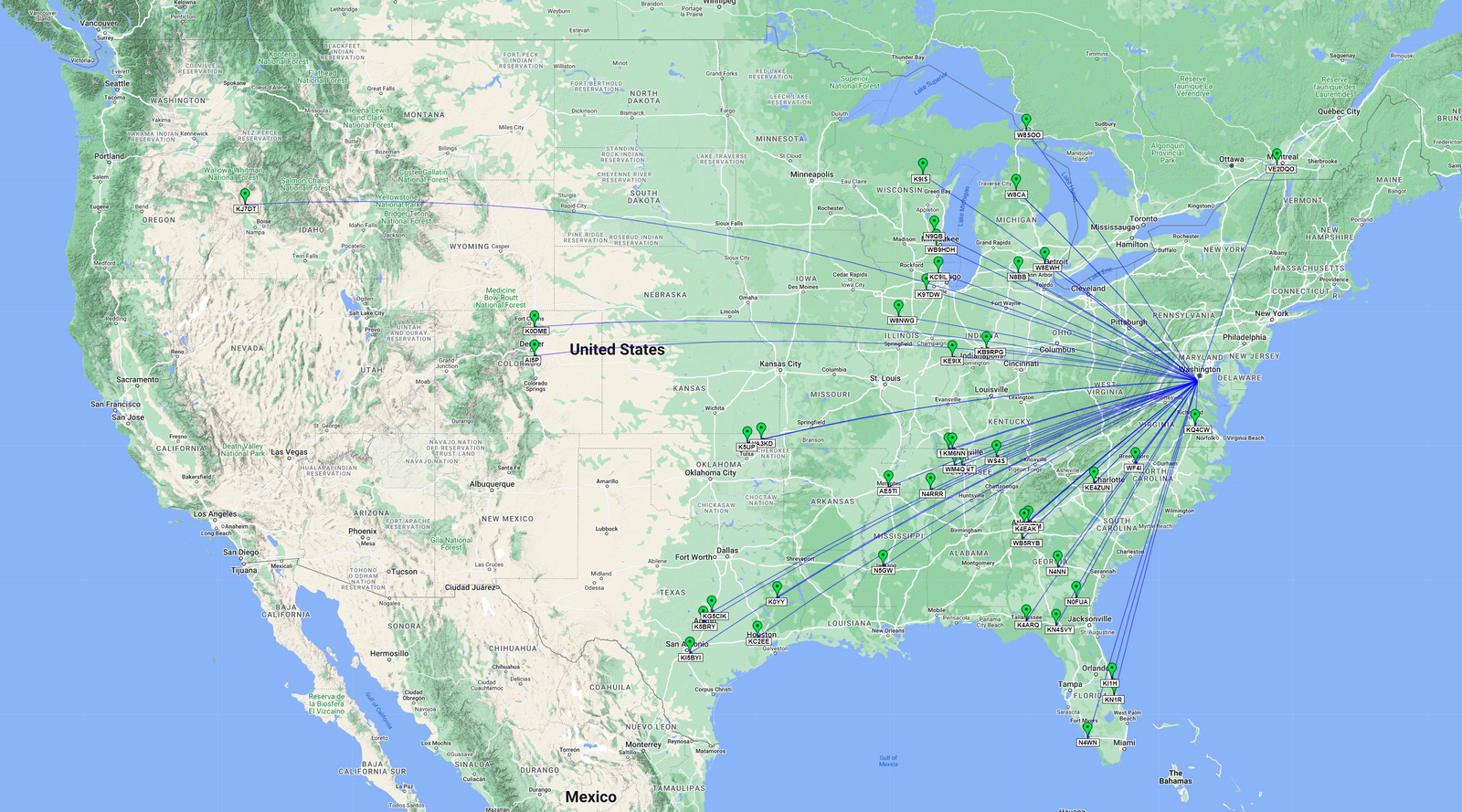
Activation QSO Map: Green Pins = CW / Blue Lines = 20m
Gear used in this activation
- Yaesu FT-891
- Yaesu ATAS 120A Antenna
- CW Morse SP4 POTA/SOTA Mini Morse Code Magnetic Paddle (N0SA Designed)
- 2006 Honda Accord EX V6
- Samsung Galaxy S10+
- HAMRS Logging App
Posted on December 16th, 2022
POTA Activation #29: A 4-fer on 7 bands with Gersohn in George Washington Memorial Parkway, Captain John Smith Chesapeake NHT, Star Spangled Banner NHT, and Potomac Heritage NST (VA) (10/30/2022)
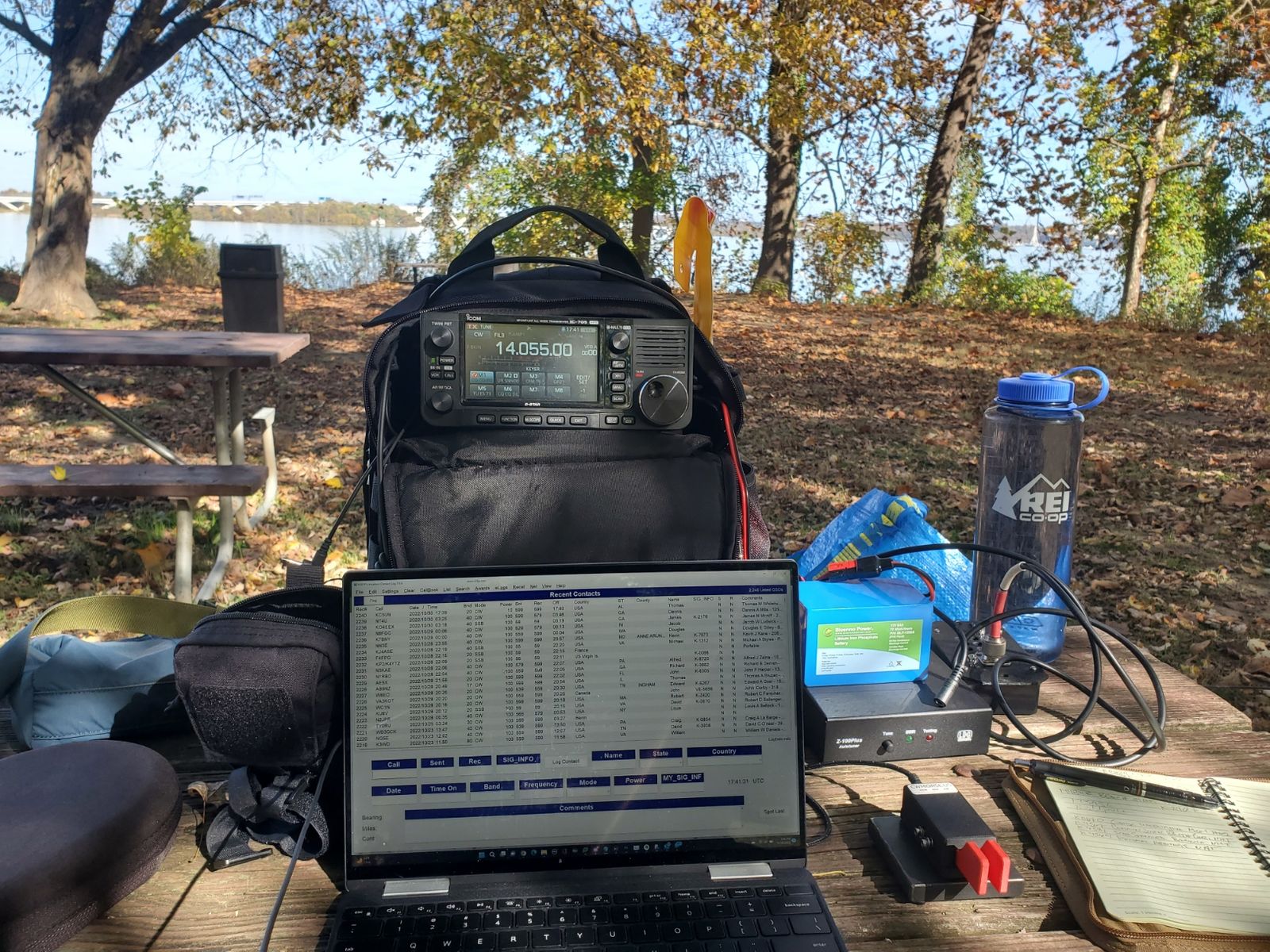
As sunspot cycle 25 has been coming into its own recently the higher bands have been coming alive with the sound of Amateur Radio. On the day before Halloween, the DC area was having a particularly pleasant fall afternoon, so I decided to get out into Belle Haven Park inside the George Washington Memorial Parkway and meet up with my buddy Gersohn for some fun in the Autumn sun on the bands. As is frequently the case, I setup where several POTA park entities overlap, so I was also adjacent to the Captain John Smith Chesapeake NHT, the Star-Spangled Banner NHT, and the Potomac Heritage Trail NST. Four Parks for the price of one.
Since the bands were active, I decided to use my 40-10m EFHW teamed with my antenna tuner to keep things nice and frequency agile. I started out on 20m CW since I figured when Gerson arrived, he might want to use that band. I got my first response at 17:39Z from a station in Alabama and then in short order made contacts with South Carolina, Georgia, Michigan, Texas, Ontario (Canada), Illinois, Missouri, Indiana, and Texas. Then I was very pleased to hear my buddy and fellow Long Island CW Club member Ed, W4EMB, giving me a call from Tennessee. It was great to get him in the log. After Ed, I got calls from Texas, Florida, Wisconsin, Michigan, Tennessee, Illinois, and Indiana.
Gersohn arrived and we chatted for a bit and he setup some of his equipment. I decided to implement my plan to work a bunch of bands and gave 10m a go on CW. Right away I picked up New Mexico, Texas, Montana, France, another hunter from Texas who worked me a second time on this second band, and Northern Virginia. After things slowed down a bit, I moved down to 12m and didn't get any CW callers. I really wanted the band though to add to my N1CC award titles, so I pulled out FT8 on the laptop and contacted Minnesota, and Texas.
Next up it was time to get back on CW and move down to the 15m band. First to respond was an operator across the country in Washington State followed a couple minutes later by Arkansas. Things didn't seem to be as active on 15, so I moved down again to the 17m band where my first contact was with North Dakota, followed by Idaho, Texas, South Dakota, Alabama, and Florida. Hard to believe I got both Dakotas on a single band within a few minutes of each other!
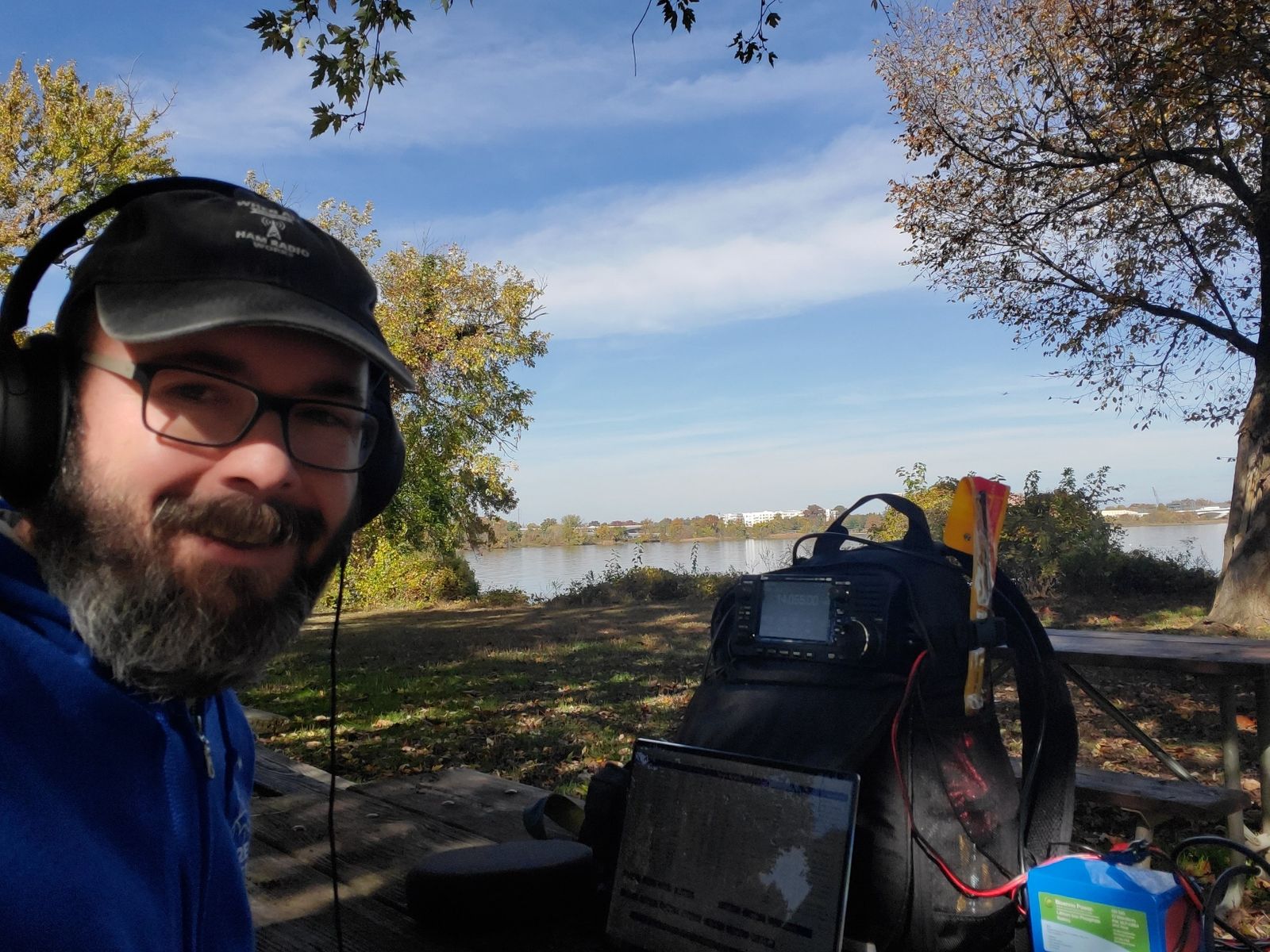
After things slowed down a bit I moved to my 6th band, old reliable, the 40m band. My first response was from Tennessee, then Pennsylvania, Maryland, Ohio, another Pennsylvania, New Jersey, Tennessee, Massachusetts, Ontario (Canada), Pennsylvania, Florida, Illinois, New Hampshire, and a second contact from a station in Michigan. As time was getting late and I had to prepare to go QRT, I decided to give one more band a try, 60m. In a few minutes I had replies from New York, Georgia, and a final contact with North Carolina.
What a fun activation! I'm really enjoying being able to activate on the higher bands. The different skip distances allow for some states and DX that I don't usually get in the logs. At the end of the day, my 10W and a wire netted me 59 contacts in about 2:30. I really enjoyed being out with Gersohn just a few feet from the Potomac at one of our favorite activation spots.
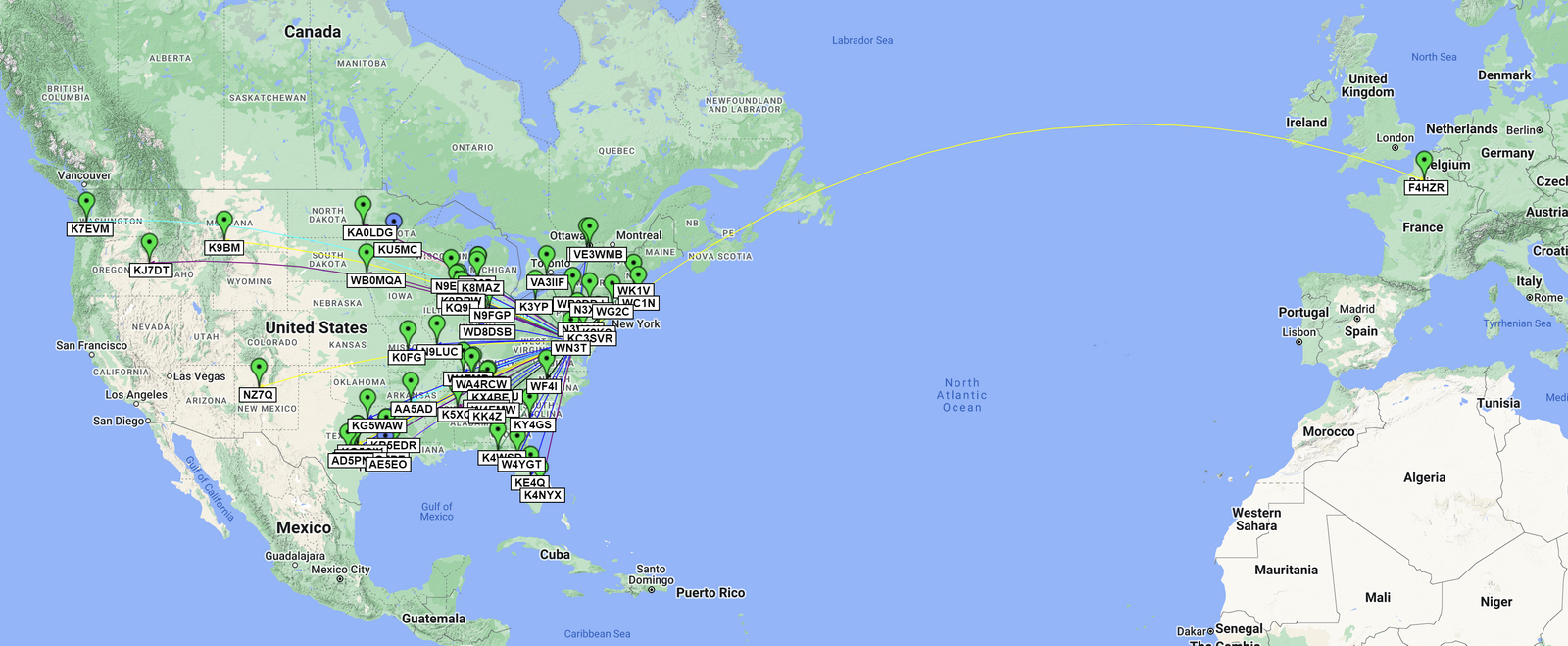
Activation QSO Map: Green Pins = CW, Blue Pins = FT8 / Black Lines = 60m, Green Lines = 40m, Blue Lines = 20m, Purple Lines = 17m, Pink Lines = 12m, Cyan Lines = 15m, Yellow Lines = 10m
Gear used in this activation
- Icom IC-705
- MFJ 1984 MP End-Fed Half Wave Antenna
- LDG Z100 Plus
- CW Morse Pocket Double Paddle Morse Code Key with Magnets
- CW Morse Steel Base for Pocket Paddles
- RigExpert Stick Pro Antenna Analyzer
- Icom LC-192
- Bioenno 12V 6Ah LiFePO4 Battery
- Sony Headphones
- Dell XPS 13 Laptop
- Rite in the Rain Notebook
- Zebra DelGuard Mechanical Pencil
Posted on October 30th, 2022
POTA Activation #28: A Support Your Parks Weekend 4-fer CW Activation at Riverside Park in George Washington Memorial Parkway, Captain John Smith Chesapeake NHT, Star Spangled Banner NHT, and Potomac Heritage NST (VA) (10/15/2022)
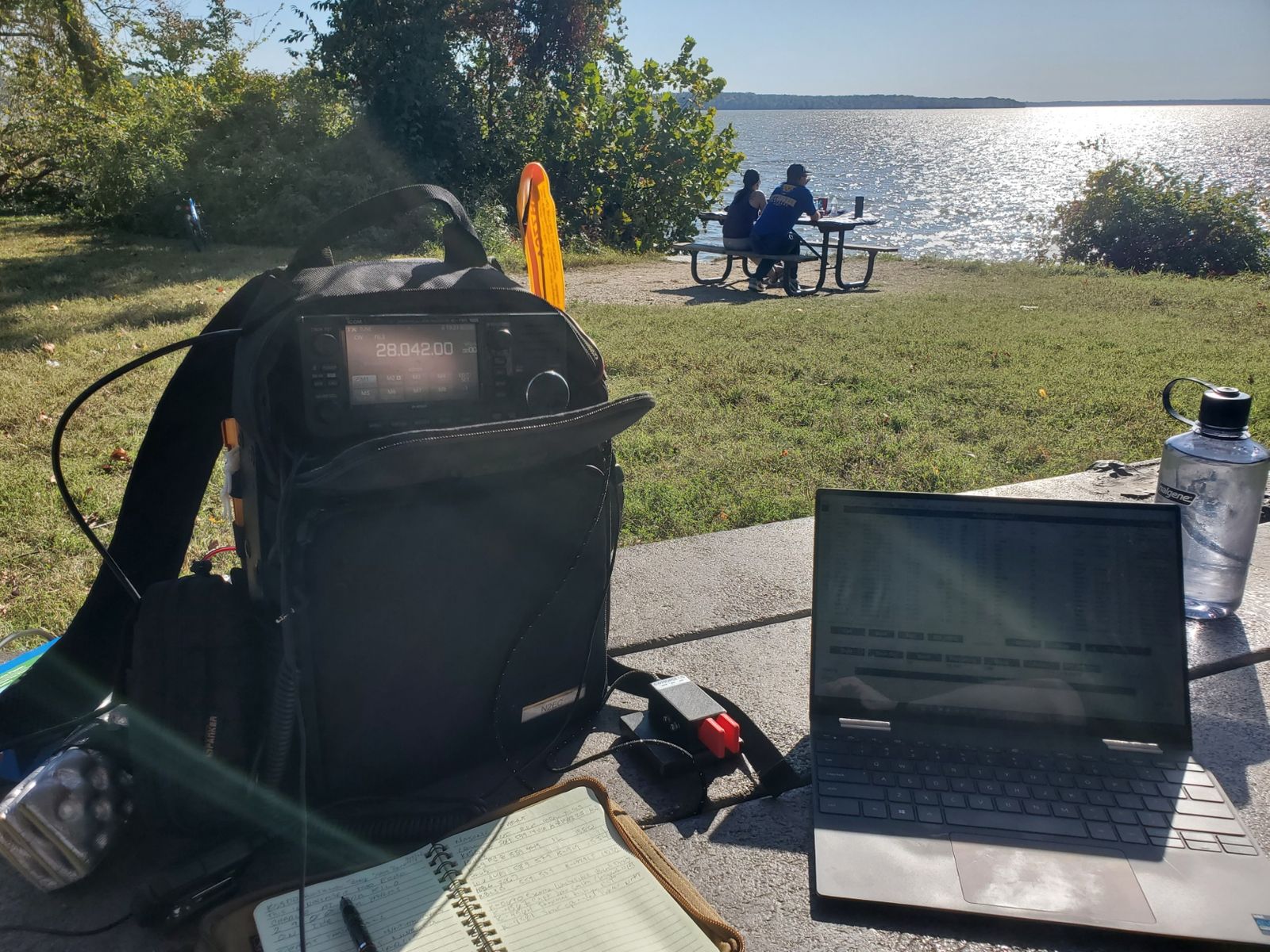
Sometimes life comes at you fast and you don't have the time to get out. That definitely was my last month an a half. Thankfully, on October 15, I had a bit of time for an activation on the POTA Fall Support Your Parks Weekend. It was a beautiful day, so I brought my daughter along with me to enjoy some fresh air at one of our local parks that is one of my favorite activating locations. We lucked out and got one of the prime picnic tables nestled between the Potomac River and the Mount Vernon Trail, easily within the activation zone for 4 parks. There were no shortage of beautiful trees to assist with the use of my MFJ 1984 MP End Fed Half Wave, so with a quick throw of my arborist line, my antenna was lifted skyward and I was quickly on the air.
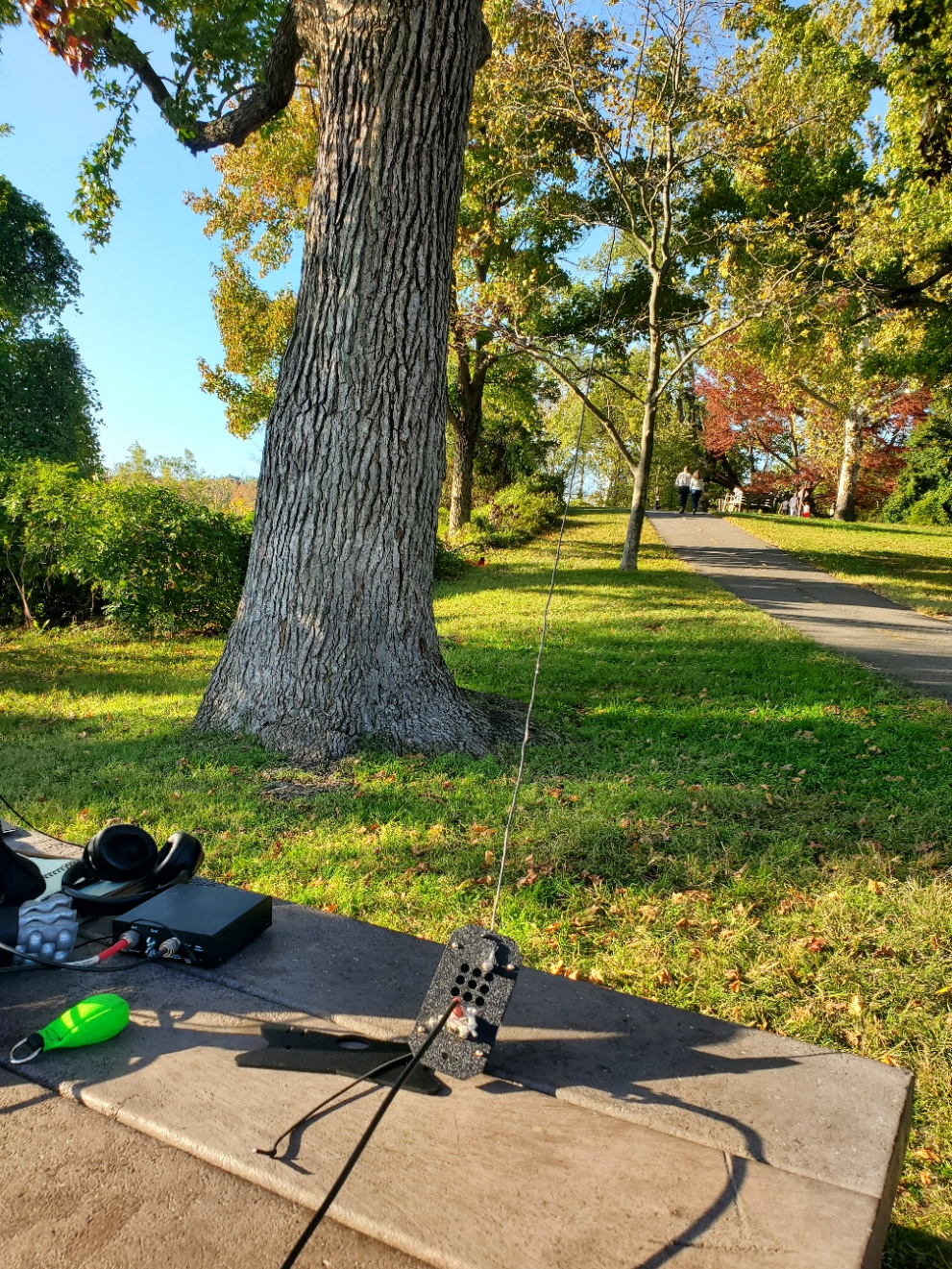
had been hearing reports of how the higher bands had been "on fire" of late, so I decided to start at the top with 10m and see what I could get. After several calls on 10 without any takers, I hopped down to 12, and similarly had no luck. Next was 15m, and there I did get two contacts with Louisiana and Florida and then the contacts dried up. So I decided to move down to 20m, and boy was that band "on fire". The first contact came from Maine, followed by some nice DX with Belgium.
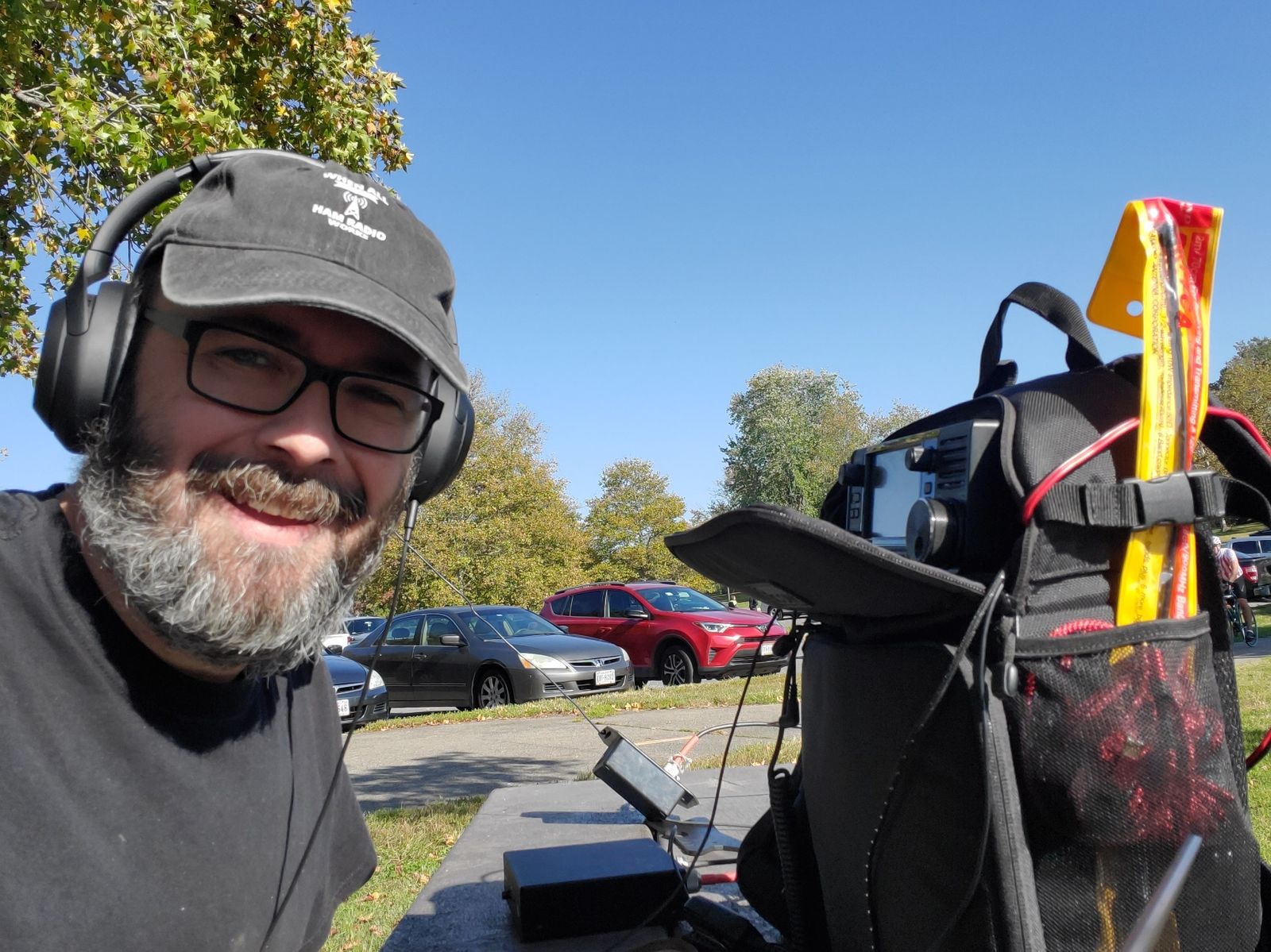
Michigan, Florida, and Tennessee came next. Another hit of DX was in the cards with a contact in Finland, followed by Missouri, Georgia, Florida. DX came again with the Dominican Republic, followed by Georgia, Florida, Michigan, Colorado, Maine. Then more DX, with a call from France, followed by Minnesota, Kansas, Montreal (Canada), Illinois, Texas, Oregon, Missouri, Indiana, Iowa, and Michigan. More DX was in store from Germany followed by Missouri, Indiana, Illinois, another contact with Germany, Texas, Georgia, Florida, and finally Utah.
Usually when I activate, I don't get a lot of attention from passers-by, but this day I had a friendly woman who had a lot of questions and seemed excited by the calls from far away stations around the globe. I tried to be a good ambassador for the hobby, answering questions and trying to do some real-time decoding of the calls coming in. I have to admit, it was quite a challenge to manage to answer her questions while still making the contacts on CW. My daughter helped with answering many of the questions and chatted with her while I was making contacts in rapid fire. The 20m part of the activation was pretty much non-stop.
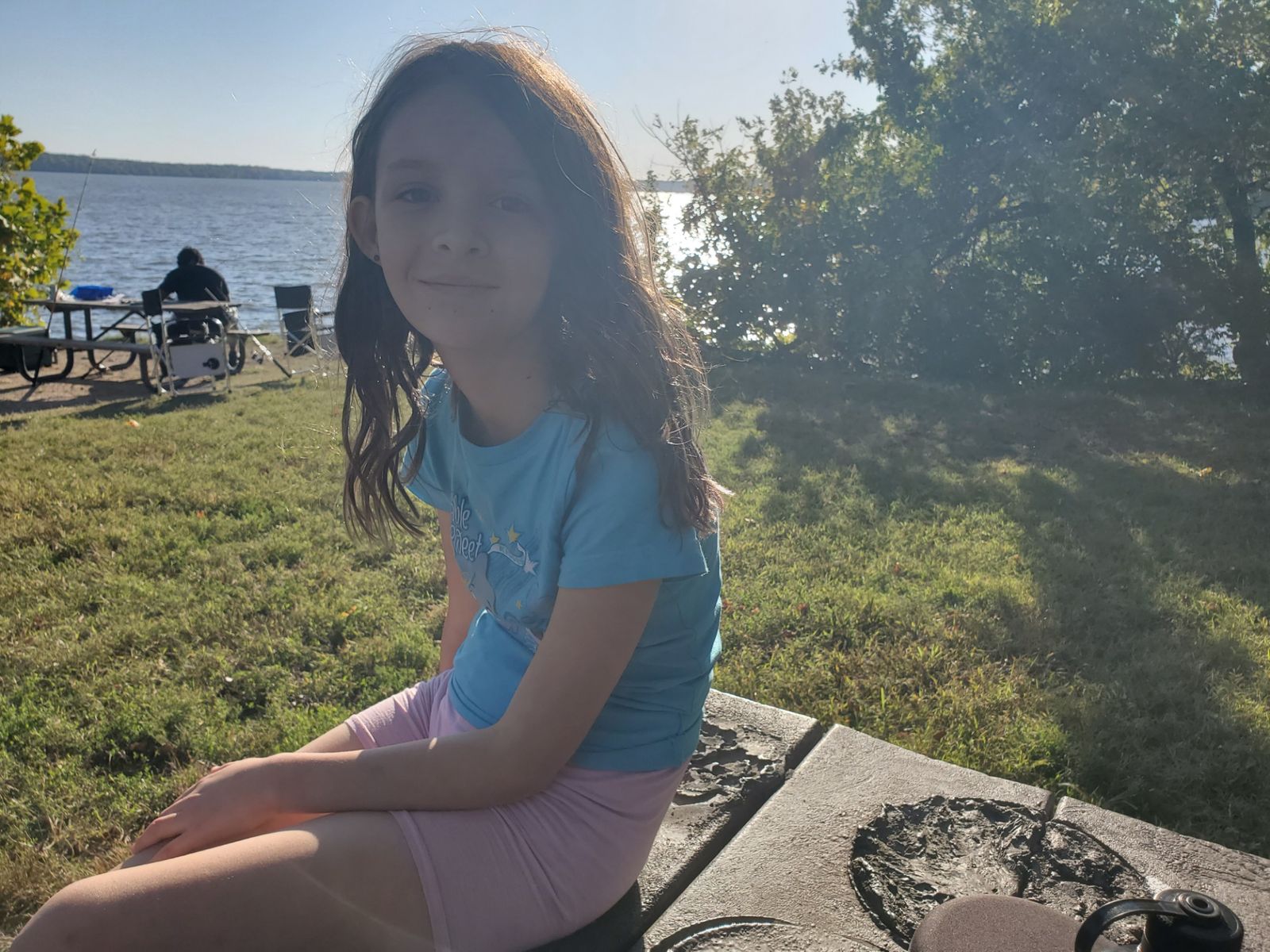
I had to cut things short as my daughter was hungry and anxious to head home. In an hour and two minutes I made 42 contacts in 7 countries -- a quick but decidedly effective activation. Although I didn't have time to hunt, I did get 2 park to park contacts who hunted me, ending up counting as 8 when the 4-fer was counted. Sunspot Cycle 25 is starting to get really exciting -- getting these kind of results with 10 Watts and a wire is exhilarating. So much fun.
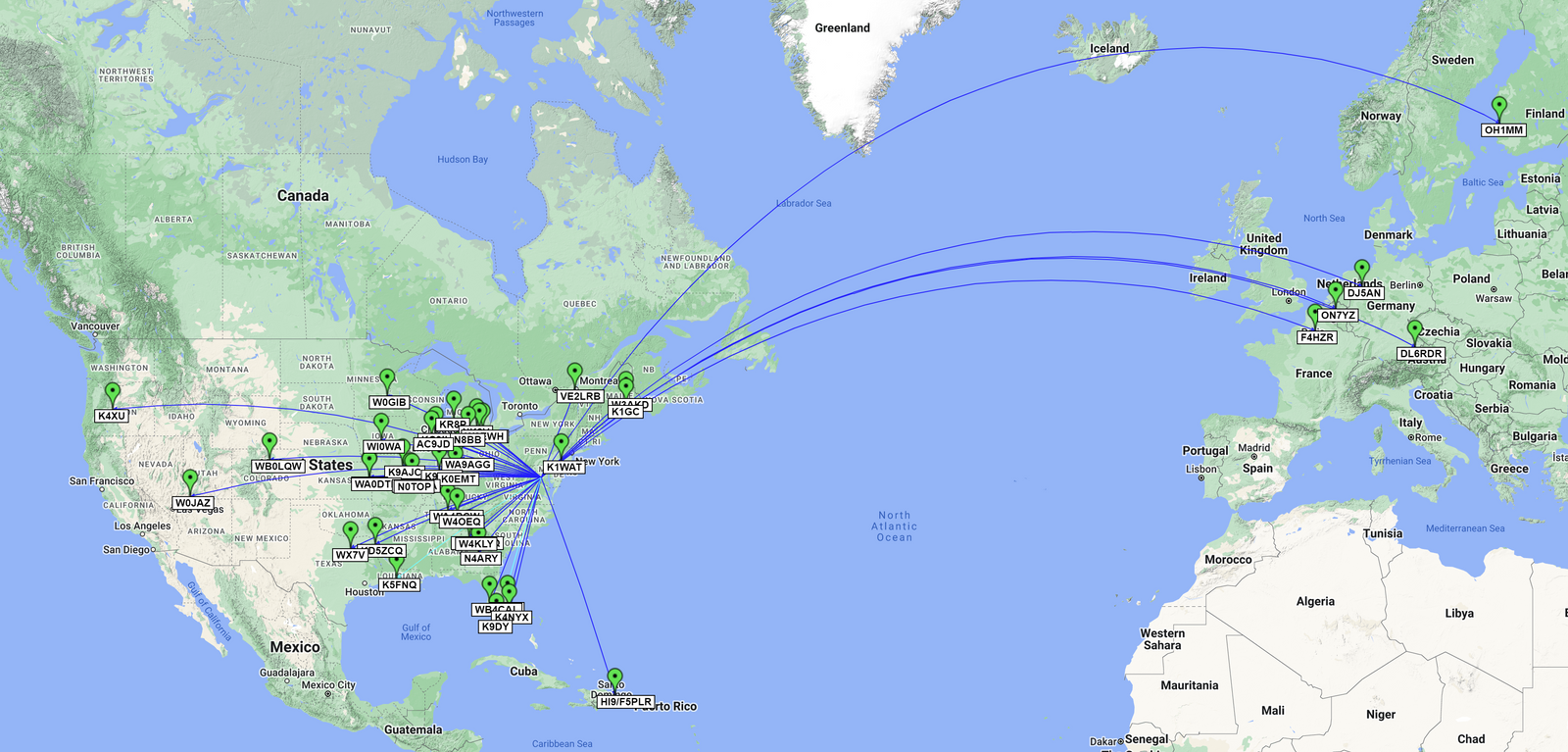
Activation QSO Map: Green Pins = CW / Blue Lines = 20m, Cyan Lines = 15m
Gear used in this activation
- Icom IC-705
- MFJ 1984 MP End-Fed Half Wave Antenna
- LDG Z100 Plus
- CW Morse Pocket Double Paddle Morse Code Key with Magnets
- CW Morse Steel Base for Pocket Paddles
- RigExpert Stick Pro Antenna Analyzer
- Icom LC-192
- Bioenno 12V 6Ah LiFePO4 Battery
- Sony Headphones
- Dell XPS 13 Laptop
- Rite in the Rain Notebook
- Zebra DelGuard Mechanical Pencil
Posted on October 29th, 2022
POTA Activation #27: A DC 2-fer at the Washington Monument National Memorial and the National Mall Park (DC) (9/3/2022)
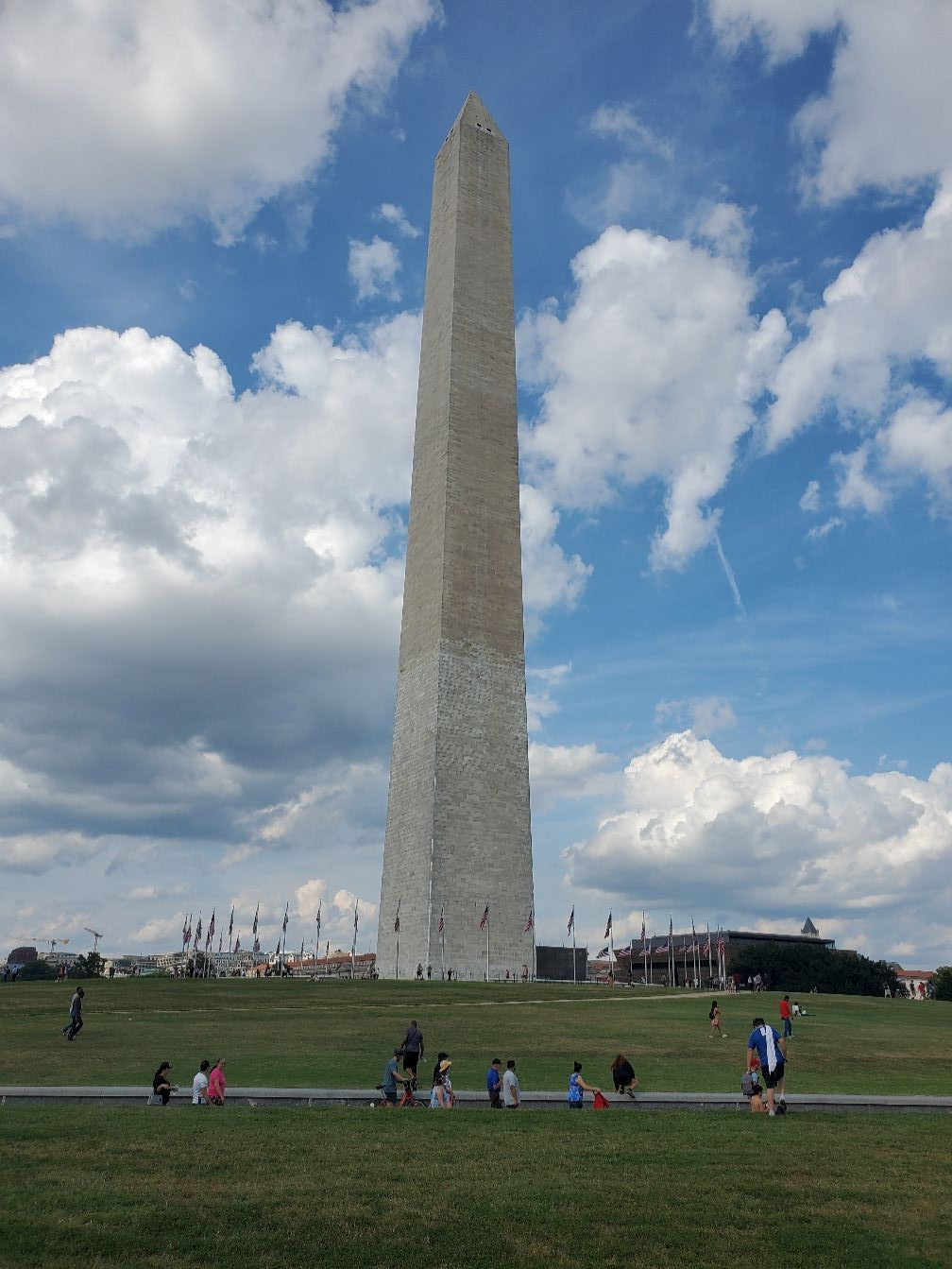
The first day of Labor Day weekend was looking to be delightful, if a bit cloudy. My family had plans on Saturday, so I decided to get an activation in. Looking at the POTA map, I noticed that although I had two DC parks in the books, I had not yet activated anything on the North side of the Potomac River. I had been thinking about doing a RaDAR run, with a bunch of parks in the monumental core of the city, but as I was getting ready to head into DC I decided that I would activate the Washington Monument (and by extension the National Mall) and focus on spending my time in that one spot. The RaDAR run would wait for another day.

I decided to have a bit of hybrid transportation for this activation. I drove into my office in downtown DC and then used Capital Bikeshare to bike to the activation site. I found a delightful grove of trees in the shadow of the monument which kept me out of he sun and also away from the throngs of tourists that had descended upon the monument and the mall. There was a large concert, the Capital House Music Festival, that was at the nearby amphitheatre. Under my grove of trees I was well shaded and out of the way, so I decided to setup my MFJ 1984-MP End-Fed Half-Wave in a nearby tree and started to get on the air.
Before I left the house I had checked band conditions, and the forecast for 40m wasn't good. So I decided to get on 20 CW to see if I could make my 10, not sure if I would be able to make it. Thankfully, my worries were unfounded and quickly I was able to get several contacts. The first contact came from Florida, then Indiana, Wisconsin, Louisiana, North Carolina, and Texas. Next, I had some trouble copying a call, but after a resend I realized it was a a DL call -- from Germany. Dead bands? I think not. Next came Florida and Virginia, and then a bit of silence. I tried switching to SSB, but got no calls, so I decided to give 40m a try. On CW I got calls back from Ohio, New Jersey, Virginia, North Carolina, New Hampshire, Maryland, Connecticut, Florida, Michigan, Massachusetts, New York, Indiana, Illinois, and South Carolina.
After another slow down I decided to give SSB a go on 40m and worked Virginia, Pennsylvania, Massachusetts, North Carolina, Maryland, Michigan, Virginia, Ontario (Canada), Michigan, New York, West Virginia, New Jersey, and Rhode Island. With that great run I thought I'd give 20 SSB another go and got Minnesota, Florida, and a final Minnesota before things slowed down again, so I decided to use the frequency agility of the end-fed half-wave and moved to 30m CW. Right away I worked Michigan and Indiana before things once again went silent. So I got another band on the log with 17m working two Texas stations and a weak one in Wisconsin.
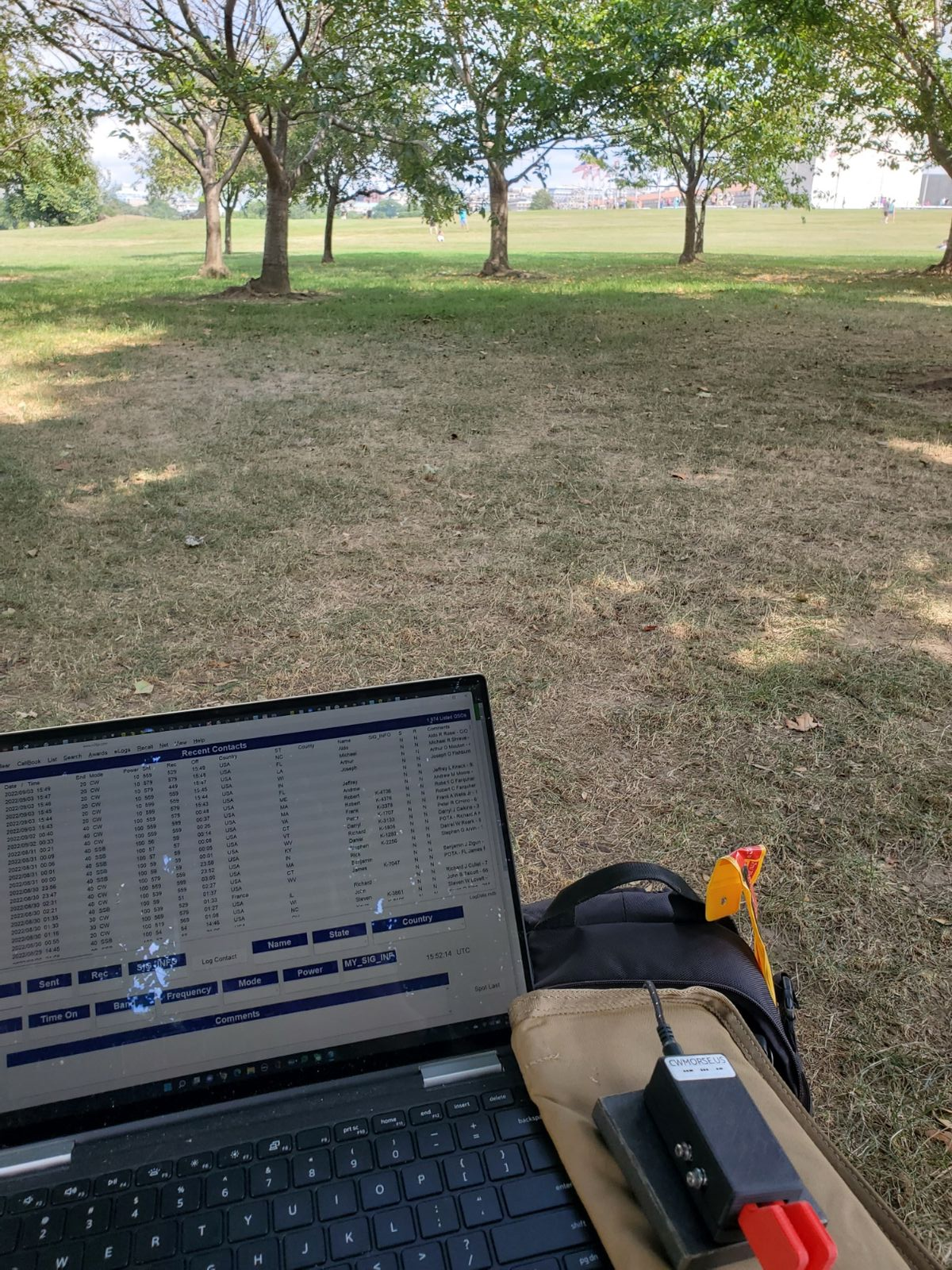
I noticed on the spots that a station really wanted to work me on 20m, so I decided to make the switch as 17 was quite quiet. Immediately I was able to work the station in Wisconsin, and then after a lot of quiet a station in Florida before I decided to move back to 40m on CW this time. Contacts came in from Connecticut, Pennsylvania, Michigan, Wisconsin, Ontario (Canada), Virginia, North Carolina, Massachusetts, another Ontario station, Maryland, New York, Tennessee, Ohio, New Hampshire, New Jersey, and another New York. Then as I was getting another call in, I was approached by a Park Ranger who asked me to take down my antenna, since it was in a tree. I quickly complied and asked if my vertical antenna which was free-standing and not in a tree was okay to use, and she indicated I could use that and continue operating. I explained what I was doing and thanked her, and set up the Buddistick Pro.
Since 40 was working so well just minutes before, I decided to continue on it and got calls from New York, California (although I suspect they may have been operating elsewhere based on the band), Pennsylvania, Virginia, Maine, New Jersey, Ontario (Canada), Massachusetts, and a couple of Virginia stations. I was getting ready to call it an activation and had already crossed 100 QSOs, so I decided to give SSB another try and worked Massachusetts, New Jersey, North Carolina, and New Jersey again before calling QRT. One last look at the spots and I saw W2AEW activating a park in New Jersey -- I'm a fan of the videos he puts out on his YouTube channel (great educational content on amateur radio and electronics), so I decided to try for a park to park with him on CW, I was successful, and thanked him for his great videos before packing up the station.
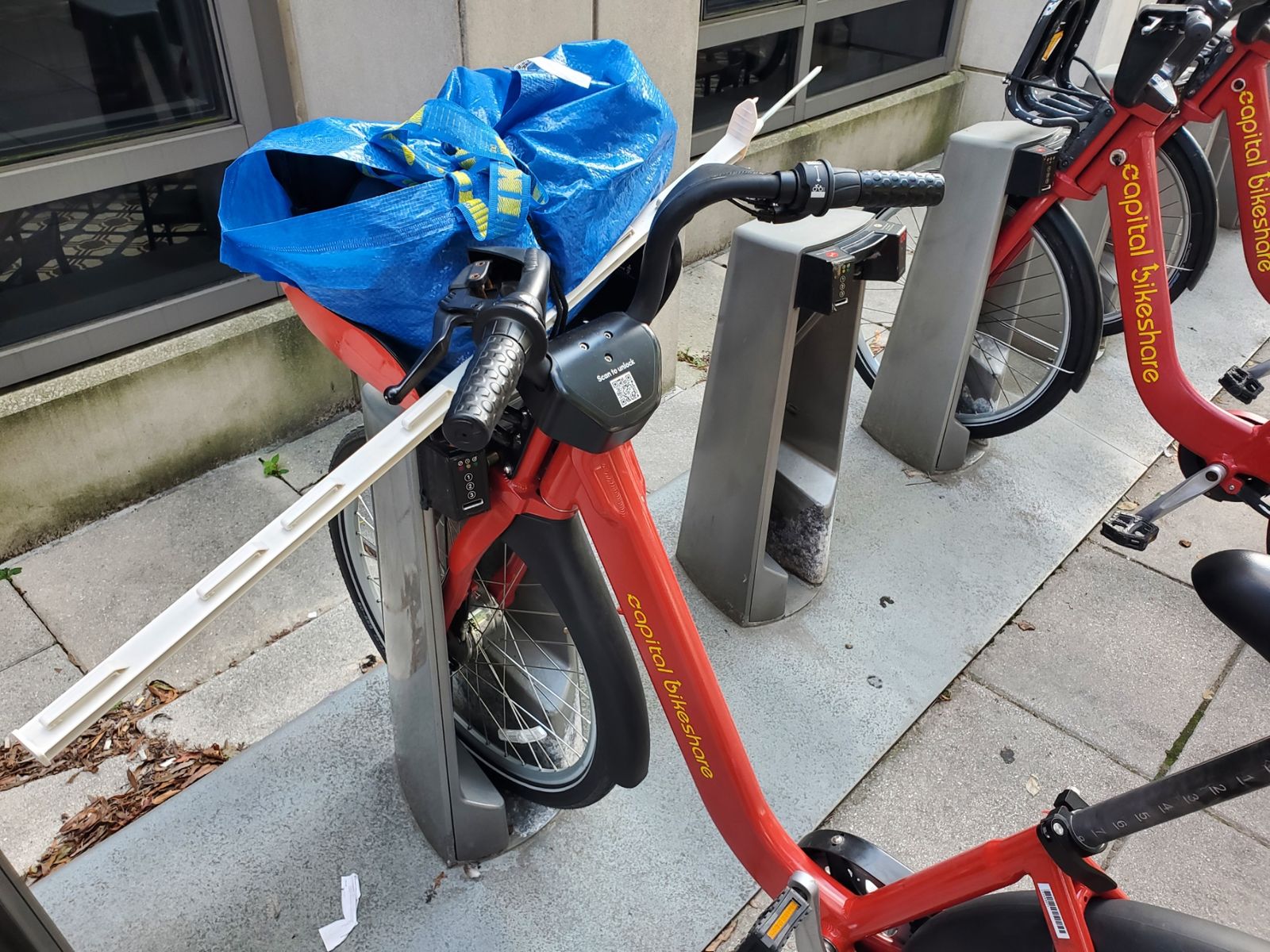
I headed for the nearest Capital Bikeshare station, loaded up the basket with my gear (the radio was on my back) and biked my way up the hill to my office. It was a very successful activation with 113 contacts, 75 on CW and 38 on SSB in two parks. I also was excited to have contacts with my friends KK4WDP (who was activating his own park -- we worked on CW and SSB) and K3WD who was looking out for me on the spots after he found out I was activating on the Cherry Tree Net earlier in the morning. Also, I was delighted to work Thomas, K4SWL, who hunted me from NC on this activation. Hearing familiar calls put a big smile on my face. So many of the hunters were excited to get DC parks -- I guess they're a bit hard for people to get in the logs, so it was like I had an extra 6db of gain being in DC with all the hunters seeking me out. I can't wait to activate some more DC parks soon.

Complete Activation QSO Map: Red Pins = SSB, Green Pins = CW / Green Lines = 40m, Orange Lines = 30m, Blue Lines = 20m, Purple Lines = 17m
Gear used in this activation
- Icom IC-705
- MFJ 1984 MP End-Fed Half Wave Antenna
- Buddipole Buddistick Pro Antenna
- LDG Z100 Plus
- CW Morse Pocket Double Paddle Morse Code Key with Magnets
- CW Morse Steel Base for Pocket Paddles
- RigExpert Stick Pro Antenna Analyzer
- Icom LC-192
- Bioenno 12V 6Ah LiFePO4 Battery
- Sony Headphones
- Dell XPS 13 Laptop
- Rite in the Rain Notebook
- Zebra DelGuard Mechanical Pencil
- Cascade Mountain Tech Ultralight Highback Chair
Posted on September 4th, 2022
POTA Activation #26: A 4-fer with Gersohn and a New Radio at George Washington Memorial Parkway, Captain John Smith Chesapeake NHT, Star Spangled Banner NHT, and Potomac Heritage NST (VA) (8/20/2022)
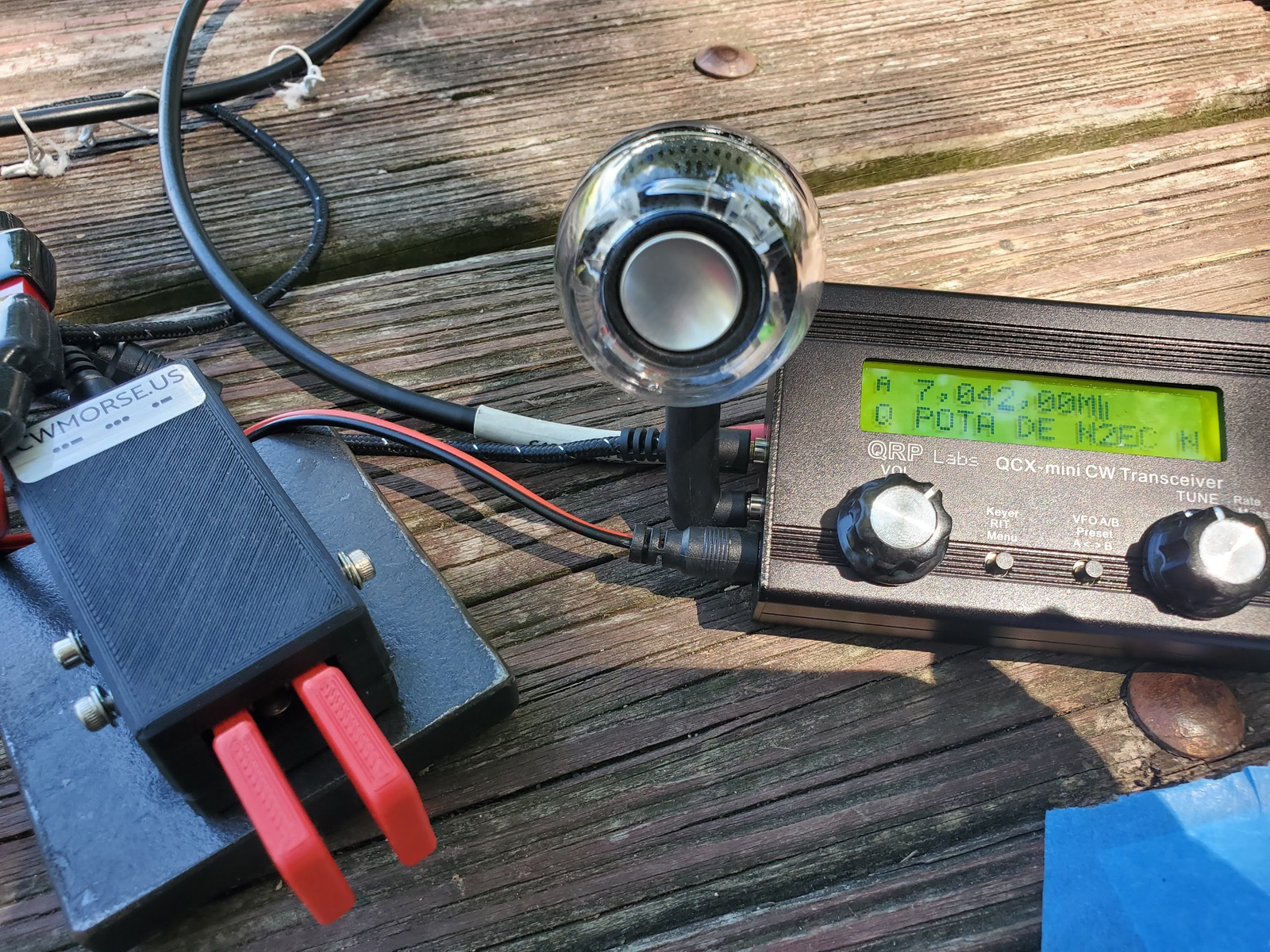
I've had a bunch of amateur radio projects that have been stacking up over the Summer, and I finally had some time to work on one of them: the QCX mini from QRP Labs. The QCX mini is a single band QRP (5 W) CW transceiver (mine was built for the 40 m band). I had seen a lot of reviews of the radio and was amazed with the quality of its receiver and its compactness. The radio is astonishingly inexpensive as well, coming in under $60 for the radio, and under $100 including the case and all the add-ons. I was excited to build the radio, and with a couple days of work I had assembled, aligned, and tested it successfully. I made contacts on my home antenna with an external antenna tuner was amazed with the quiet that I was hearing on the band. Where my Kenwood TS-440S had significant noise, the QCX mini had near silence. CW just popped out loud, clear, and easy on the ears.
The 5 W definitely made things more of a challenge at home, but after repeated CQs I made some contacts, including a Canadian contact and great rag-chew with a station in Maryland. I was also getting solid reports on the Reverse Beacon Network. When I connected it to the QRP Labs Dummy Load, it estimated that I was getting the full 5 W output, so I was excited to get it into a park, put it through its paces, and enjoy the "+6dB" that comes from being on the POTA spotting network.
My buddy Gersohn (KO4IUK) had gotten back from a vacation on the West coast and we had a beautiful day forecast on Saturday, so we decided to meet at Belle Haven Park on the George Washington Memorial Parkway. Due to the location of our operating position we were within 100 feet of 3 other parks: Captain John Smith Chesapeake NHT (on the Potomac), Star Spangled Banner NHT (on the Potomac), and the Potomac Heritage NST (on the Mount Vernon Trail). That made this activation a 4-fer.
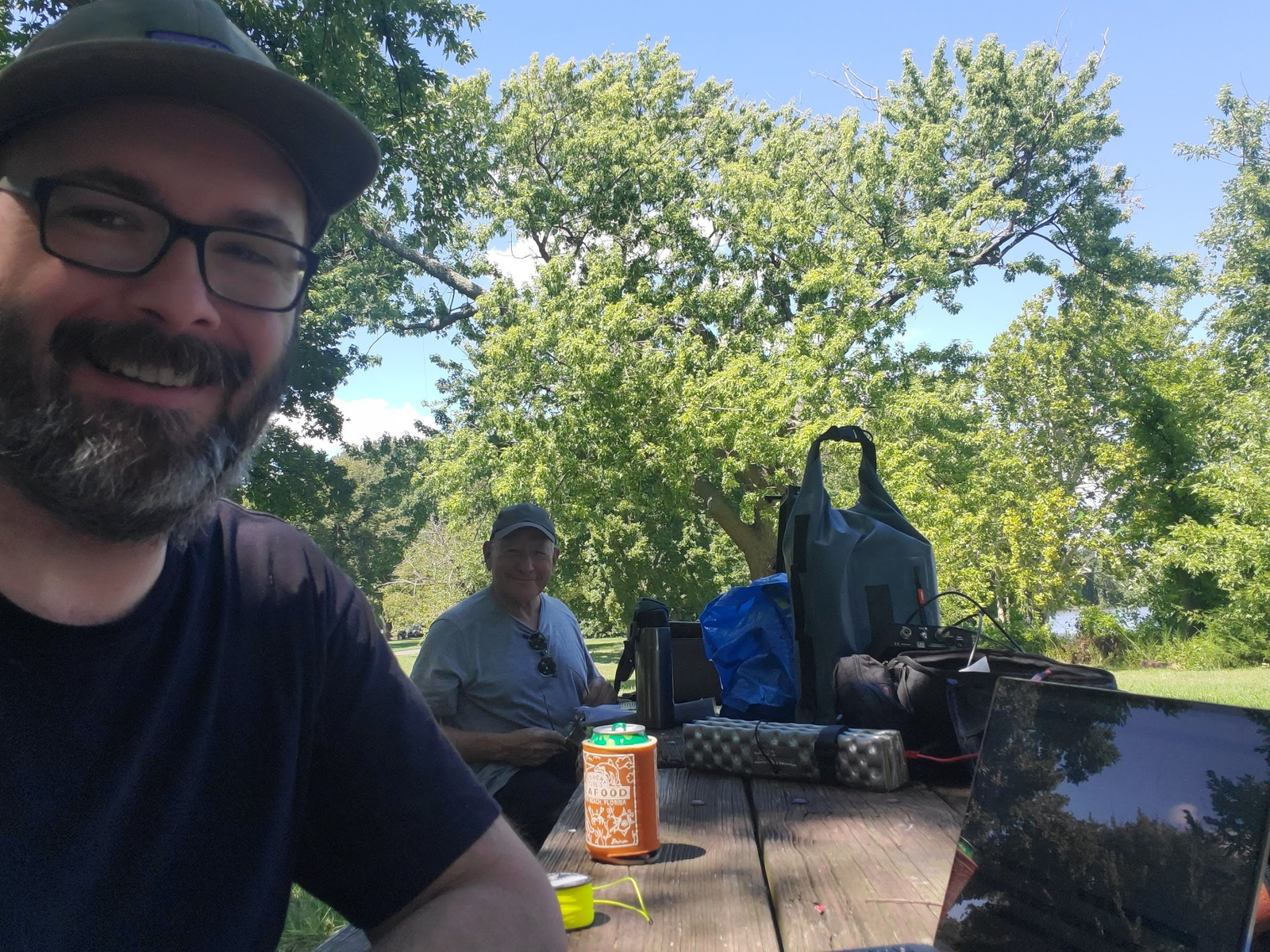
I brought my QCX mini and my Icom IC-705 so I could operate on other bands as well. Gersohn was also interested in getting more familiar with FT8, so I made sure I could operate my station digitally to show him how I've activated on FT8 as well. We got an early start and quickly got our antennas up into the trees. I used my throwline and got a nice inverted-v setup and Gersohn used his air cannon and got his line into two trees using all 175' of line! You can see the tree he used in the picture above and he got to the very top of it. He used his Nelson 49:1 matching network into an end-fed half-wave and it performed like a champion with low SWR on the bands. Shortly after getting up and running Gersohn made an SSB contact with Alaska! Can't beat that.
I used my trusty MFJ 1984-MP end-fed half-wave antenna and was pleased to see that on 40m I was getting an SWR of around 1.3:1 -- plenty good to go direct into the antenna without a tuner for my QCX mini. I got everything connected, programmed the keyer, and started calling CQ. I got my first two responses to my CQ in relatively short order with my first coming from Ohio and my second coming from Pennsylvania. Not bad for 5 W. I kept calling and got a response from a station that QRZ says was in California -- a bit of a surprise on 40 m, but I'll take it. Finally after calling CQ for another 10 minutes I got contact number 4 in Tennessee. I kept calling, but the band seemed pretty dead, so I decided to take a pause with the QCX and setup my IC-705.
I wanted to see if it was the 5 W or the band, so I gave 40 m SSB a go and made contacts with New Mexico, Virginia (about 6 miles away), Ohio, Ontario (Canada), and North Carolina. The going was slow, with those contacts taking about 29 minutes, so I had my answer: it was the band. So I decided to move over to 20m and start calling CQ on CW and was answered by Georgia, Texas (x2), Oklahoma, and after a bit of a delay Pennsylvania. I had made my activation, so the pressure was off a bit. I mentioned to Gersohn that I had been able to make contacts on 60 m at other parks using a tuner and a 40-10 EFHW, so we gave it a try on his antenna and sure enough, it tuned up and I was able to make a contact with North Carolina bringing the number of bands I had worked in both Captain John Smith Chesapeake NHT and the Star Spangled Banner NHT to 9.
Next I took a break in operating to try to lend a hand to Gersohn in getting his digital setup on the air. He was having some really strange noise coming in on his receive audio, and we weren't able to figure out what was going on. We went back to my IC-705 and I showed him my setup for FT8, this time on 40 m as I had some RFI issues on 20 m causing my radio to disconnect from the USB connection when I was transmitting. FT8 has a bit of a learning curve as the user interface isn't the most intuitive, so I was happy to show how I operate. I was able to make contact with stations in Connecticut, Virginia (this time just 4.4 miles away), Ontario (Canada), Texas, Ontario again, New York, and Tennessee. We tried to get things rolling on his FT8 setup after working those stations, but for this day it was not to be.
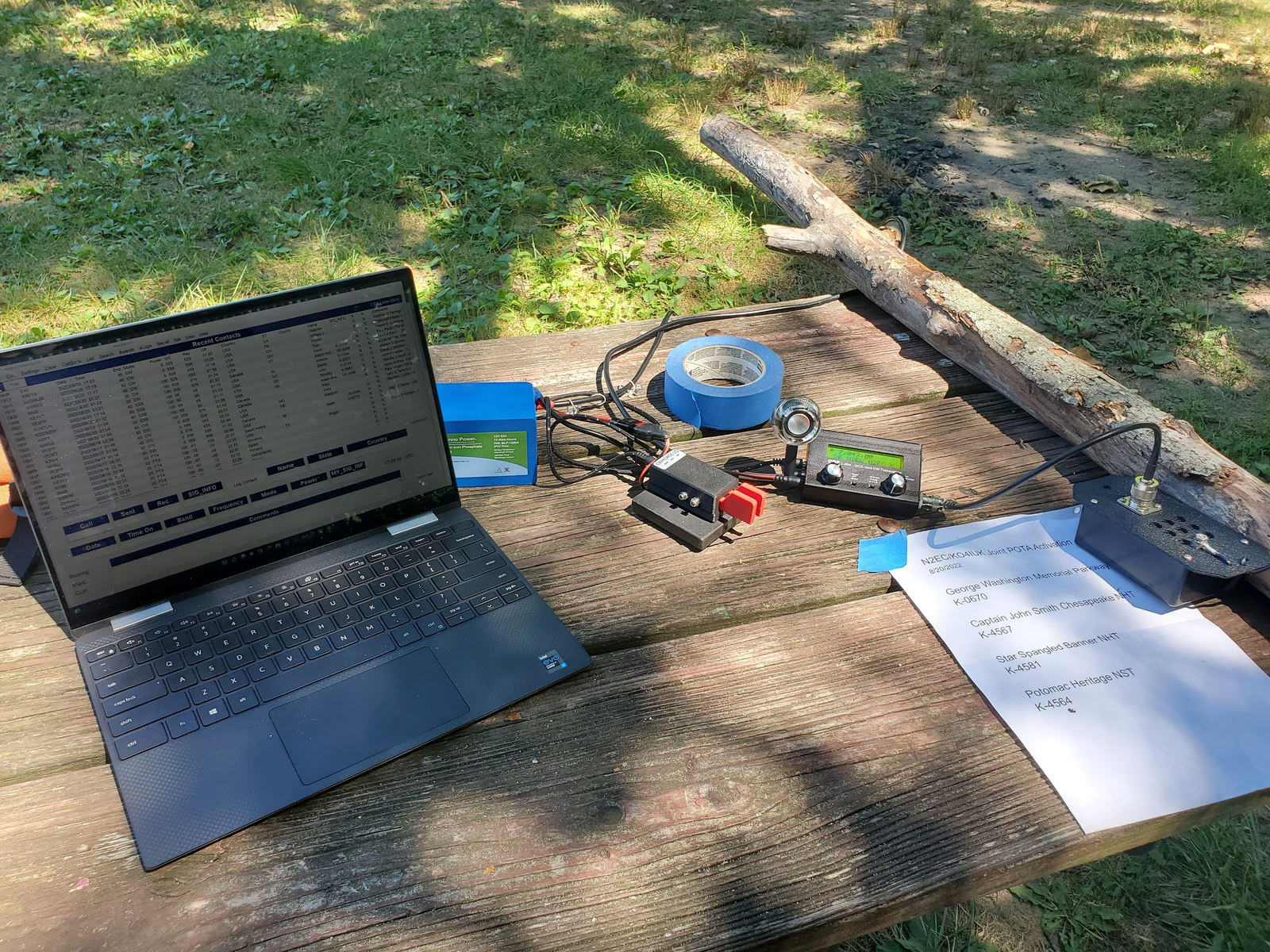
Emboldened by the success on FT8 on 40 m I decided to hook up my QCX mini one more time and see if I could get enough contacts to have had a full activation on it, if I had not brought the IC-705 along -- maybe the band had improved. And quickly I had my answer, it had gotten better. I had a park to park with Ontario (Canada), followed by contacts with South Carolina, Indiana, Ohio, South Carolina again, Georgia, New Hampshire, Quebec (Canada), Massachusetts, Michigan, Minnesota, and another Michigan contact. A great run on 40 m with just 5 W. What a great little rig.
Before we packed up, Gersohn and I pulled out our VHF radios and made a couple park to park contacts (from the same park) for fun. I tried calling out on the calling frequencies as well, but today there were no takers aside from Gersohn. All told I made 22 contacts on CW, 7 on FT8, and 7 on SSB for a grand total of 36 contacts. Of course, since this was a 4-fer 36 becomes 144 contacts in all. A fun day out in the park with a good friend.
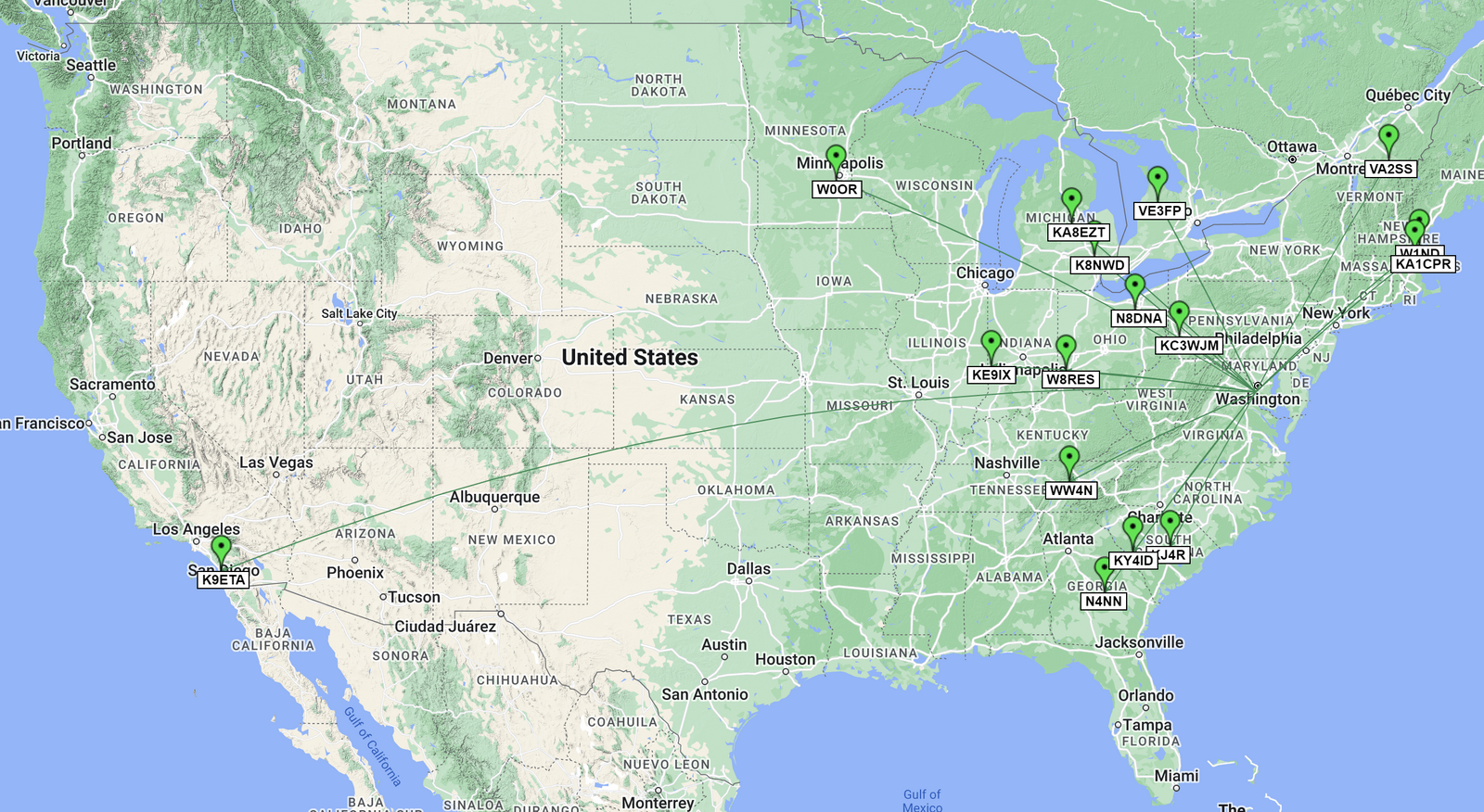
QCX Mini 5W Activation Map: Green Pins = CW, Green Lines = 40m
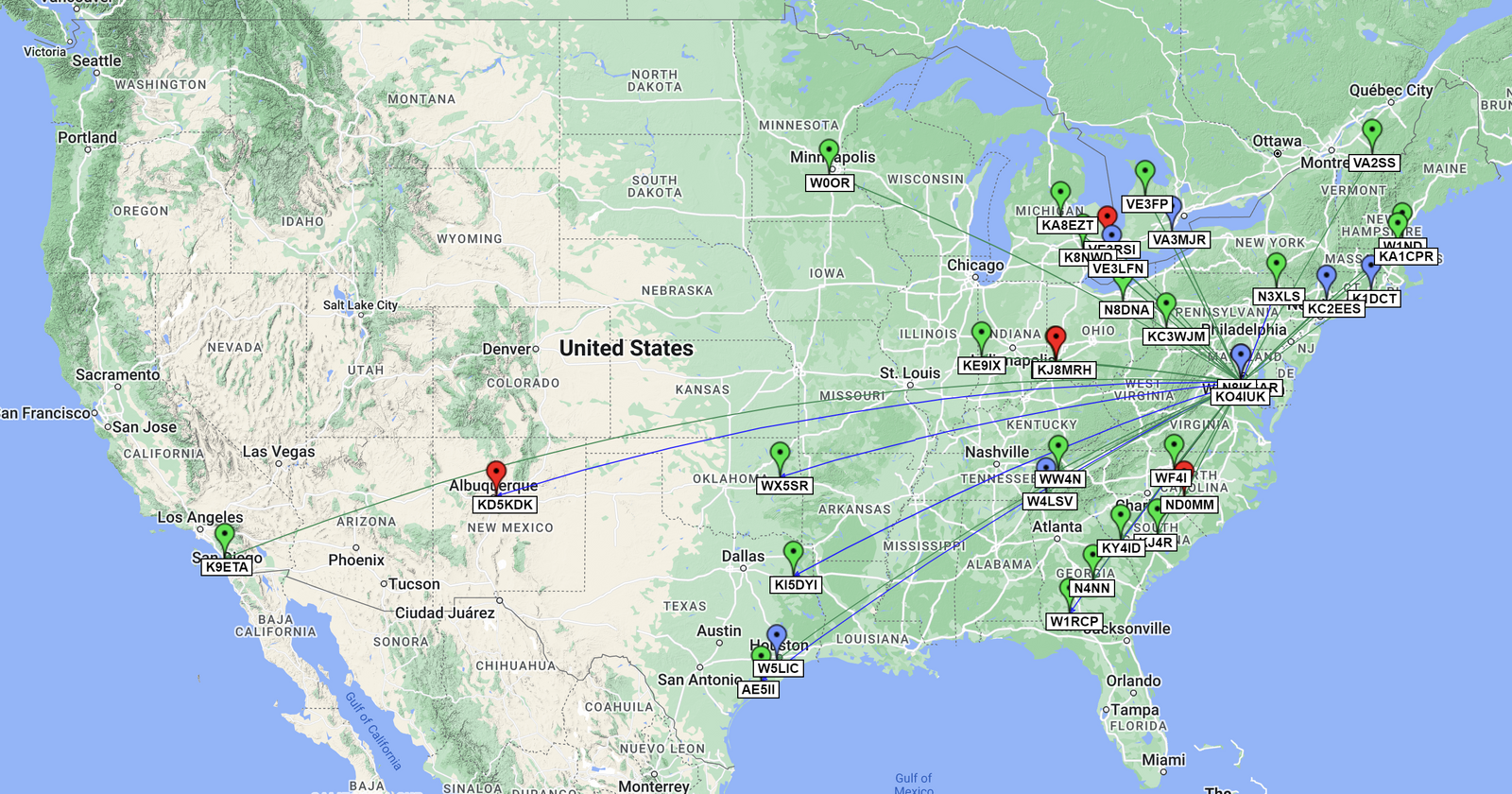
Complete Activation QSO Map: Red Pins = SSB, Green Pins = CW, Blue Pins = FT8 / Black Lines = 60m, Green Lines = 40m, Blue Lines = 20m
Gear used in this activation
- Icom IC-705
- QCX Mini (40 m version)
- Leadsound Crystal 3W Speaker
- MFJ 1984 MP End-Fed Half Wave Antenna
- Nelson 49:1 End Fed Half Wave Antenna
- LDG Z100 Plus
- CW Morse Pocket Double Paddle Morse Code Key with Magnets
- CW Morse Steel Base for Pocket Paddles
- RigExpert Stick Pro Antenna Analyzer
- Icom LC-192
- Bioenno 12V 6Ah LiFePO4 Battery
- Sony Headphones
- Dell XPS 13 Laptop
- Rite in the Rain Notebook
- Zebra DelGuard Mechanical Pencil
Posted on August 23rd, 2022
POTA Activations #24 and #25: Lake Anna State Park (VA) (7/26/2022 - 7/27/2022)
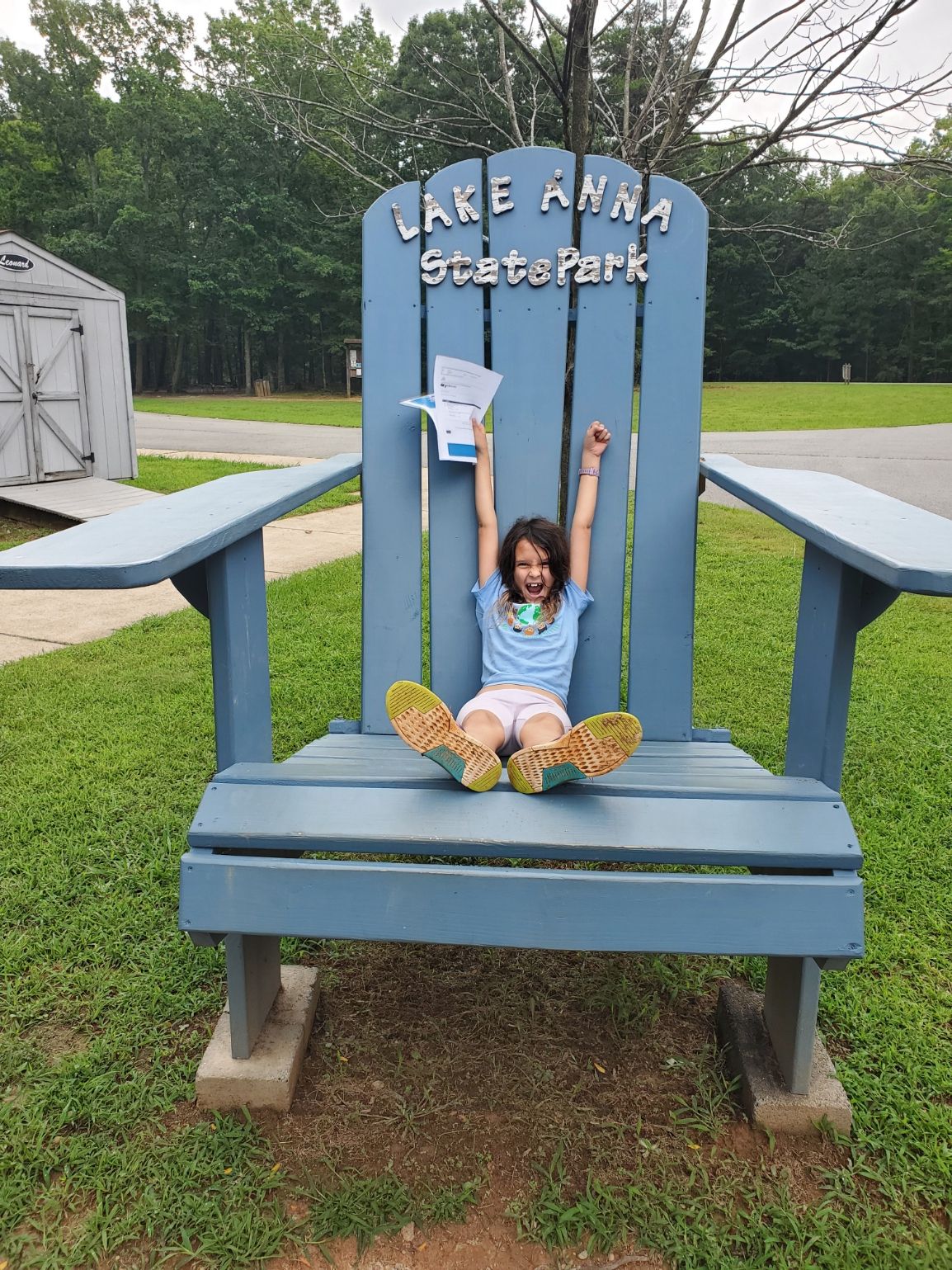
After the challenging activation at Lost River State Park, I wasn't sure what to expect as we made our way East to our second park for the week, Lake Anna State Park, in Virginia. I knew the area was substantially less remote with plenty of homes along the lake that gives the park its name, so I was hopeful that at the very least I would be able to spot myself. Lake Anna State Park is on the banks of Lake Anna, a man-made reservoir that was created as a source of cooling water for the North Anna Nuclear Generating station. The lake is about 17 miles long with 200 miles of shoreline. The park is along the public side of the lake and it is used heavily for recreational watercraft, fishing, and swimming at a man-made beach. The park has water access, trails, and a campground. In addition to traditional camping and RV sites, there are a handful of what they call "Camping Cabins" that have power, bunks, lighting, and an internal fan. There is no air conditioning, but while we were there we stayed quite comfortable.
After being off the grid and significantly shaded (so our solar setup was unable to generate power) it was nice to be able to recharge our batteries and let our cooler run off the mains. When we arrived at the park we were a bit early, but we were able to check-in and our cabin was ready for us to move in. There was one challenge -- the electronic locks had not been updated with the new code. We went back to the ranger station and they had someone come out to reprogram the lock and we got ourselves situated. The cabin was spacious for the two of us and my daughter excitedly chose one of the upper bunks as hers. We had some fixings for sandwiches, so we made ourselves lunch, and took-in our surroundings. Being in the middle of the week the campground was mostly empty, but we got to chat with some neighbors who had an adorable little dog that my daughter quickly befriended.
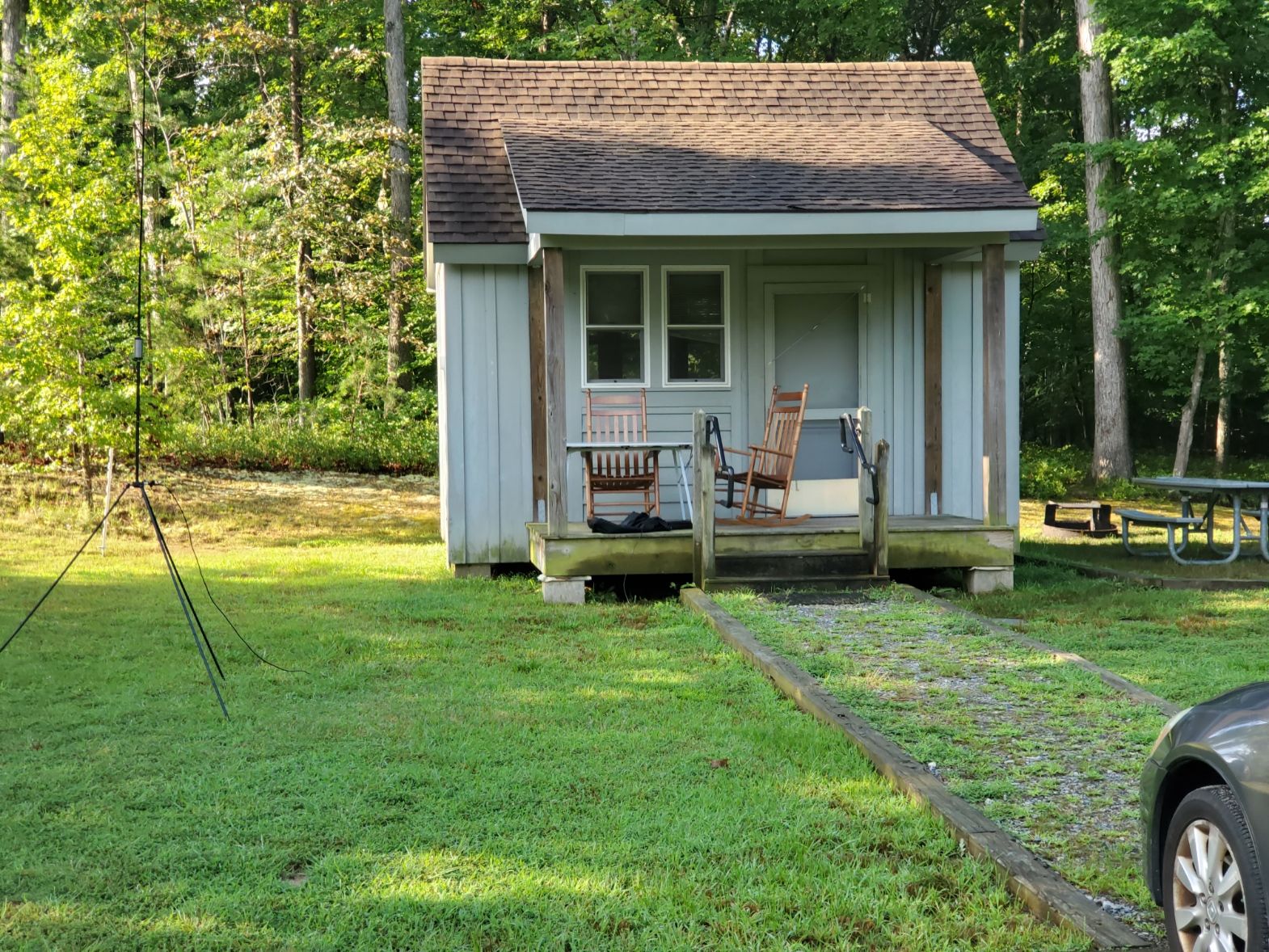
After lunch I set-up my station to see what I could do on the bands. In some of the information from the park they mentioned that they frowned upon using ropes in the trees, so I decided to use my Buddistick Pro once again so as not to run afoul of their rules. I got my table out of the trunk of my car and set up my operating position on the front deck of the camping cabin, using the provided rocking chairs for a place to sit. Having the roof above me would prove to be quite nice throughout the trip as we did have some rain during times when we wanted to cook and operate. Having the shelter allowed us to not worry about what the sky was doing. I got everything up and going on 20m and my plan was for a quick CW activation to take advantage of the Zulu day still having some time left, with an eye to a second activation after dinner on the late shift.
Once again, I noted that the RBN spotting connection wasn't working on the POTA site, but this time, I could do something about it. I self-spotted on my cellular connection and the hunters came quickly. The first call came from Illinois, then came Michigan, Utah, Missouri, Illinois again, and California. Unbeknownst to me at the time, the California station spotted me on the World Wide Flora and Fauna network, so I was quickly treated to some unexpected DX. I got calls from Texas, Michigan, Nova Scotia (Canada), Florida, Washington, Spain, Sweden, and finally Michigan again. Getting two contacts well across the pond and four West of the Rockies was pretty great. It felt like my luck had turned around and I was excited about the late shift to come.
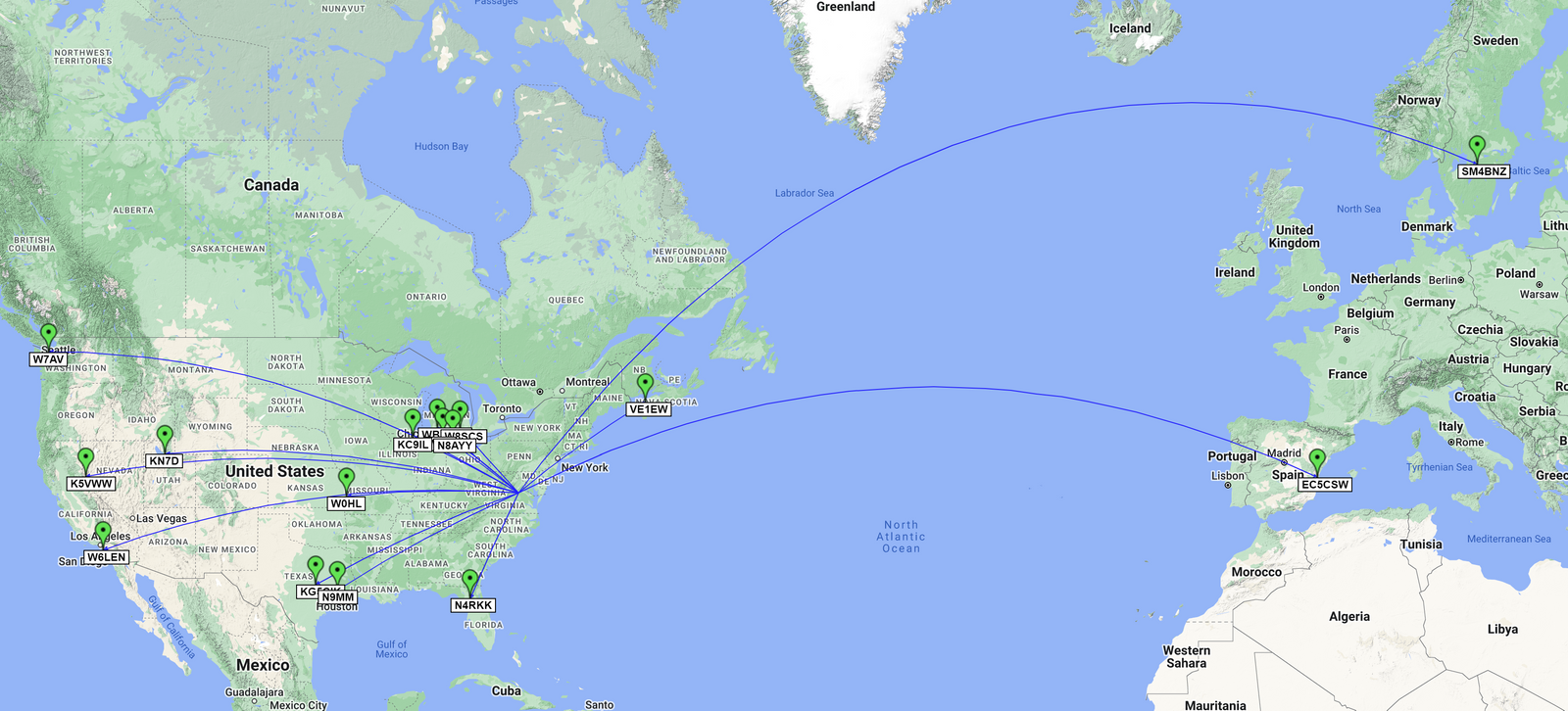
Activation 1 QSO Map: Green Pins = CW / Blue Lines = 20m
After the first activation, with the temperatures rising a bit, we decided to go explore the lake and see about going for a swim. Normally there is a fee for using the beach, however, when the beach is unguarded on Mondays and Tuesdays access is free. We brought a blanket and made our way into the pleasant waters of Lake Anna. After a couple days of being out in the woods without a shower, taking a dip in the lake was a small slice of heaven. We ended up splashing around for quite a while enjoying the delightfully cool lake and it was great to see my daughter enjoying some time in the water after we missed out on the pool at the previous park. After we had our fill of beach time and our stomachs started reminding they were there, we made the hike back up to the campground through the trail that connects it to the beach through an educational forest. Every few feet there were signs pointing out different species of trees along the way, so we enjoyed learning about them as we hiked.
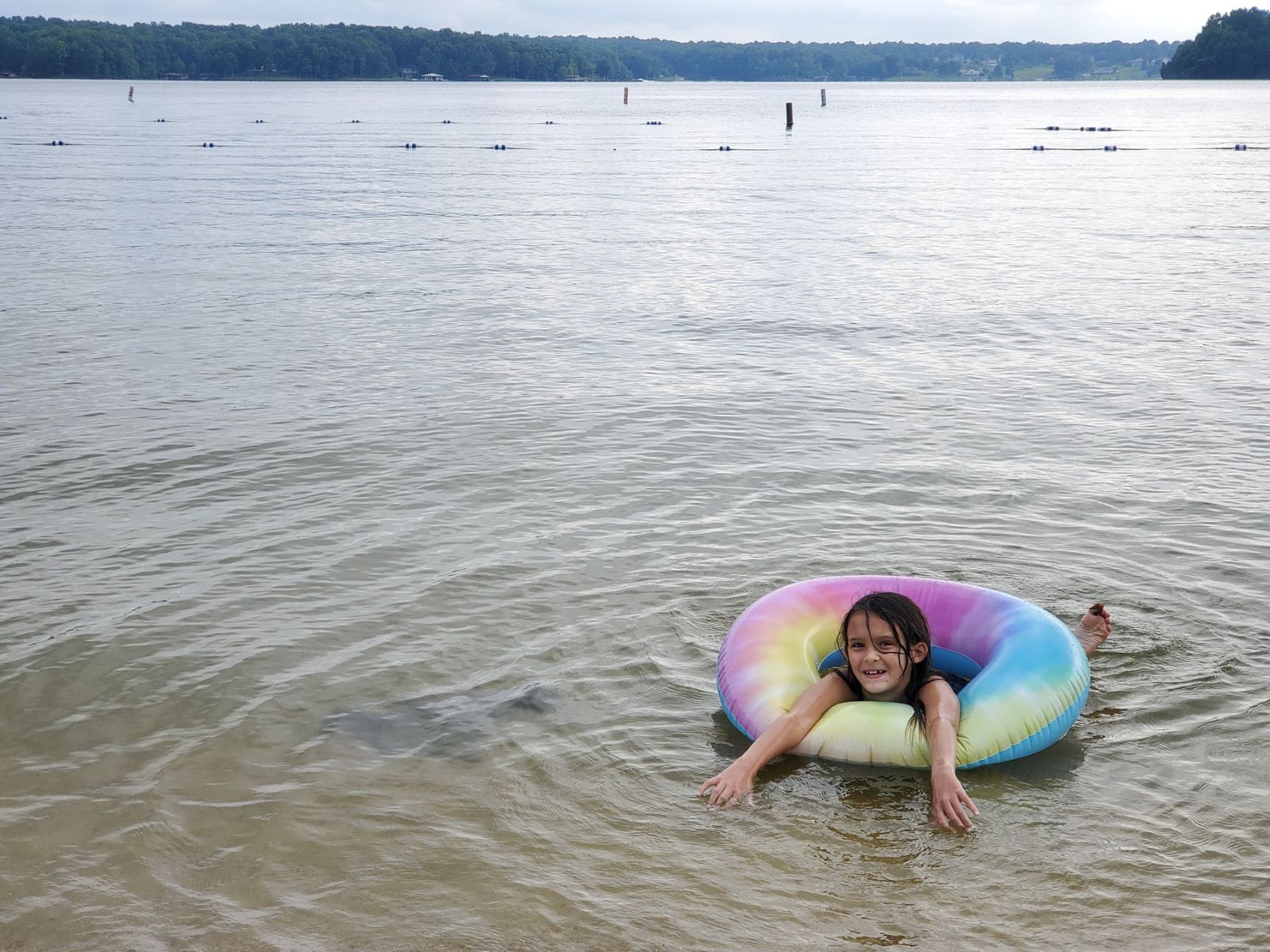
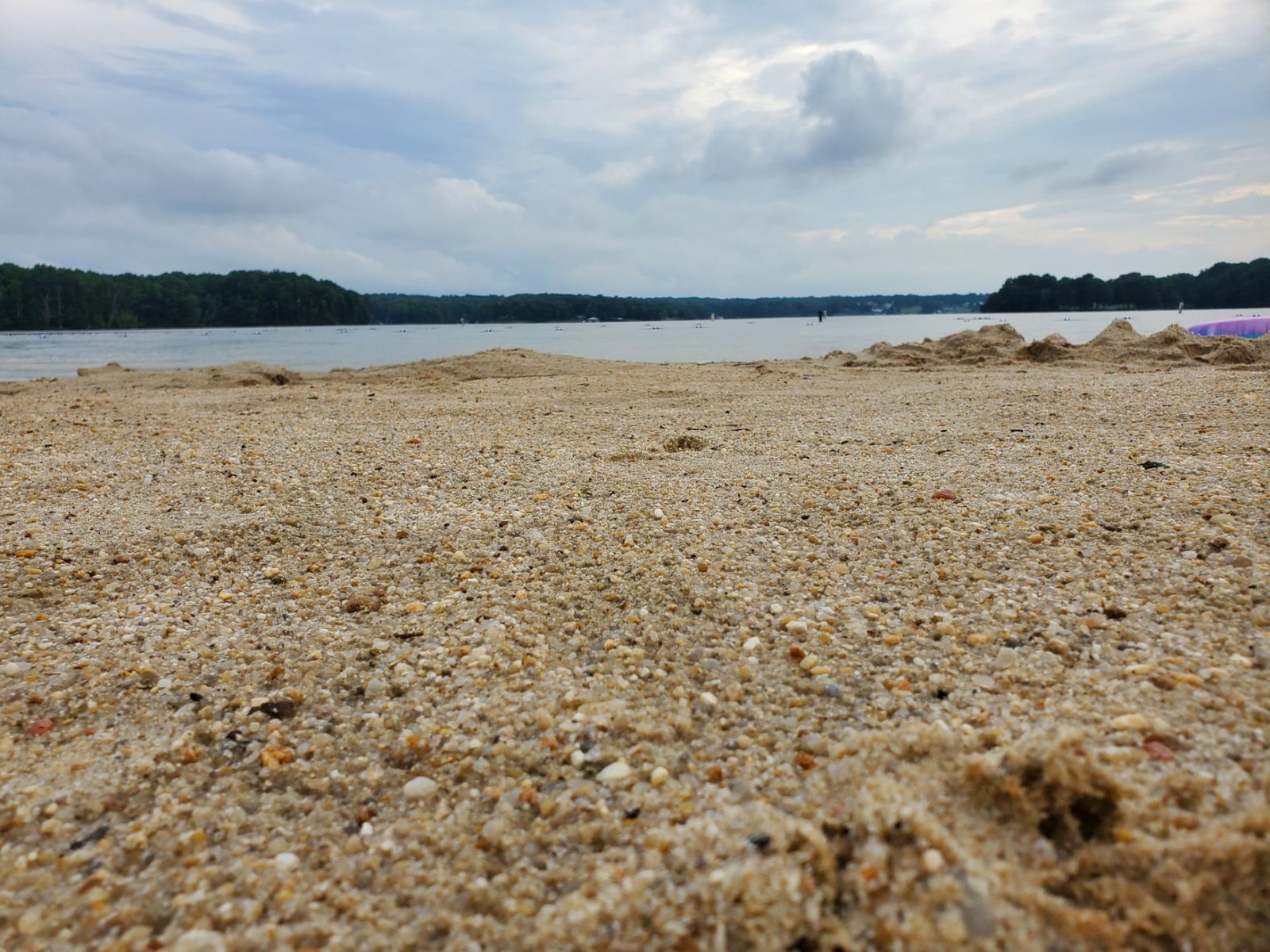
Once we got back to the cabin, I took out the camp stove and prepared for one of the meals I was most looking forward to making during the trip, cheeseburgers. Thankfully, with the battery power in West Virginia, car power on the drive, and shore power at the cabin, our cold chain remained unbroken, so we were able to enjoy some delicious burgers on potato rolls with all the fixings along with some potato salad that I had been saving for one of our dinners. Everything was delicious and we enjoyed our dinner under the roof of the front porch. As the day came to a close we sat outside and enjoyed the view, talked, and relaxed. My daughter enjoyed reading her book, eagerly devouring every page, and as the start of the new Zulu day approached I set-up my station once again.

Eager to get another late shift in the books, I started once again on 20m and didn't have to wait too long to get plenty of calls. My first 4 callers hailed from Texas and then I did a double-take as I heard an NL prefix. I must have been hearing things, right? NL is the prefix for Alaska. I sent a "?" to make sure ... QSL, that was NL7V from North Pole, Alaska! The first time I had ever made a contact with an Alaskan station! AMAZING! To me he was a solid 559 and he gave me a 319 -- big thanks to Paul for pulling me out of the noise. I was just 5 contacts in, but I my activation was made, I was floating on air. Next came another station from the other side of the continent in California, then down the other way to the Dominican Republic. Then it seems like I had a pipeline into Missouri and Minnesota, I also made contact with Texas, and Louisiana before I had another DX surprise with Hungary! The bands were on-fire. Up next was Puerto Rico, Kansas, Arizona, Puerto Rico again, a California station I had worked on the previous Zulu day, Indiana, another California station, and Arkansas. What a run on 20m!
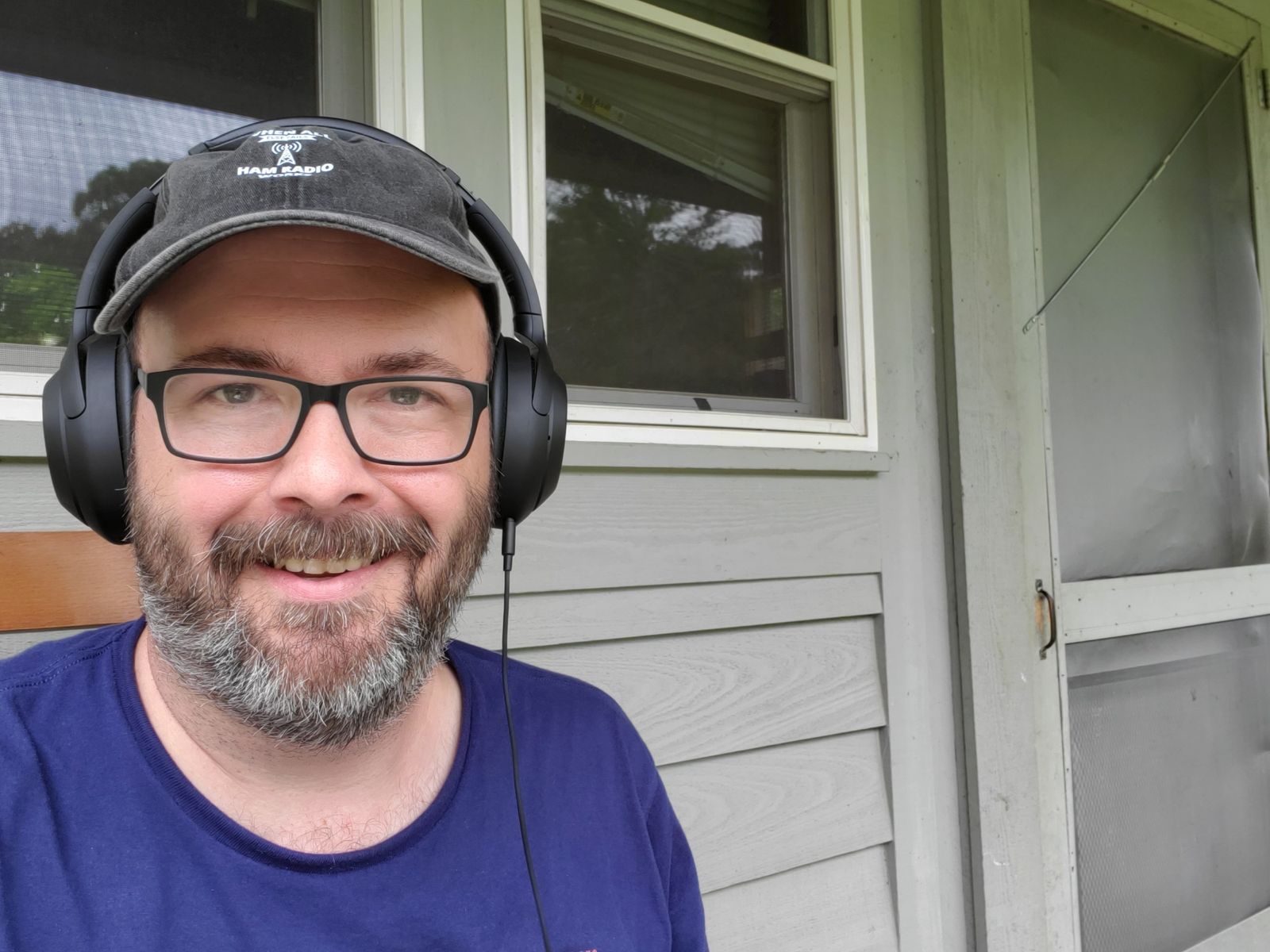
As the sun had set, things started to slow a bit, so I went out and re-tuned my radial and re-tapped my coil and decided to give 40m CW a go. I got my first response from North Carolina, followed by New York, Virginia, Florida, Pennsylvania, Virginia again, Ontario (Canada), Louisiana, New Jersey, Dominican Republic, another Ontario (Canada), Ohio, Delaware, and a Park to Park with POTA legend KE8PZN on SSB (very surprised I broke his pile-up with 10 W! -- a testament to his ability to hear multiple stations in a pile-up). By this time it was 10:04 local time and I decided to call it a night and get some rest for the day ahead. Besides, I had been getting eaten alive by some huge bugs that were attracted to the light of my computer, radio, and lantern. Time for sleep.
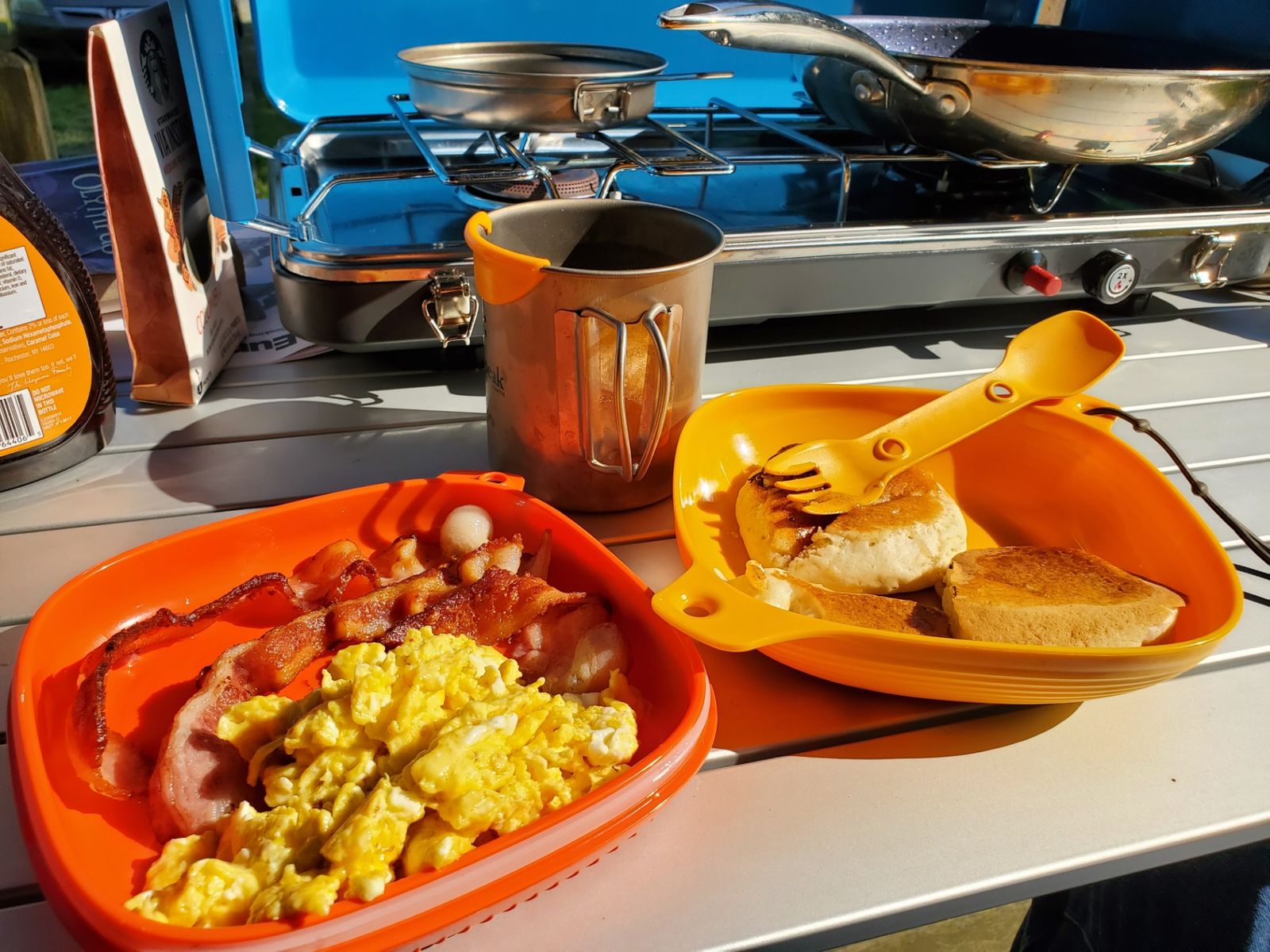
The next morning we had a traditional camp breakfast with all the trimmings: pancakes, eggs, bacon, coffee (for me), and hot chocolate (for my daughter). It was absolutely delicious. The more I use that Eureka Ignite Plus camp stove the more I love it. It is plenty spacious and the burners can be controlled just as well as those as home. Being able to boil water for coffee and cocoa while cooking breakfast is a wonderful thing, too. Once again we sat out on the porch together, avoiding the water all over the picnic table beside the cabin from earlier rain. We enjoyed a slow start to the day, great conversation, and good food.
As noontime rolled around (local time) I decided to get back on the air for a bit and see if I could get some more of the magic I had experienced just hours before. I set up camp on 20M CW and got my first response from Charlottesville, VA, followed by Louisiana, North Carolina, Wisconsin, Minnesota, Indiana, Illinois, Texas, Florida, Tennessee, North Carolina, Florida, Ontario (Canada), South Carolina, Texas, Arkansas, Ohio, Wisconsin, and Illinois.
Next I decided to give SSB a try and made contacts on 20m with Mississippi, Wisconsin, Michigan, Kansas, Florida, and a final contact with Wisconsin.

With the peak of the afternoon upon us we decided to head down to the lake and see about having a swim. This time the beach was guarded, so we had to get our wrist bands to enjoy the beach. Conveniently, right where we had to buy our admission was a snack stand with ice cream, so we availed ourselves of a tasty treat on the pavilion overlooking the beach. After enjoying our snack, we made it down to the beach and moments after getting in the water there was thunder which forced us to get back out again. We sat on the beach for a bit with my daughter enjoying some fun in the sand until we were once again allowed back in the water where we spent a good amount of time until more bad weather sent us back up the hill to our cabin. Still, a fun time was had by all.

Activation 2 QSO Map: Red Pins = SSB, Green Pins = CW / Green Lines = 40m, Blue Lines = 20m
That evening we decided to go out to a local restaurant and chose The Cove at Lake Anna. After a week without climate control, it was quite nice to be in an air conditioned space and we both enjoyed our dinners, both with ample portions. We enjoyed a leisurely dinner and by the time we got back it was already getting quite dark. My initial plan had been to get a third activation in before we were to depart the next morning for Williamsburg. I decided that with a full day ahead of me I would skip the second late shift and get everything packed up so we could make a fast departure the following morning and make it in time for the opening of Busch Gardens. Although it would have been fun to get another activation in the books, getting rest was the right decision. With two activations totalling 91 contacts (84 CW and 7 SSB) ranging from Alaska and Sweden in the North to Hungary in the East, and Puerto Rico to the South, all on 10 Watts, the activations can only be considered a smashing success.
Even more important, my daughter and I had a blast exploring a new park and getting time to swim and enjoy ourselves. So much fun.
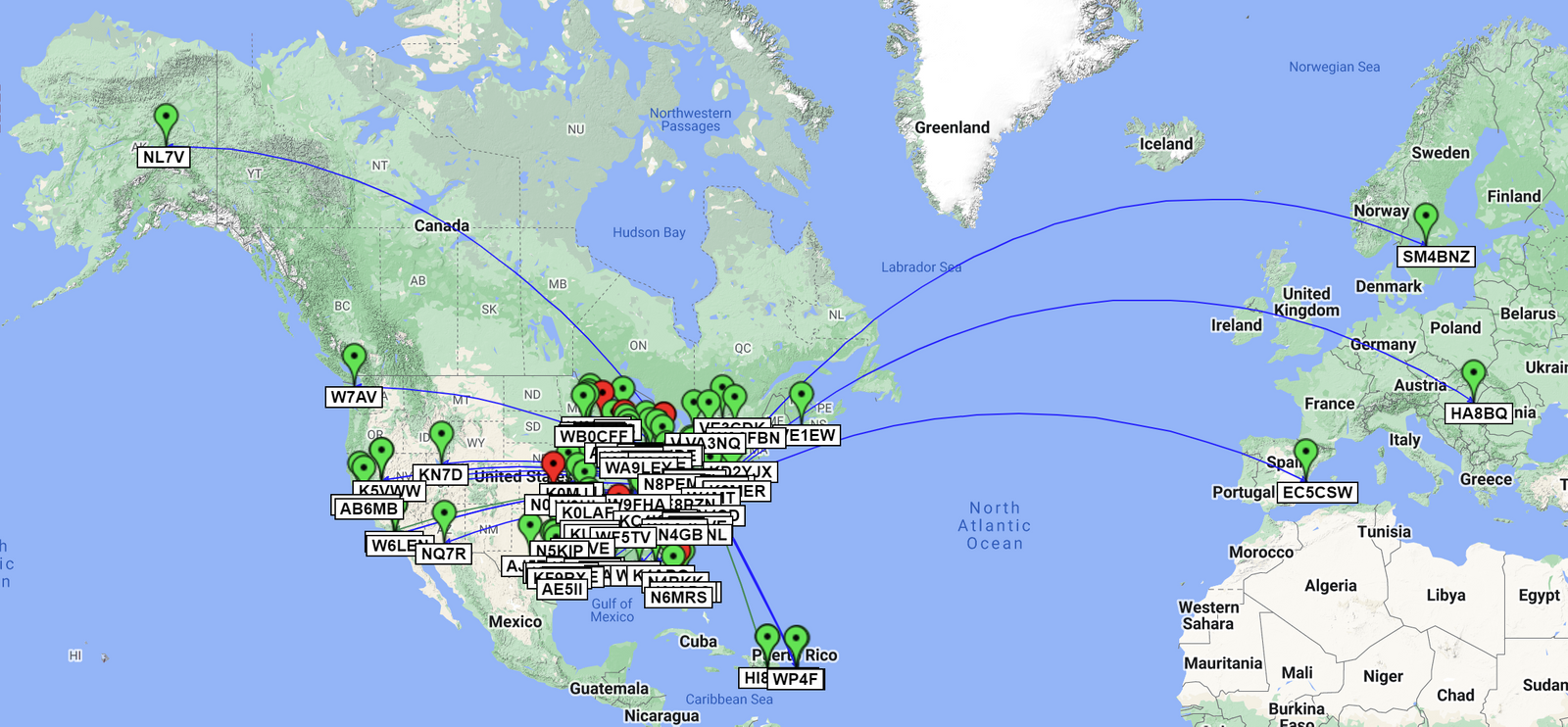
Overall Activation QSO Map: Red Pins = SSB, Green Pins = CW / Green Lines = 40m, Blue Lines = 20m
Gear used in this activation
- Icom IC-705
- Buddipole Buddistick Pro Antenna
- LDG Z100 Plus
- RigExpert Stick Pro Antenna Analyzer
- CW Morse Pocket Double Paddle Morse Code Key with Magnets
- CW Morse Steel Base for Pocket Paddles
- Icom LC-192
- Bioenno 12V 6Ah LiFePO4 Battery
- Sony Headphones
- Dell XPS 13 Laptop
- Rite in the Rain Notebook
- Zebra DelGuard Mechanical Pencil
- Hcalory 50L Portable Fridge/Freezer
Posted on August 9th, 2022
POTA Activation #23 - Lost River State Park (WV) (7/25/2022)
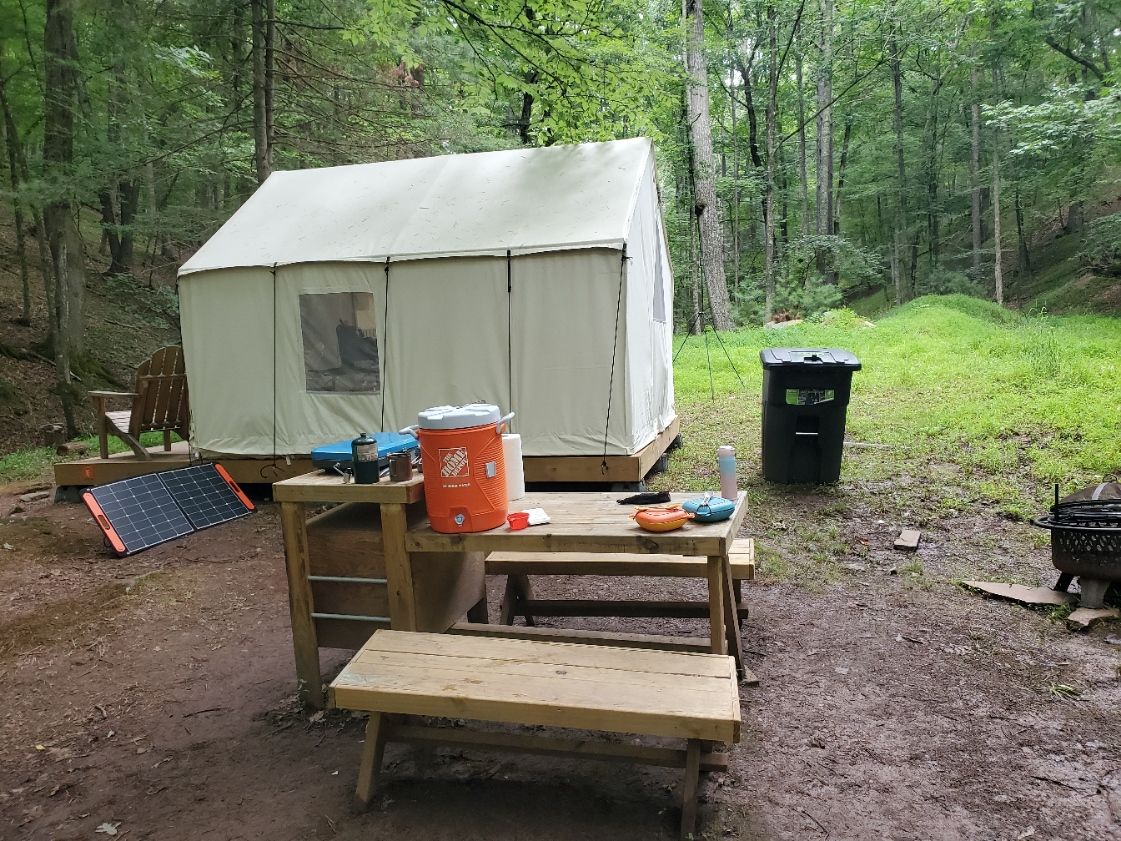
I have been having a lot of fun this Summer exploring new parks while doing POTA activations that I otherwise may have never visited. I get a kick out of reaching new milestones on my POTA profile, getting new states, more parks, and more contacts. Discovering new and unexpected natural beauty is also its own reward. When I activated the Lumber River State Park in North Carolina on a whim while driving home from a visit to Myrtle Beach, South Carolina, I took a look at my list of states activated and was thinking about ways to add more to the list.
On the week of 7/25 my daughter didn't have any Summer camps scheduled, so I decided to take the week off with her to go on camping trips and visit some amusement parks. The big question was "where to go"? We've always loved camping in Shenandoah National Park, but since I already activated it 3 times this year I went to the POTA web site and looked at other parks nearby. Just West of the VA/WV line I noticed a park that wasn't too far from home, but was in a state I had never activated before: West Virginia. The park was Lost River State Park and after a quick look at the park's web site I discovered that there were platform canvas tents available for rental and beautiful surroundings to be had. After consulting with my daughter I booked a tent and started to plan for our trip.
The plan was to get there Sunday afternoon, get situated, and spend two nights at the park. We left home during a heat wave where the heat index was in excess of 100 degrees Fahrenheit. When we arrived at Lost River State Park, the temperatures were absolutely delightful. I don't think it ever went above the low 80's and in the evenings the temperatures must have been in the 60s. The accommodations were quite nice for camping, with a bed and a sturdy and waterproofed canvas tent. This would be important for this trip as it would rain for much of our time at the park. Also at the campsite was a fire pit, a picnic table, and a standing table where you could cook with a cook stove.
After getting situated we went up to the main park offices and saw the big pool, which was to close in just 15 minutes. We asked what time it opened on Monday, but were disappointed to hear that it was closed. No pool for us at this park while we were there. After getting a bag of ice from the camp store to help our electric cooler make it for the two days we would be off the grid, it became clear that there were not many people in the park on this day. We practically had the place to ourselves. There were some clouds threatening, and they made good on their threats with rain and thunderstorms scattered throughout our stay. Thankfully our tent was up for the task and my daughter had packed lots of books and games for us to enjoy in the tent. Many a game of Uno and Sushi Go was played, so even though the hikes we had planned had to be skipped, we still had a great time together.
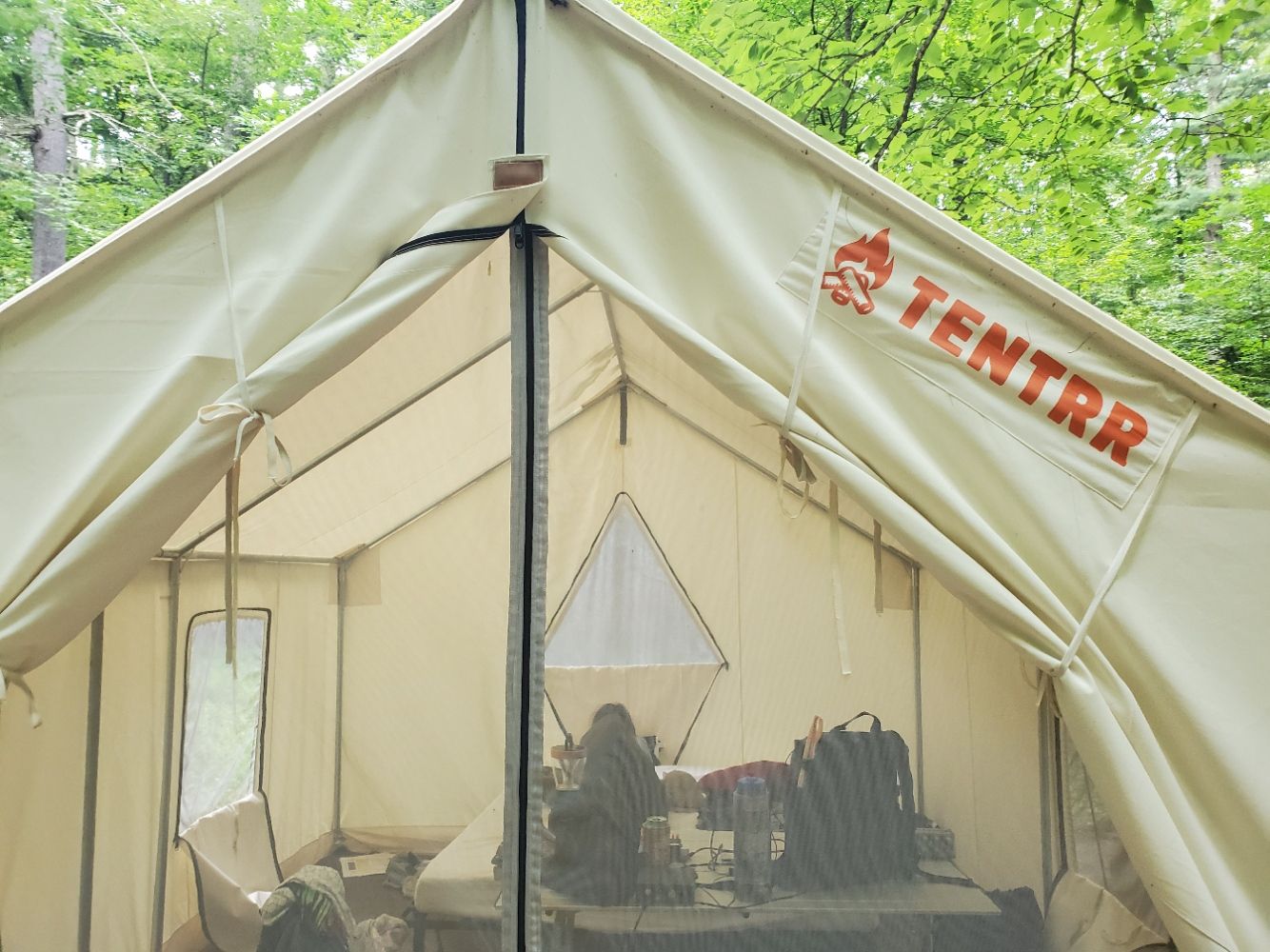
Once the new Zulu day had started, I decided to set-up my station in the tent to try activating the park. This would prove to be quite challenging, for several reasons. Due muddy conditions and tall vegetation, I elected to use the Buddistick Pro for my antenna. Our tent was large enough for me to setup everything else inside, which was very convenient. Our campsite was right in the middle of a valley between two very tall and steep hillsides. I was concerned about how my signal would get out with the topography. One of the biggest challenges was that I was fully reliant on the integration with the Reverse Beacon Network for spotting. I had scheduled my activation well in advance of my trip, but I didn't know what the cell service situation would be. Turns out, it was non-existent. Our phone (Verizon network) stopped working about a half hour before we made it to the park and we would not get a signal until we got back to Virginia after our stay. I hoped that the RBN integration would work, and my plan was to focus on CW, which would hopefully keep me near the top of the spots as I called CQ.
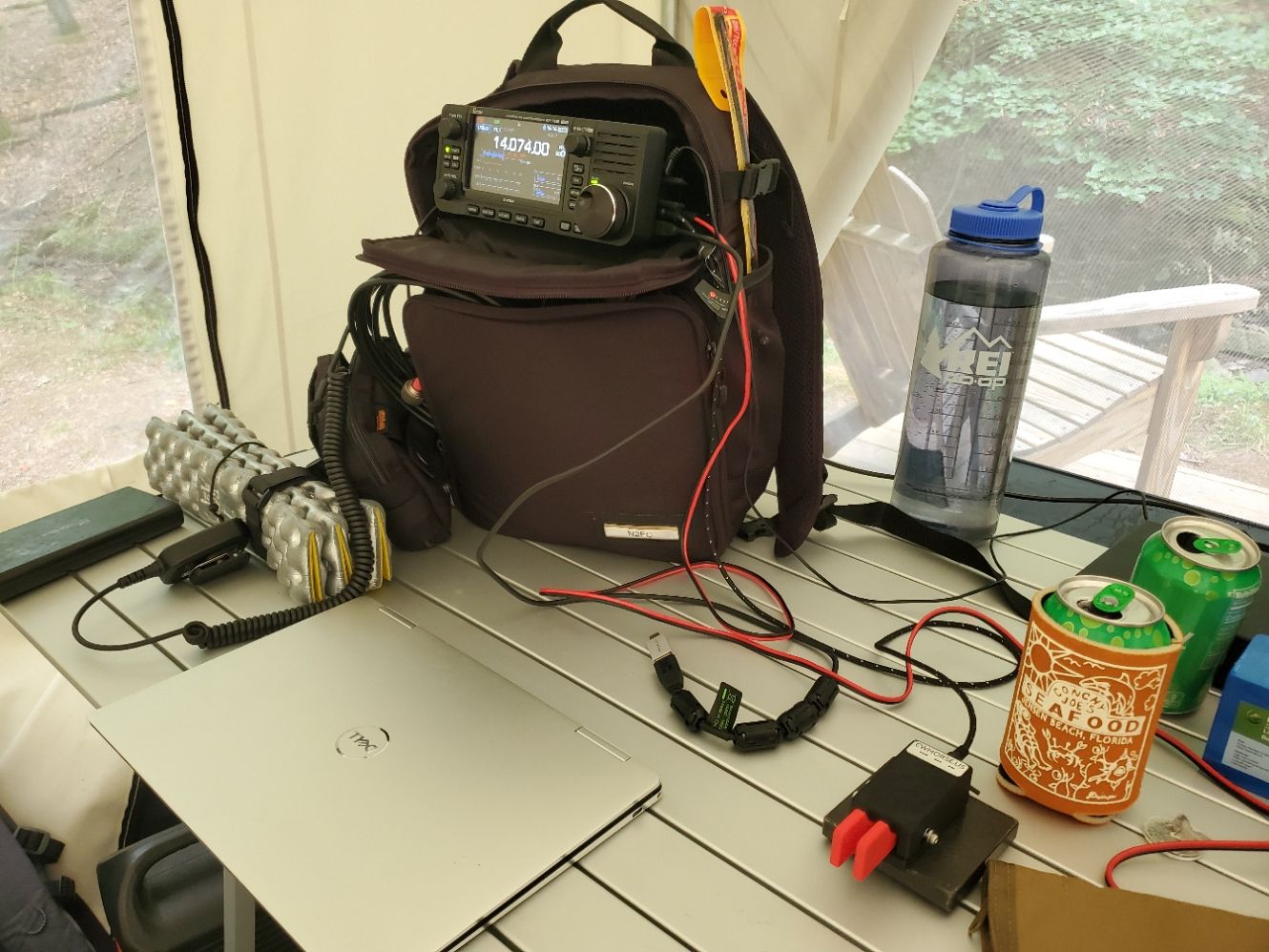
I decided to give 40m a try, given the time of day, and started calling CQ. After several minutes I got a response from a station near Atlanta and I thought to myself "Great, I've been spotted". That was not the case -- I should have asked the station to spot me. I continued calling CQ for nearly an hour and never got another call. Later I would look at the history on the RBN and would see that I had, in fact, been spotted on the RBN. So the integration with the POTA site must have been down (as sometimes happens). I was faced with the very real possibility that I might not be able to have a successful activation in West Virginia, after all. As darkness fell upon us, I decided to call it a night and see what the following day would bring.
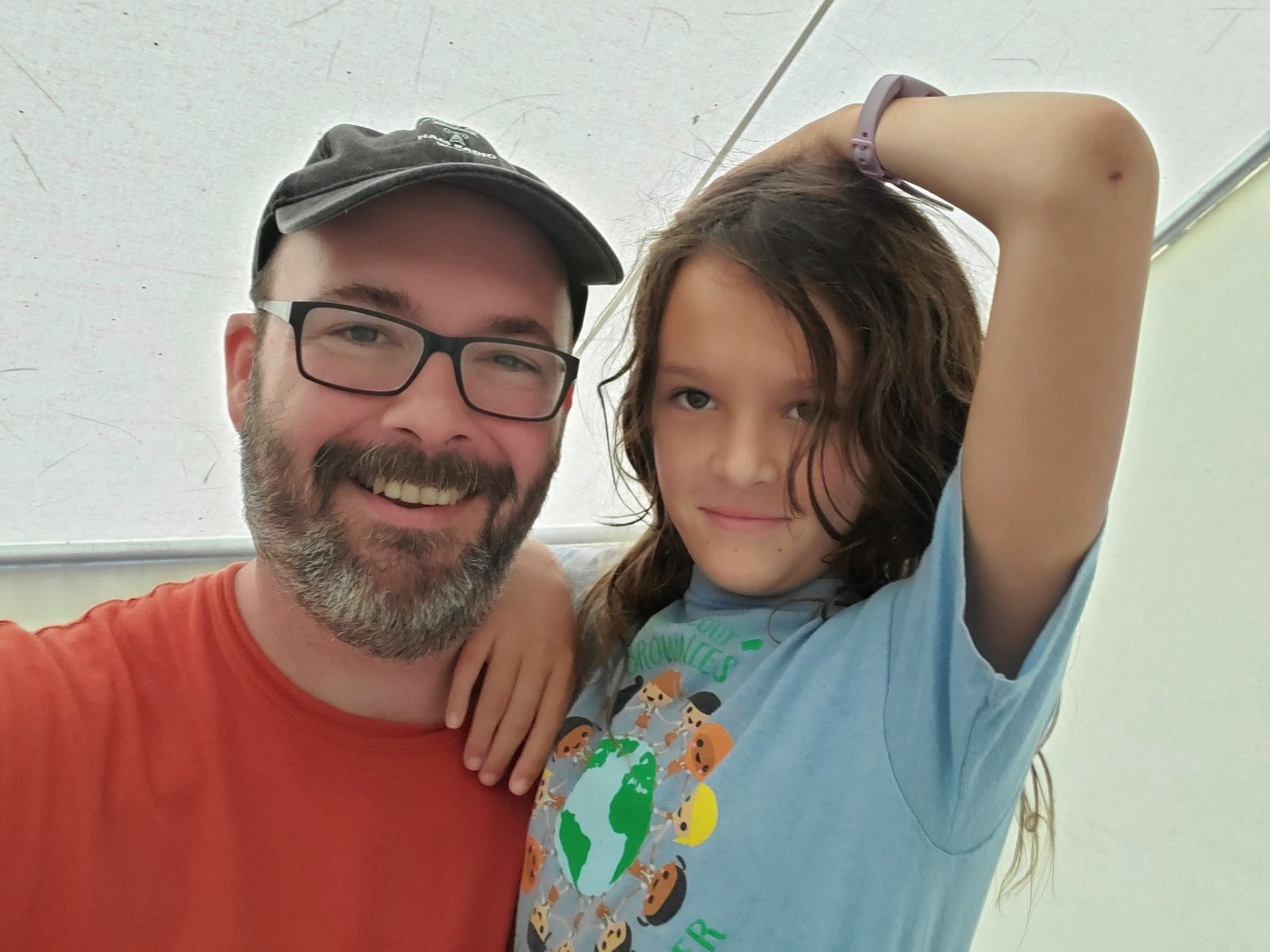
The next day we made a great big breakfast with pancakes, eggs, bacon, and hot chocolate for my daughter and coffee for me. It was a delicious feast. We attended to camp chores and did a little exploring around our campsite. The weather wasn't super cooperative, so we got in a lot of games and reading. While she read her books, I decided to give CW a go once again.

Once again, nothing. Not a single call. I had the one call the previous night, and knew it was down to Georgia ... so I must be getting out a little, right? Call after call went unanswered and I was beginning to think I was in an RF black hole. I switched over to 20m. With CW still fruitless, I decided to make the digital hail Mary pass and see if I could save the activation with FT8 before my laptop's batteries were depleted. I just needed to make 9 more contacts before the end of the Zulu day.
It was a slow start, but I eventually got a response from Wisconsin, then Virginia, Illinois, Georgia, Arkansas (Park to Park), Washington (state), Indiana, Michigan, and Ontario, Canada. 10 FT8 contacts in 46 minutes, a bit of a slog, but an activation saved nonetheless with 11 total contacts. I decided to leave well enough alone and skip doing a second activation in the park on the next Zulu day as I wasn't sure I would have enough power to complete another digital activation with my laptop and rig batteries. Instead my we focused on playing more games and enjoying our camp by the creek. Mission accomplished.
Lost River State Park was beautiful and surprisingly remote for how close it is to the Washington, DC area. I would like to go back and explore the trails it has to offer when it is less rainy. Even with the soggy conditions, the cool temperatures and quiet solitude were delightful. We had a lot of fun. If I were to attempt activating the park again, I would either set up the station near the ranger station (which has free wifi), get one of the cabins (which have wifi), or make very sure the RBN functionality is working.
The following morning we packed everything up and headed east for our second park, another new one to us in Virginia.
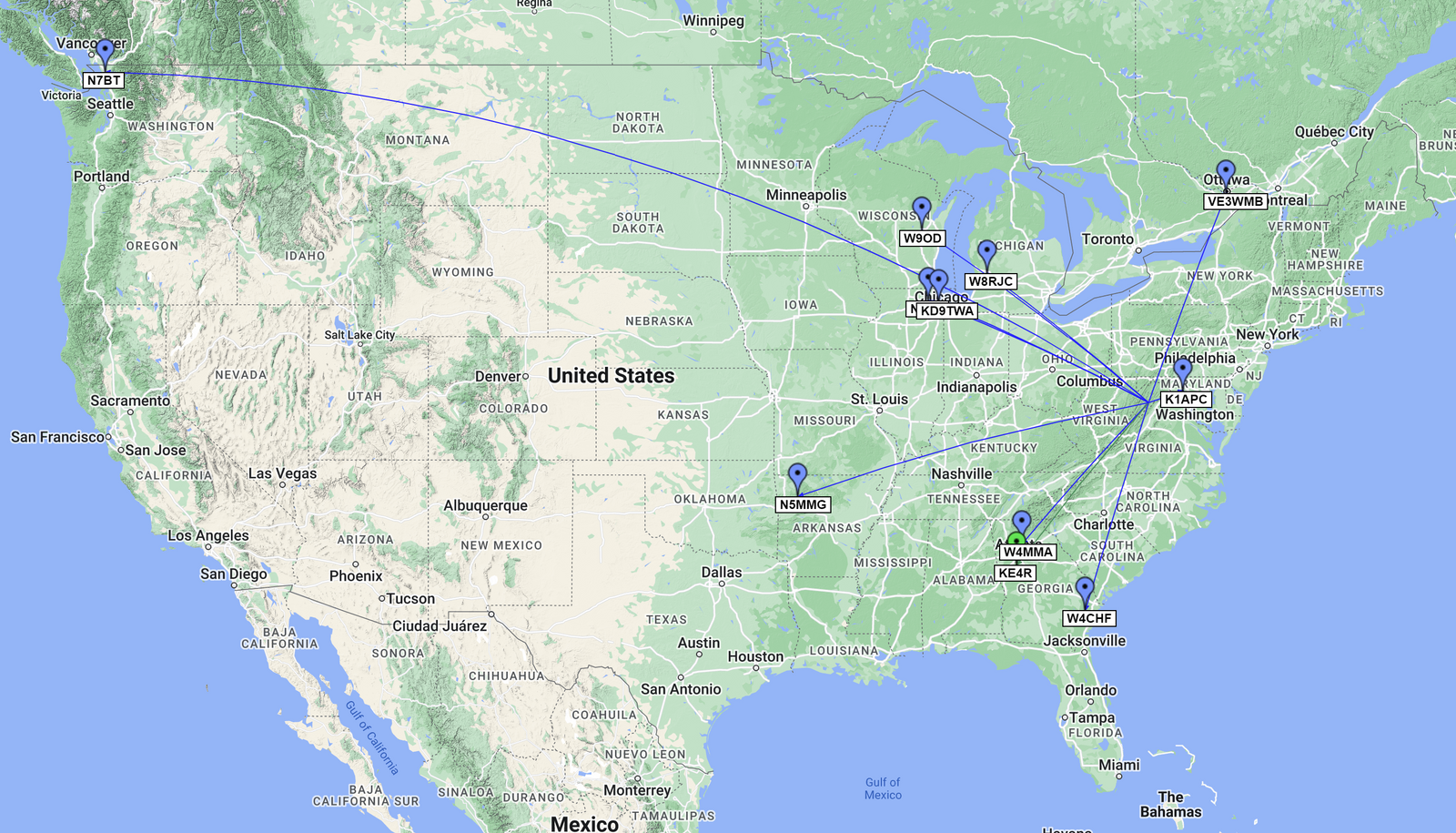
Activation QSO Map: Blue Pins = FT8, Green Pins = CW / Green Lines = 40m, Blue Lines = 20m
Gear used in this activation
- Icom IC-705
- Buddipole Buddistick Pro Antenna
- LDG Z100 Plus
- RigExpert Stick Pro Antenna Analyzer
- CW Morse Pocket Double Paddle Morse Code Key with Magnets
- CW Morse Steel Base for Pocket Paddles
- Icom LC-192
- Bioenno 12V 6Ah LiFePO4 Battery
- Sony Headphones
- Dell XPS 13 Laptop
- Rite in the Rain Notebook
- Zebra DelGuard Mechanical Pencil
- Jackery Explorer 500
- Hcalory 50L Portable Fridge/Freezer
Posted on August 9th, 2022
POTA Activation #22 - A 3-fer at Leesylvania State Park, Captain John Smith Chesapeake NHT, and Star Spangled Banner NHT (VA) (7/17/2022)
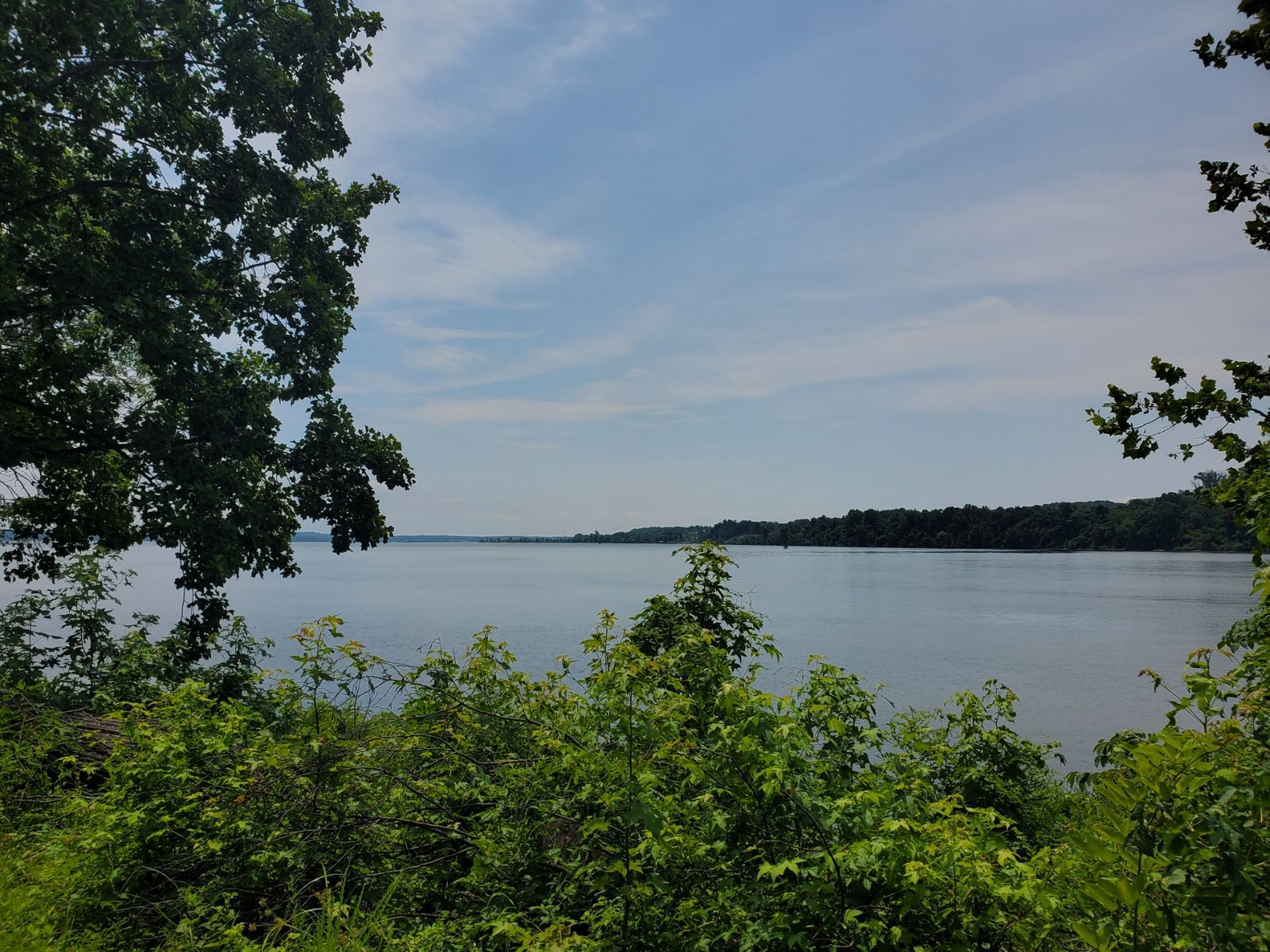
Driving down to Leesylvania State Park and being turned away due to the park being closed for being at capacity was frustrating. I was really looking forward to activating the park and scouting out locations for multiple park activations. The next day it became clear that I could have some time to give it another try, so I left before Noon, picked up a sub from Subway for a lunch in the park, put it in my new electric cooler, and decided to give it another try. If it hit another roadblock I would continue South to reactivate Prince William Forest Park. It was a reasonably hot and humid day, but in the shade it was pleasant enough. I brought a small ocean of seltzer to provide refreshment in my cooler, so I planned on spending a good chunk of time of the park, if I could get in.
As I got to the entrance of the park the sign that had flashed at me the previous day was dark, and I was able to continue to the entrance station, show my state parks pass, and enter. I was in! I asked the ranger for a map and scrutinized the road system in the park and the parking lots. It was becoming clear that the 4-fer I had hoped for would require a significant hike-in. Also, the areas by the water and the trail didn't have a lot of area to set up my station, so I decided to go for the 3-fer instead. I knew about the main parking area by the boat launch, but just before that I saw a turn-off to a car-top canoe launch and group campground. First I went by the group campground, but it wasn't clear if it would be okay to operate there, and anyway, it wasn't close enough to the water to get the other two parks. So I went to the canoe launch and parked at the last parking spot and got out to explore.
Immediately I saw an empty campground across from the canoe launch. I would later discover that the campsites were for campers who arrived by canoe. The reason they were empty was because in order to camp there, you have to canoe in from somewhere else. You can't do an out and back from the state park. There aren't a lot of options on that front. Later, I would talk to a ranger and he said he had only seen them occupied once. There is a part of me that would like to give it a go sometime -- I just would need to figure out a place to start from.
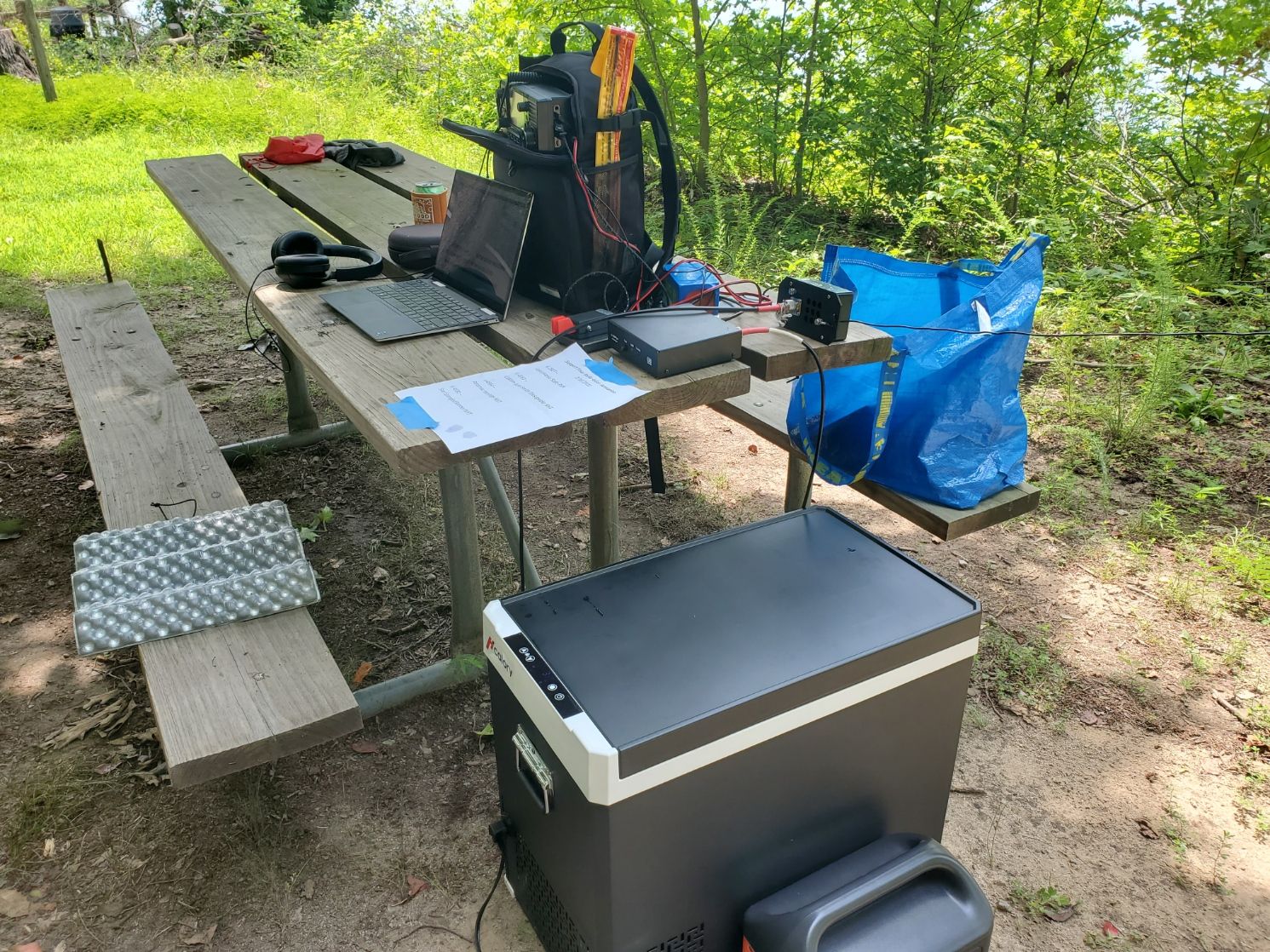
Between the canoe launch and the campground was a picnic table that had a nice bit of shade and some good trees for getting an antenna in the air. I quickly got all my gear out and set up my station. The bands seemed to be in better shape than the day before and I was hearing a lot of stations. I decided I wanted to see how many bands I could get on the air as an impromptu challenge. At 1700Z I was off, starting out on 20m CW. At first it was a bit of a slow-burn, but in time the rate picked up. Contacts came in from Michigan, Tennessee, Florida, Alabama, Georgia, Oklahoma, and Texas. After a bit of a lull, I decided to go onto the second band of the day: 40m. The contacts started rolling in from Kentucky, North Carolina, Virginia, Pennsylvania, New Jersey, Connecticut, Massachusetts, and Indiana. After another lull it was off to 30m to make contacts with Tennessee, Indiana, Pennsylvania, Utah, Missouri, and Illinois. After another lull, I switched to the 17m band and made contact with Florida, Louisiana, Alabama, and Texas.
Next it was up to the 15m band where I had contacts with Kansas, Texas, Mississippi, California (!), and Arizona -- amazing. That California contact was in the Los Angeles area, so truly a coast-to-coast affair. I gave 12m a try, but had no luck. Then I went to 10m, and my CW calls went unanswered. Curious if the band was just dead I tuned to the FT8 frequency and heard signals, so I decided to hook up the laptop and give it a go. I heard a few stations from South America, and after several attempts I was able to make a contact with a station in Venezuela! Another band in the log. I tried FT8 on 12, but still no luck, so I was thinking what other bands could I do?
Looking on the spots, I saw a station on CW on 60m. Even though my end-fed half wave is 40-10, I decided to see if my tuner could tune up on one of the 60m channels. Sure enough, it could. I could not hear that station calling CQ, but I hopped to another channel on 60 and started calling CQ myself. Pretty quickly I got a contact with a station in Ohio. Another band in the logs. Quickly I started to hear multiple other stations calling me, but I noticed something out of the corner of my eye. A truck had pulled up by my operating location and a park ranger was walking out, waving at me. I had to leave those stations hanging (sorry if you were one of them) and talk to the ranger.
He introduced himself and said he remembered me from the day before. When we had been turned away I had mentioned our intent to operate a special event, and the park manager who he had been with mentioned that if we had a special use permit, we would have been let in, even if the park was closed. The ranger asked me if I had acquired the special use permit, and what the process was like. I told him that I had interpreted what the park manager had said was optional and a way to ensure access, not a requirement for being there. I explained what I was doing and showed him the setup. He seemed genuinely interested and he told me that as far as he was concerned what I was doing was fine and that I was likely the "least problematic person in the park today". We talked about the park, and I found out that the park regularly closes on weekends due to capacity issues, it wasn't a one-off. In fact, I was lucky to get in when I did as it is often full by the time I entered.
Evidently, there was a person who was there when the gates opened in the morning (officially at 6, but in practice at 5) who had arrived at midnight and slept in his car to be the first one in the park. He said he was going to report back to the park manager what we had discussed, but that he didn't see there being any problems. I told him I wanted to make sure I was doing the right thing and was happy to change what I was doing if there were any issues. He never came back, so everything must have been all good. The ranger was a really nice guy and it was interesting learning more about the park and what it has to offer.
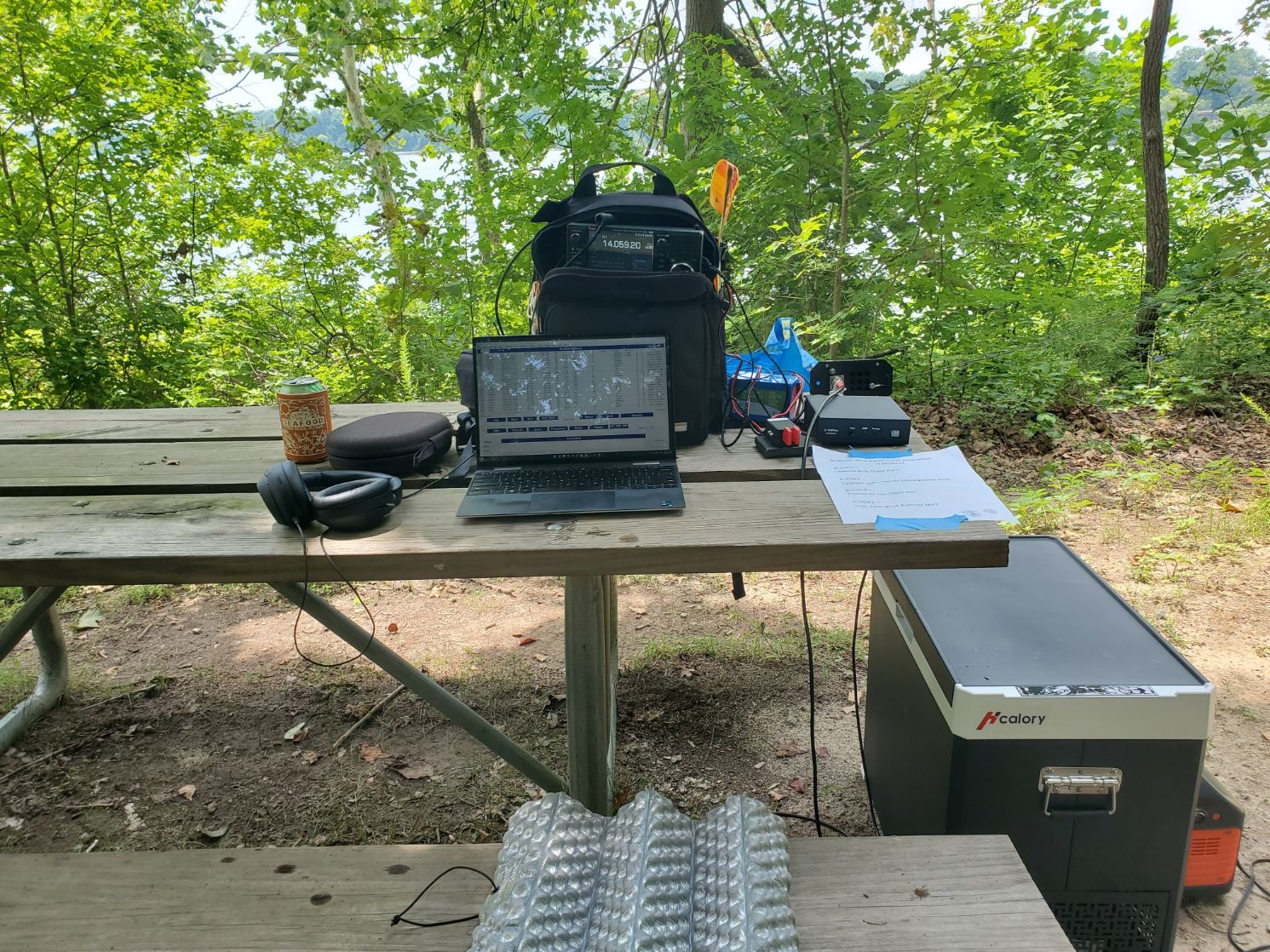
I decided to re-spot on 60m and see what else I could work and made contact with Pennsylvania, Maryland, and North Carolina. Having done a full run of the bands, I decided to switch over to SSB on 40m to see what I could do and made contact with Pennsylvania, Virginia, New York, Indiana, North Carolina, New Jersey, Tennessee, South Carolina, Ohio, Massachusetts, Vermont, Maryland, Michigan, Connecticut, Ontario (Canada), and Georgia. Quite the run. Since the band was working so well, I decided to give CW another go on 40m and worked Connecticut, South Carolina, North Carolina, New Jersey, Ohio, and Florida.
Next I gave a try to 20m, and got a contact with Texas. Then I gave 30m a go and contacted Illinois. Finally, I went back to 40m CW and had one last run contacting Kentucky, Wisconsin, Virginia, Rhode Island, Connecticut, Maryland, New York, Ohio, West Virginia, and finally North Carolina. I would have kept going ... but a storm was moving in and the previously still air became a stormy blast of air that quickly dropped in temperature as dark clouds moved toward me. With those huge wind gusts I worked to disconnect my radio and get the electronics protected and then got the antenna down as fast as I could and drove over the car so I could quickly load everything. I lucked out -- there were a few rain drops visible on the car windshield, but while in the park the soaking rains never came. I got everything loaded, made sure to leave the area cleaner than I found it, and then drove off from my beautiful operating site. I did a loop of the park to explore a bit before heading home. I definitely want to come back and hike some of the trails, and I would love to operate from the same location again. It was wonderful
This was by far my most successful activation to date. In total I made 108 contacts on 7 bands (60m, 40m, 30m, 20m, 17m, 15m, 10m) in 3 countries and 2 continents with 69 on CW, 38 on SSB, and 1 on FT8. Since it was a 3-fer those count for 324 contacts, 207 CW, and 3 FT8. I also made quite a few Park to Park contacts on this outing, including one with a 2-fer that counted for 6 contacts in one QSO. In all, I was on the air for 5 hours and 23 minutes and had a whole lot of fun.
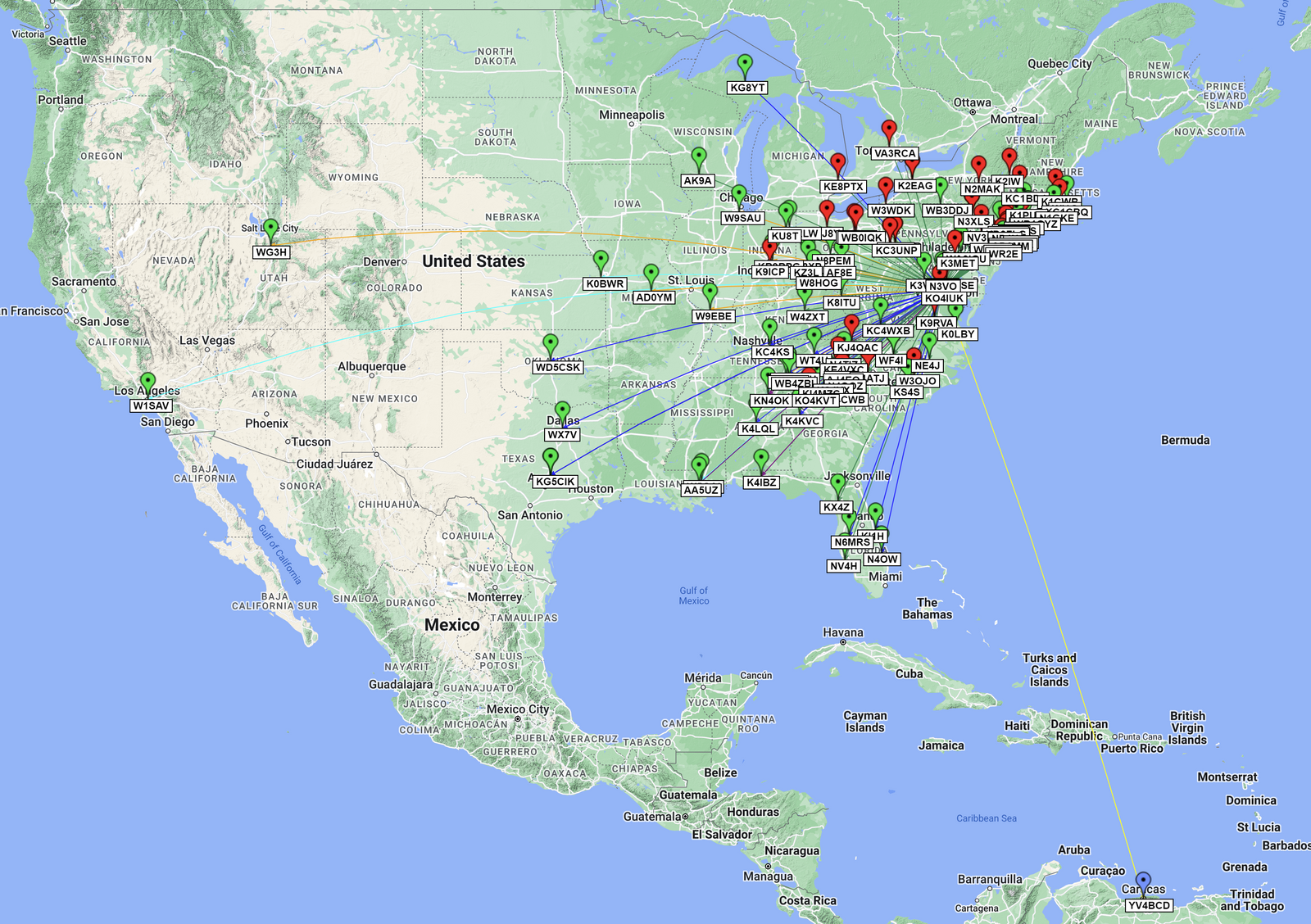
Activation QSO Map: Red Pins = SSB, Green Pins = CW, Blue Pins = FT8 / Black Lines = 60m, Green Lines = 40m, Orange Lines = 30m, Blue Lines = 20m, Purple Lines = 17m, Cyan Lines = 15m, Yellow Lines = 10m
Gear used in this activation
- Icom IC-705
- MFJ 1984 MP End-Fed Half Wave Antenna
- LDG Z100 Plus
- CW Morse Pocket Double Paddle Morse Code Key with Magnets
- CW Morse Steel Base for Pocket Paddles
- RigExpert Stick Pro Antenna Analyzer
- Icom LC-192
- Bioenno 12V 6Ah LiFePO4 Battery
- Sony Headphones
- Dell XPS 13 Laptop
- Rite in the Rain Notebook
- Zebra DelGuard Mechanical Pencil
- Jackery Explorer 500
- Hcalory 50L Portable Fridge/Freezer
Posted on July 18th, 2022

